

Gifu Prefecture. Shirakawago sightseeing. Event information
- Briefly about Shirakawa-go
- Shirakawa-go weather
- Announcements&Events

Group travel arrangements
Search facilities at once!

Check-in date
Number of people per room
Number of nights
Number of rooms
EVENT Shirakawago event information

WHAT'S’ NEW News from tourist association
2024/03/11 (Mon)
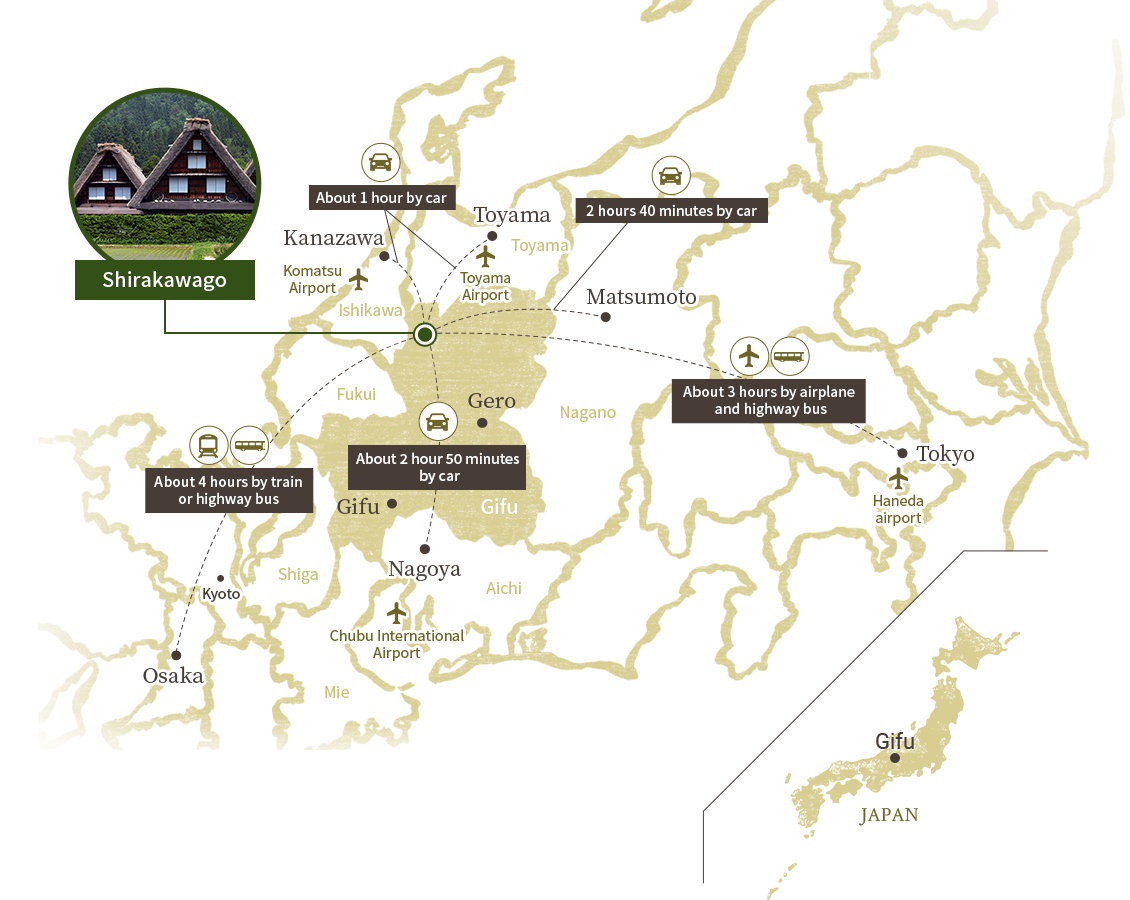
Shirakawago Gassho-zukuri Village, which is registered as a The World Heritage Site, has over 100 large and small-size of Gassho-zukuri building, and it is known as a village where people are live their lives and continuing existence the traditional way of life. In addition, there are many hidden gem and sightseeing spots around where you can experience the traditional wisdom and skills , and the magnificent nature that you should visit, such as "Hirase Onsen"

See Shirakawa-go attraction

You can choose variety inns near Shirakawago. Please enjoy your stay.

You can enjoy the local dishes using local ingredients, including Hida style crafts and products.

You can thoroughly enjoy the culture of Shirakawa-go by visitting the historical buildings.

Shirakawago is surrounded by nature, mountains and river. Come to refresh yourself here.

Supporting each other, Hometown of people's hearts
Shirakawago (ogimachi village) in Gifu Prefecture is known as a village of Gassho style house. More than 100 large and small-size of Gassho style building are remain and people are still live in there . In 1995 it was registered as UNESCO World Heritage Site. It's said that not only for its buildings and landscapes which was registered but also the activities of mutual assistance rooted among the residents as well. It is a place where you can feel Japan's traditional scenery back in the good old days of Japan, and a place where you can deeply feel the ural culture way of life.
STAY Spend quietly times in unexplored areas Hirase Onsen/World Heritage Site stay You can relax in Shirakawa-go, where you can feel the traditional's atmosphere. Variety choices of accommodation, including the traditional Gassho-style house and the popular inns.
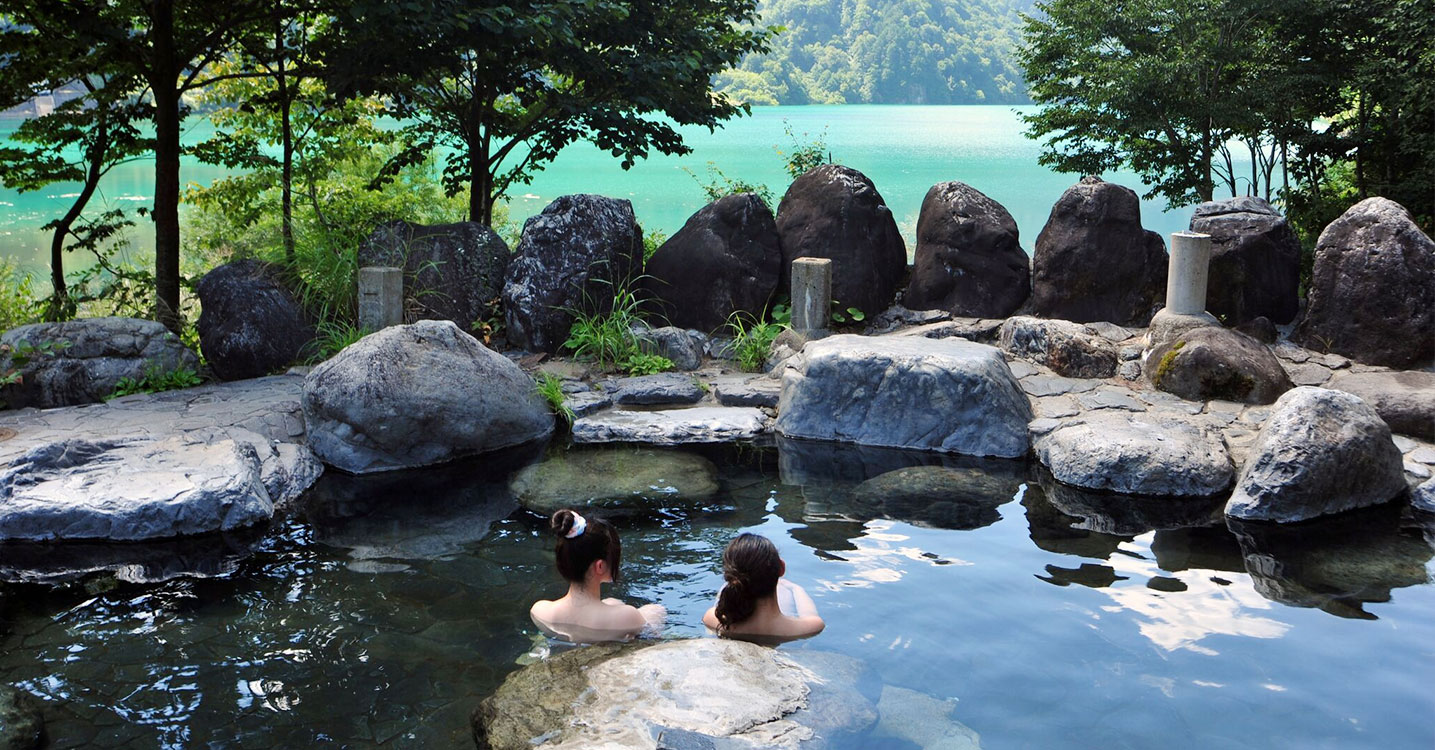
EXPERIENCE An experience which is possible in Shirakawa-go Feel the nature in spring, summer, autumn and winter You can experience the magnificent nature of Shirakawa-go in four seasons. We have a wide variety of activities and tours, please come to enjoy the nature experience.
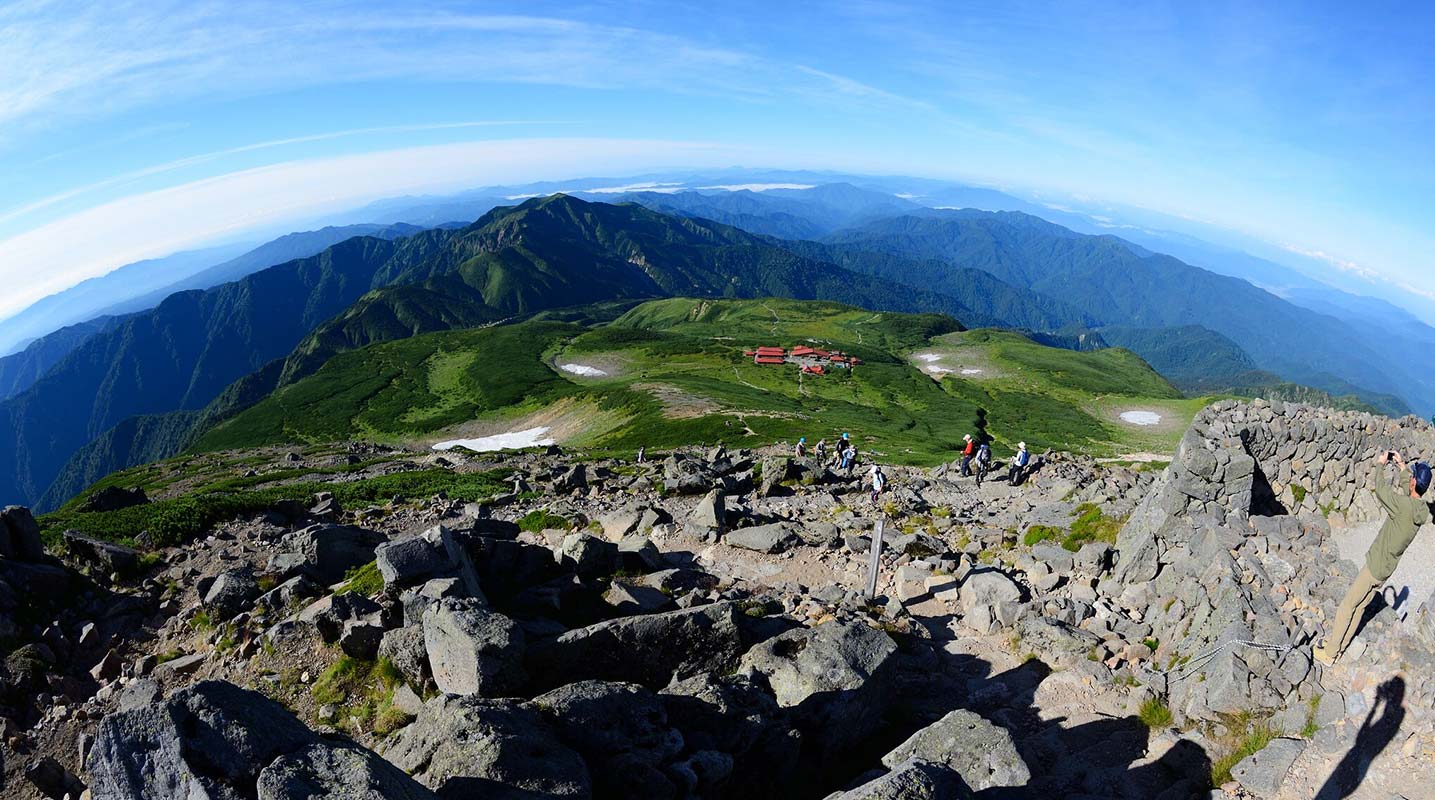
Room reservation in Shirakawago
Tours&Activities
- Documents request
- Download documents
- Notation based on Specified Commercial Transaction Law
- Privacy policy
- Download Shirakawago photos
- Live camera

Shirakawa-go: What To Do, When To Visit? Complete Guide
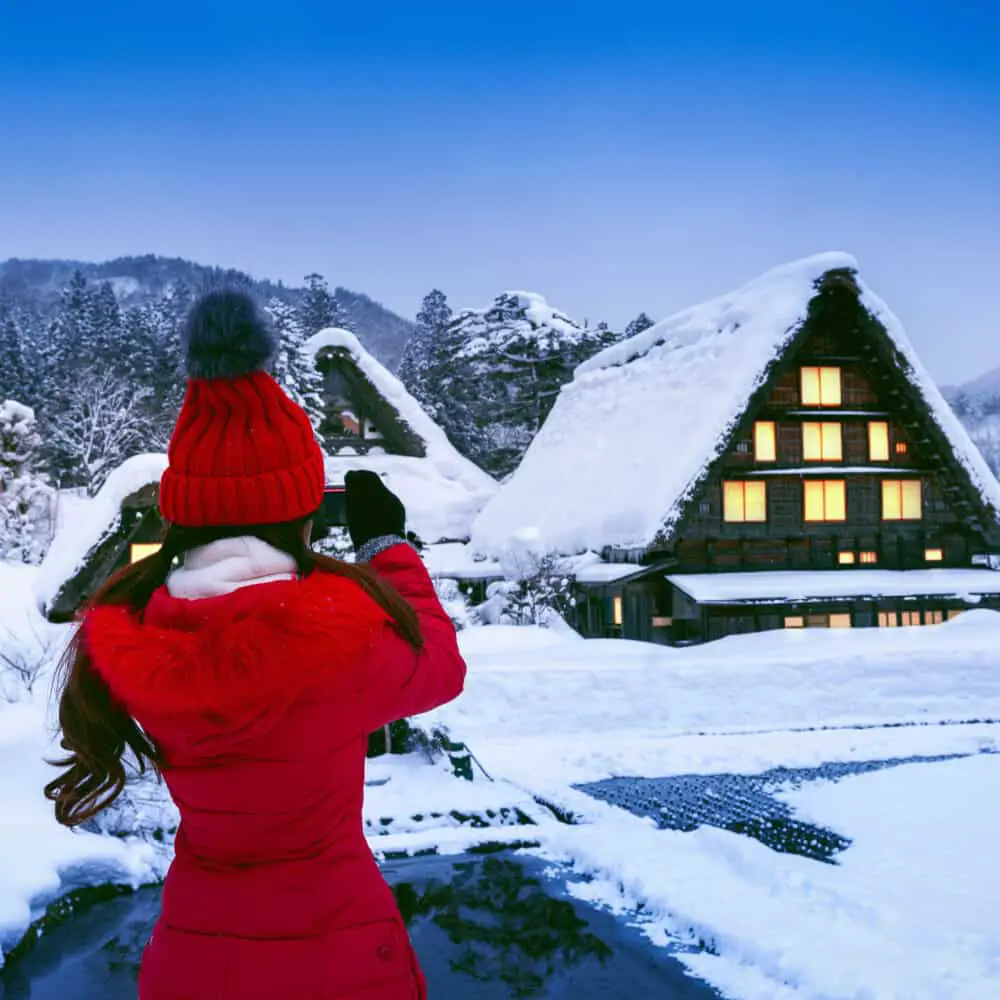
Shirakawa-go, meaning White River Old District is a popular village set in the Gifu prefecture of Central Japan. It features traditional thatched houses called the Gassho-Zukuri that are believed to have been built in the late 17th century.
Inspired by the build of the steep roofs, Gassho-Zukuri means “constructed like hands in prayer” as the locals believe that these homes resemble how Buddhist monks put their hands together when praying. In 1995, the Gassho-Zukuri houses were officially added to the UNESCO World Heritage list for their history and uniqueness.
The best time to visit Shirakawa-go is in autumn. This time of year is perfect as the temperature isn’t hot and the village isn’t too busy. The locals also hold festivals during fall so there are always activities to do for people of all ages.
Of late, Shirakawa-go earned a name for itself thanks to its picturesque sights with lush greenery and mountains surrounding the narrow streets of the village. They’re also famously known for their acres of rice paddy fields, all of which fully grow in between spring and summer.
At Shirakawa-go, the locals lead a quaint and quiet lifestyle, creating a relaxing atmosphere for the tourists who visit.
It’s the ideal vacation spot if you’re looking to escape the regular hustle and bustle of city life and perhaps stay for a few days to recharge your soul before heading out again.
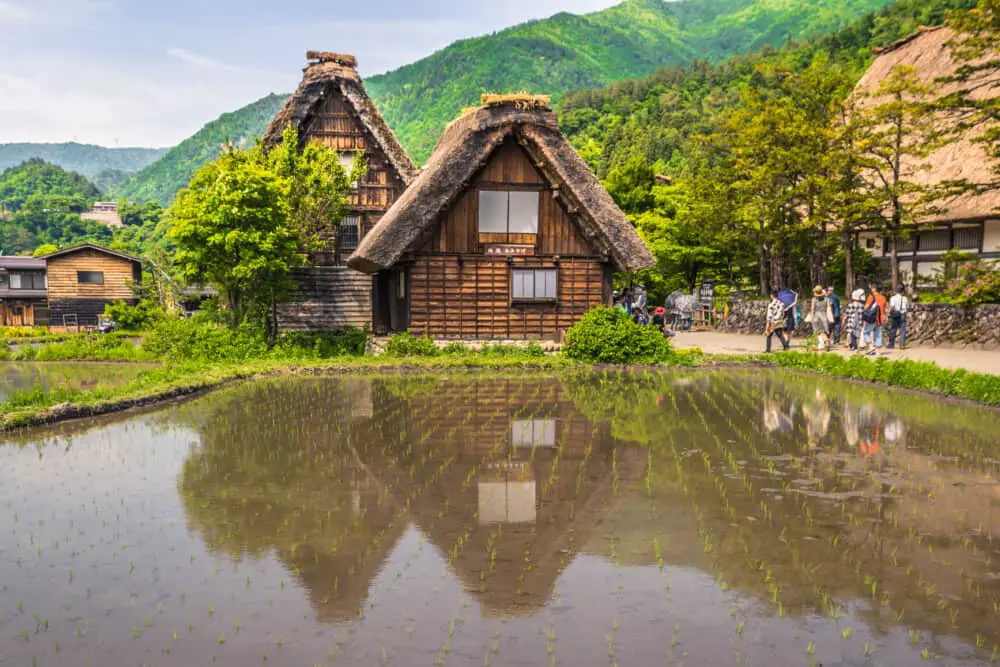
How do I get to Shirakawa-go?
Despite its countryside location, making your way to Shirakawa-go isn’t too difficult.
Depending on where you’re coming from, a trip to Shirakawa-go would typically take between 1 to 3 hours. This makes the village an ideal stop to visit even if you’re just looking for a day trip, although there are plenty of guesthouses and inns that would welcome you for a night’s stay.
If you’re heading to Shirakawa-go from Tokyo, the easiest way is to hop on the Hokuriku Shinkansen that takes you to Toyama for ¥13,000 per way. This journey will take approximately 150 minutes.
Once you’ve arrived at the Toyama station, you can then transfer to a bus that will take you to Shirakawa-go for ¥1,730 per way. This ride will take approximately 90 minutes and stops in the heart of the village.
From Kanazawa
A journey from Kanazawa to Shirakawa-go only takes 75 minutes via the hourly highway buses from the Nohi and Hokutetsu Bus operators.
Each of these rides would cost ¥2,000 for a one-way ticket, or a round trip ticket for ¥3,600. You may however have to pre-book your tickets as seats are numbered and limited.
To make your way to Shirakawa-go from Kyoto, you will have to first make your way to Kanazawa. The JR Thunderbird takes you from Kyoto to Kanazawa in 2 hours and costs between ¥6,490 to ¥7,000 per way.
However, if you have a Japan Rail Pass, these costs are fully covered by the pass. From there, you’ll just have to hop on the highway buses and be whisked away to Shirakawa-go in 75 minutes.
While there are no direct ways for you to reach Shirakawa-go from Osaka, a quick transfer at Kanazawa will take you there. To kick-start this journey, you’ll just have to take the JR Thunderbird for approximately 2.5 hours from Osaka to Kanazawa.
This ride will cost between ¥7,260 to ¥7,500 but is completely covered by the Japan Rail Pass if you are a pass holder. Once you have arrived Kanazawa, simply take the highway buses that leave every hour and you’ll be in Shirakawa-go in the next 75 minutes.
What’s the best time to visit Shirakawa-go?
With Shirakawa-go, there isn’t a specific “best time” to visit as it’s beautiful year-round. Instead, you might want to plan your vacation around what you would most like to see when visiting. Here’s what you can expect to see across the seasons in Shirakawa-go:
- Spring: Spring in Japan typically stretches across March to May. It is one of Japan’s most popular seasons as you’ll be able to catch the cherry blossoms in full bloom. Pack up for a picnic and enjoy a session of “hanami” or flower viewing as the locals do at the local park. You’ll also be able to visit the rice paddy fields in full growth and watch as rice harvesting takes place.
- Summer: Come summer in June to August, you’ll be welcomed to Shirakawa-go through its lusciously green trees that line the streets. With warmer temperatures and blooming flowers, a summer in Shirakawa-go is ideal for anyone looking to spend their days in the sun.
- Fall: Between September to November, you’ll get to watch as the leaves turn into a bright golden-yellow. Streets will be lined with fallen leaves, and festivals crowd the public parks around. In my opinion, you’ll get to experience Shirakawa-go at its best as it isn’t too hot or too cold for a town walkabout.
- Winter: In the winter, snow blankets the villages and sights of Shirakawa-go, turning the village into an unforgettable winter wonderland. As temperatures dip between December to February, you’ll also see rivers freeze so it’s best to tread the streets with care.
If you’re looking to explore the village with other tourists, the months of May, August, September, and October are the most popular.
The village is however open year-round, so if you’re looking to avoid the crowd, you should make your plans away from those months.
What to wear when visiting Shirakawa-go?
As the seasons change, so does the fashion in Shirakawa-go.
Typically, I would always encourage you to dress comfortably and bring along a light jacket in case of rain.
The only exception to Shirakawa-go’s fashion happens in winter when the temperature can dip below zero. I recommend that you bring along a thick, wind, and rainproof jacket if you’re visiting between the months of December to February.
Snowfall is also expected across the village in winter, and this could cause slippery road conditions for first-time visitors. To avoid any unwanted accidents, it’s best to bring along shoes or boots with good grip that could keep your feet warm.
Where do I stay in Shirakawa-go?
Thanks to its fame as a tourist attraction, more and more homes at Shirakawa-go have since been transformed into places you can stay at. One of the best experiences that I can recommend is to book a night (or two!) at any of the Gassho-Zukuri homes in the village.
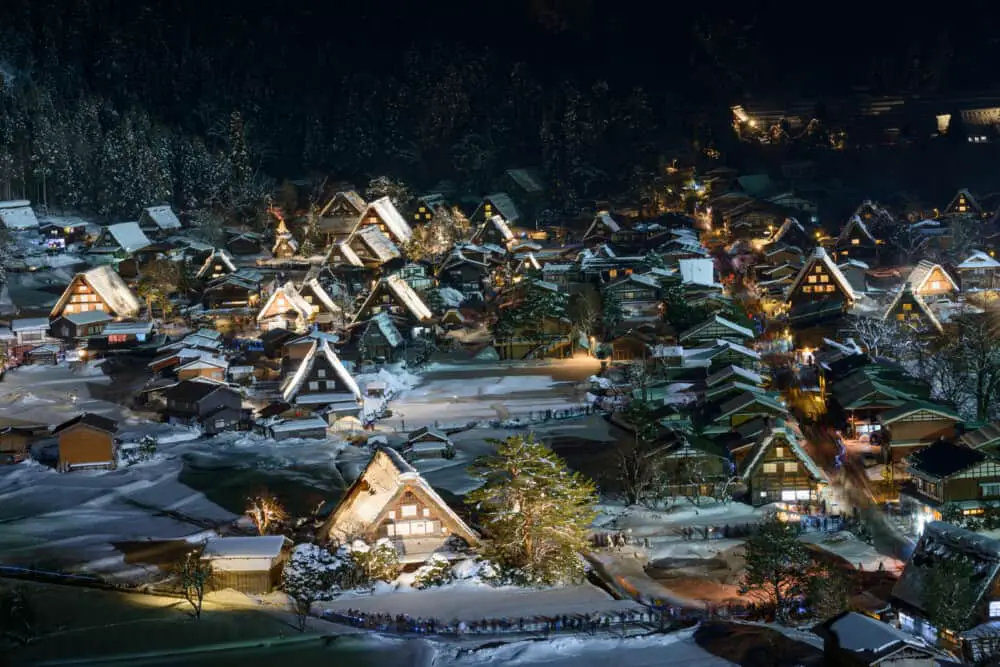
Gassho-Zukuri
Many of the Gassho-Zukuri houses around Shirakawa-go are now family-run minshukus or hostels. Through a night’s stay, you’ll get to experience life as the locals do such as sleeping on futons at night and sitting on tatami mats in the day.
You may have to share the bathrooms and toilets with the other guests or even the hosts, but the experience is as authentic as it gets.
Most stays would also include a specially prepared Japanese dinner and breakfast, made with locally sourced ingredients according to what’s fresh for the season. Prices are usually charged per person and can start from $75 and up, depending on your host for the night.
Tousukenoyu Fujiya
Tousukenoyu Fujiya is a traditional guesthouse located in the heart of the village.
There are 3 different room types to pick from including a large room to accommodate family stays.
Down by the bath, you’ll be pampered by the natural sulfurous hot springs that flow into a Japanese cypress tub.
If you prefer something a little more private, a personal open air-bath area can be arranged with the guesthouse staff.
With room rates starting from $180 a night, Tousukenoyu Fujiya is a guesthouse that promises a peaceful stay with an unforgettable Japanese atmosphere.
Shirakawa-go no Yu
If you’re looking to further relax and unwind during your visit to Shirakawa-go, why not book yourself a stay at the local hot spring inn?
Shirakawa-go no Yu is a bathhouse and inn that’s located in the world heritage area for your convenience. Featuring tastefully designed rooms, Shirakawa-go no Yu dons heaps of cypress wood for a relaxing atmosphere inside and out of the inn.
Day visits are also available at Shirakawa-go no Yu, so you may occasionally bump into non-residents while you’re out and about.
A stay at Shirakawa-go no yu starts from $100, although you may have to pre-book your stay months ahead as they have limited rooms available.
Shiroyamakan
Established in 1884, Shiroyamakan is slated as one of Japan’s most important historical buildings.
Owned by locals of Shirakawa-go, there is a limit of 4 groups per night at the Shiroyamakan Inn so you can rest easy with little disturbance.
Down by the basement, guests would also be pampered by the naturally clear spring water accessible through the year.
A night’s stay at Shiroyamakan typically starts from $180.
Ant Hut is the perfect spot if you’re looking to travel on a budget. With rooms starting from $36 a night, you’ll be provided with necessities such as complimentary toiletries and WiFi across the whole guesthouse.
Do note however that you may have to share the bathrooms and toilets with the other guests who are staying the night.
If you need any tips on making the most out of your trip to Shirakawa-go, feel free to ask the friendly staff.
What is there to see or do in Shirakawa-go?
Although it is located far out from the bustling cities such as Tokyo or Osaka, Shirakawa-go still features an abundance of places to see and things to do.
With its laid-back vibes and old-time charm, Shirakawa-go is one village in Japan you need to have on your list of the next place to visit in Japan.
Tourist Information Center
For first-time visitors, you’ll want to visit the Shirakawa-go Tourist Information Center for insider tips on the village.
Finding it is easy, as you’ll simply have to spot the Gassho-Zukuri house that’s located beyond the river past Shirakawa Kaido Street.
Here, you’ll be able to learn more about the history of Shirakawa-go and seek help if you need any.
Shirakawa Kaido Street
The Shirakawa Kaido Street is a tourist haven with souvenir shops aplenty.
If you’re feeling hungry, there are also make-shift stalls along the street offering local snacks prepared fresh daily. I especially recommend the Hida beef skewer if you come across it, as you’ll be treated to a melt-in-your-mouth beef skewer for approximately ¥500. This is thanks to Hida beef’s naturally high-fat content, allowing for an unforgettable meal when you arrive at Shirakawa-go.
The Shirakawa Kaido Street is also known as the main street, making it a good meet up point for visitors in case anyone is lost. At the end of the street, you’ll find the public hot spring in the Shirakawago no Yu.
Gassho-zukuri Minkaen
The Gassho-zukuri Minkaen is an open-air museum capturing the life and times of locals who lived in Shirakawa-go in the past. It features a total of 26 buildings within the space, with 9 of the buildings being listed as an important cultural asset to the Gifu prefecture.
Here, visitors would be taken through a historic journey of ancient Japan while being cradled in a relaxing natural environment.
A watermill, shrine, and temple hall can also be found nestled within the Gassho-zukuri Minkaen. If you’re feeling tired, then be sure to drop by the soba restaurant offering hand-made soba within the museum or pop into any of the shops within the open-air museum to bring home a souvenir or 2.
A small fee is required per entry, with discounted tickets available for children.
Shiroyama Viewpoint
Located north of the village center, the Shiroyama Viewpoint offers a bird’s eye view of the Shirakawa-go village and its farmhouses.
The entrance to the viewpoint on a regular day is free. During the special Shirakawa-go Winter Light-Up event, however, visitors will have to pay ¥1,000 per person and pre-book their spot at the Shiroyama Viewpoint.
This is to prevent overcrowding and to provide visitors with the best experience possible.
The Shiroyama Viewpoint is reachable on foot via a trail up 15 to 20 minutes from the village center.
Subsequently, you may hop on a shuttle bus that stops by the Wada-ke House, although you’ll be expected to pay a small fee to do so.

Wada-ke House
The Wada-ke House is the largest Gassho-Zukuri there is in Shirakawa-go and once belonged to the Wada family .
Inside, you’ll be able to see the life that the Wada family had once led, with the original fittings of this Japanese home still in one piece.
There is a ¥300 entrance fee per person and the house is reachable through a shuttle bus that starts from the village center.
Myozenji Temple and House
If you’re interested in immersing yourself in the culture of Shirakawa-go, then the Myozenji Temple and House is a spot you can’t miss .
Unlike regular temples with tiled roofs, the Myozenji Temple features a thatched roof, much like the Gassho-Zukuri around the village.
Next to the temple, you’ll also find the Myozenji-ke farmhouse that doubles as the priest’s home.
A small fee is required to enter the temple and farmhouse, with much of the proceeds being used for the upkeep of the establishment.
For anyone feeling particularly adventurous, you could consider a hike up Mount Haku. Also known as Hakusan to the locals, Mount Haku is a volcano offering beautiful views of the region.
Open for hikes year-round except in Winter, a hike up to the summit of Mount Haku regularly takes 7 hours up and down and is a satisfying way to add some extra excitement to your trip in Shirakawa-go.
Hanging out on a volcano is something that freaks me out, but it’s hard to experience for most people outside of Japan so why not give it a shot?
Winter special: Shirakawa-go Winter Light-Up
For visitors dropping by Shirakawa-go in the winter, watching the Shirakawa-go Winter Light-Up is a must-do.
Happening on selected Sunday and Monday evenings, this light-up event sees most of the village’s Gassho-Zukuri lit from 5.30 pm to 7.30 pm.
Amid the snow background, this winter light-up creates a postcard-perfect view for tourists to remember the village by.
As the light-up event has become increasingly popular over the years, it’s recommended that you pre-book your visit to ensure your spot in entering the village. This is as the locals wish to control the number of visitors in the village, allowing for a safer and better experience for everyone.
Top 10 things to buy in Shirakawa-go
Aside from picturesque places to visit, Shirakawa-go is also home to numerous handcrafts that make for a great souvenir.
You can often see them available for sale in gift shops that line the streets of Shirakawa-go’s villages.
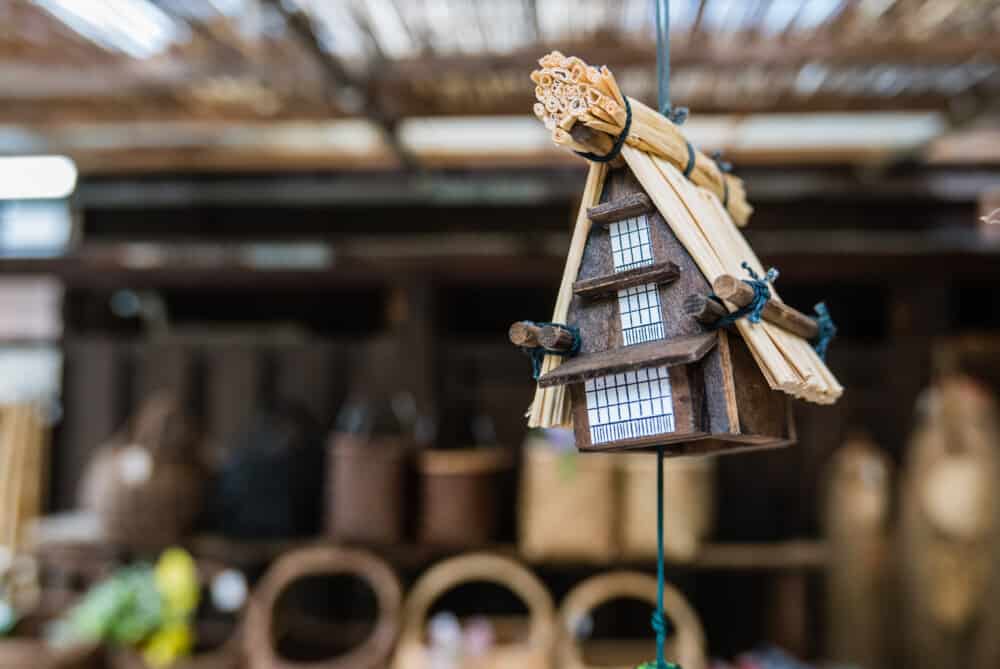
In case you need a guide on what’s available to buy however, here are some of my top picks on what to buy in Shirakawa-go:
- Ota-san-chi no Soba: Loosely translated as Mr. Ota’s buckwheat noodles, these noodles are made with buckwheat grown from the village itself. They’re mixed with plain flour sourced from Japan before being packaged beautifully, making them an ideal gift from your time at Shirakawa-go.
- Rice flour waffles: Waffles from Shirakawa-go are made using a type of rice flour called the Koshihikari rice flour and are freshly baked by hand daily. They complement well with a scoop of ice-cream or with a cup of freshly brewed coffee.
- Yuigokoro sake: While there isn’t a sake brewery located in Shirakawa-go itself, the Yuigokoro sake prepared in Hida City is actually made from sake rice and spring water sourced from the village. It’s smooth to taste and easy to drink, making it an ideal starter’s sake for anyone looking to begin their journey of sake enjoyment.
- Shirakawa-go Yamitsuki Noko Cheesecake “Yui”: The cheesecake from Shirakawa-go is truly a community effort as it’s a product created after months of testing and feedback from the locals. The result is a rich and moist cheesecake and the Japanese character “Yui” that brands the product represents the relationship of the locals helping each other.
- Shiso Monaka: The shiso monaka or perilla wafer cake is a dessert that boasts a history of over 50 years. It features rice wafers made locally sandwiching a red bean paste with perilla leave kneaded inside, making it a unique dessert that every tourist should try.
- Onkochishin.com Handicrafts: These handicrafts are said to have been a Shirakawa-go tradition, featuring weaving and handicraft techniques from the Edo era. Items such as flowers recreated from old kimono cloth and other everyday life necessities make these handicrafts worthy of a purchase.
- Tofu: Made by soaking beans and allowing them to harden, there are various popular renditions of tofu that you can bring home from Shirakawa-go. These include the Ishi Tofu that is ideal for soups, Shirakawa Gassho Age or fried tofu that can be eaten as is and the Miyama Komo Tofu that is boiled using an old recipe seasoned with a secret seasoning.
- The Woodwork of Kokichi Hori: Made by a local of Shirakawa-go, these woodwork handicrafts are made with strong woods that are native to the village. Bring home a piece for your display, or if you’d like, they also make for a great souvenir to your family and friends.
- Hida Shirakawa-go Specialty Rice Ramen Noodles: Bring home a taste of Shirakawa-go with you with these locally produced rice ramen noodles. Made with fresh Shirakawa rice from the rice paddies and water sourced from Mt. Hakusan, these rice ramen noodles are gluten-free and chewy to bite when prepared properly.
- Shirakawa-go Emaki: Available across the village, these traditional postcards feature paintings by artists born and raised in Shirakawago. They make great reminders of your escapade at Shirakawago or if you’d like, you can even mail them home from the local post office that’s set in the heart of the village.
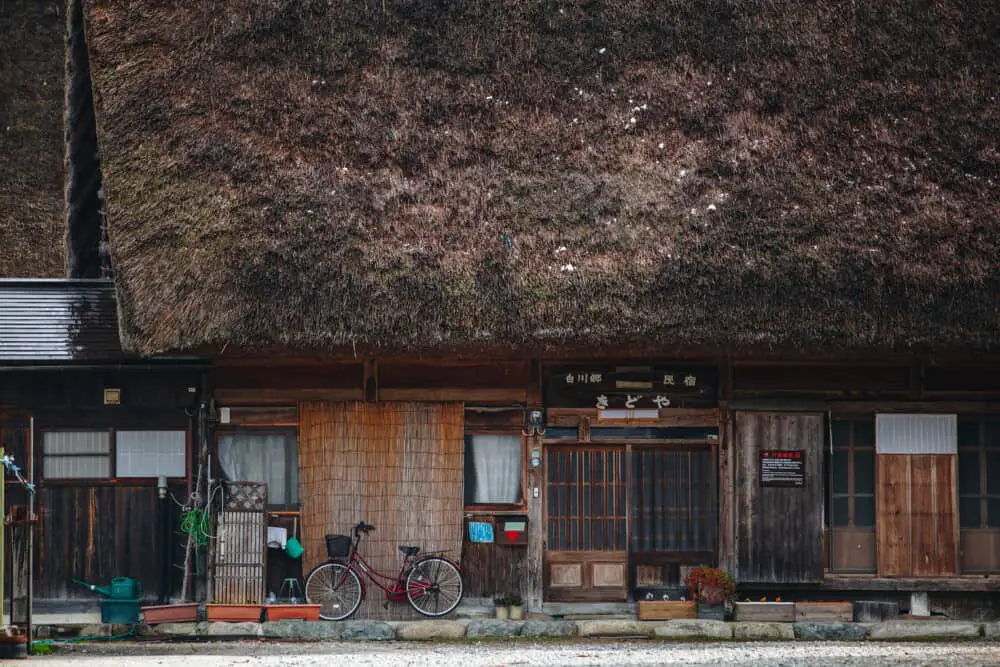
So, is Shirakawa-go worth visiting?
With lots to do, tons to eat, and much more to see, Shirakawa-go of the Gifu prefecture is definitely a place worth visiting. While the commute into the village may feel long, you’ll be treated to picturesque and unrivaled views along your way.
If you’re not keen to stay the night, Shirakawa-go is also an ideal spot to spend your day although you may have to be extra picky on the attractions you want to see.
If you feel uncomfortable traveling alone into the village, you could always hire a tour guide who could provide you plenty more insider tips to enjoy the legendary Shirakawa-go.
Just your average irresponsible human who spends most of his free time and money traveling Japan. Love the food, culture, and sights but not a huge fan of anime until I used it for studying purposes. Can't decide which is better out of ramen or pizza.
Recent Posts
What Makes Kyoto So Special? A Visitor's Guide To Kyoto
Kyoto, Japan is the last of Japan's original ancient capitals. It's a truly historic place with a rich history of appreciation for the arts and the beauty of its natural assets. Although Kyoto has...
25 Special Things That Make Japan Unique
Sure, we've seen movies with stereotypical Japanese references, but what makes Japan unique? Keep reading because we'll dig deep into the 25 "things that make Japan, Japan." Japan offers its...
- Media & Industry
- Meetings & Events
- Select Language 简体中文 繁體中文(香港) 繁體中文(臺灣) India (English) Bahasa Indonesia 한국어 ภาษาไทย Tiếng Việt Singapore (English) Philippines (English) Malaysia (English) Australia/New Zealand (English) Français Deutsch Italiano Español United Kingdom (English) Nordic countries(English) Canada (English) Canada (Français) United States (English) Mexico (español) Português العربية Japan(日本語) Global (English)
- India (English)
- Bahasa Indonesia
- Singapore (English)
- Philippines (English)
- Malaysia (English)
- Australia/New Zealand (English)
- United Kingdom (English)
- Nordic countries(English)
- Canada (English)
- Canada (Français)
- United States (English)
- Mexico (español)
- Global (English)
- Fujiyoshida
- Shimonoseki
- Ishigaki Island
- Miyako Island
- Kerama Island
- Tokyo Island
- Koka & Shigaraki
- Hida Takayama
- Ginza, Nihonbashi
- Beppu & Yufuin (Onsen)
- Ginzan Onsen
- Nagasaki Islands

- Kumano Kodo
- Shikoku Karst
- Amami Oshima
- Hachimantai
- Omihachiman
- Aizuwakamatsu

- Diving in Japan
- Skiing in Japan
- Seasonal Flowers in Japan
- Sustainable Outdoors
- Off the Beaten Track in Japan
- Scenic Spots
- World Heritage
- Home Stays & Farm Stays

- Japanese Gardens
- Japanese Crafts
- Temple Stays
- Heritage Stays
- Festivals and Events
- Theater in Japan
- Japanese Tea Ceremony
- Cultural Experiences in Japan
- Culture in Japan

- Local Cuisine Eastern Japan
- Local Cuisine Western Japan
- Local Street Food
- Japan's Local Ekiben
- Japanese Whisky
- Vegetarian and Vegan Guide
- Sushi in Japan Guide
- Japanese Sake Breweries

- Art Museums
- Architecture
- Performing Arts
- Art Festivals
- Japanese Anime and Comics
- Japanese Ceramics
- Local Crafts

- Scenic Night Views
- Natural Wonders
- Theme Parks
- Samurai & Ninja
- Iconic Architecture

- Wellness Travel in Japan
- Japanese Ryokan Guide
- A Guide to Stargazing in Japan
- Relaxation in Japan
- Forest Bathing (Shinrin-yoku)

- Experiences in Japan
- Enjoy my Japan
- National Parks
- Japan's Local Treasures
- Japan Heritage
- Snow Like No Other
- Wonder Around Japan

- Visa Information
- Getting to Japan
- Airport Access
- COVID-19: Practical Information for Traveling to Japan
- Anime Tourism
- Countryside Stays
- Accessible Tourism
- Hokkaido Great Outdoors
- Scenic World Heritage in Tohoku
- Shikoku’s Nature and Traditions
- Southern Kyushu by Rail

- Traveling by Rail
- How to Travel by Train and Bus
- JR Rail Passes
- Scenic Railways
- Renting a Car
- Sustainable Travel in Japan
- Travel Brochures
- Useful Apps
- Online Reservation Sites
- Eco-friendly Accommodation
- Luxury Accommodations
- Traveling With a Disability
- Hands-free Travel
- How to Book a Certified Tour Guide
- Volunteer Guides
- Tourist Information Center

- Japanese Manners
- Spring in Japan
- Summer in Japan
- Autumn in Japan
- Winter in Japan
- Cherry Blossom Forecast
- Autumn Leaves Forecast

- Japan Visitor Hotline
- Travel Insurance in Japan
- Japan Safe Travel Information
- Accessibility in Japan
- Vegetarian Guide
- Muslim Travelers
- Safety Tips

- JAPAN Monthly Web Magazine
- Arts & Cultures
- Nature & Outdoor
- Festivals & Events
- Insider Blog
- Things to do
- Local Guides
- Food & drink
- Traditional
- Hokuriku Shinetsu

My Favorites
${v.desc | trunc(25)}
Planning a Trip to Japan?
Share your travel photos with us by hashtagging your images with #visitjapanjp
- Shirakawa-go
Shirakawa-go 白川郷
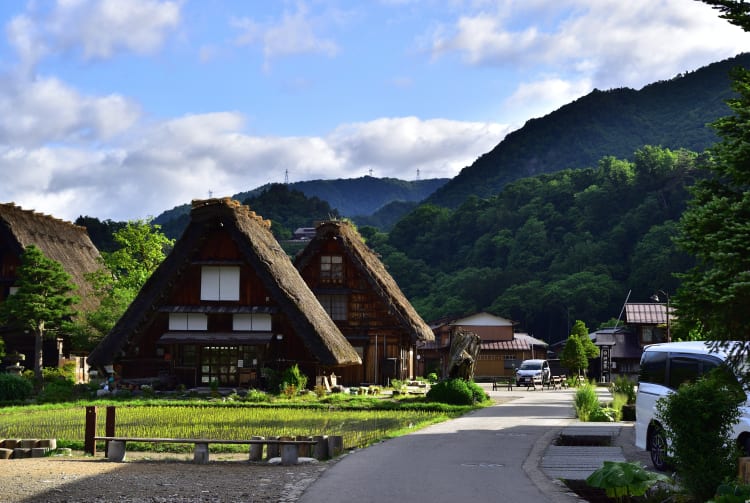
Ono-gun, Gifu-ken
- View on Google Maps
- Get Transit Info
Visit a fairy-tale village of traditional thatched-roof houses and step back to a bygone era
- Staying overnight in an authentic Japanese farmhouse
- The traditional gassho-zukuri style houses, which were used to produce much of the silk in the Hida region
How to Get There
Shirakawa-go is best accessed by bus from Takayama.
From Nagoya and Gifu take the JR Takayama Line to Takayama. Buses to Shirakawa-go leave from the Takayama Bus Center and take around 50 minutes.
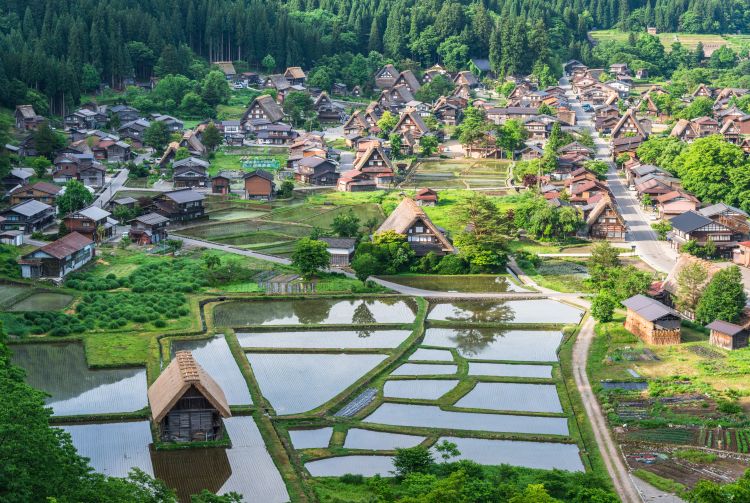
Start at Ogimachi
Shirakawa-go Ogimachi is the largest hamlet of gassho-zukuri style houses in Japan. The name gassho-zukuri literally means "like praying hands."
Each house is a masterpiece of carpentry. They are built without nails—every beam slots neatly into the next. The structure is so sound that these houses have stood since the 1800s, even in this earthquake-prone nation.
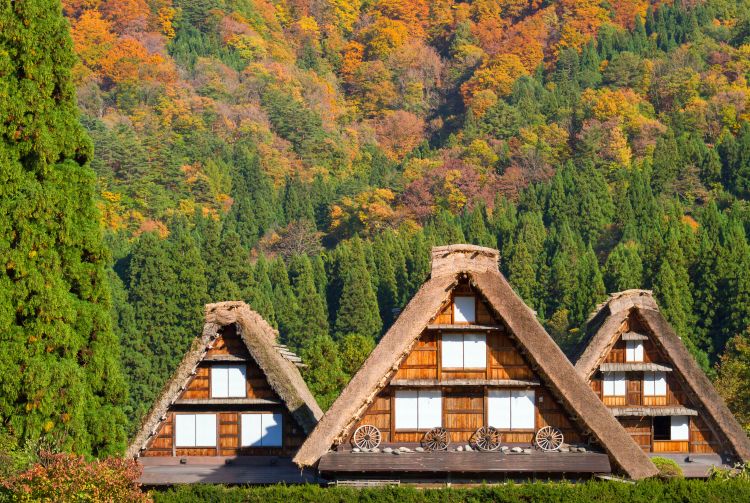
Slip into the past
The existing gassho-zukuri houses serve as museums, explaining the history of the region, the special architectural style, and features, and some of the key industries of Shirakawa-go. Several of these homes are guesthouses that offer lodging.
The gassho-zukuri village will transport you back to pre-modern Japan. Climb up to the Shirayama observatory, look out over the village, and take in views of a time gone by.
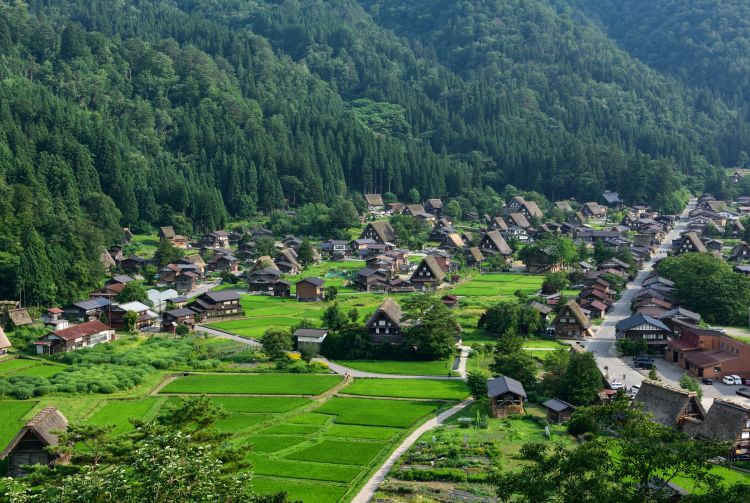
Gassho-zukuri Minkaen
This outdoor museum was built by relocating unused gassho-zukuri houses in Shirakawa-go to recreate the traditional way of life. It features functional buildings such as storerooms and a temple, as well as the ubiquitous houses. Here, you can see demonstrations of local crafts, some of which you can have a go at. There are restaurants and souvenir shops, making it an excellent place to rest weary legs.
Doburoku Festival
Doburoku is a local specialty alcohol. Doburoku is an unfiltered sake—a "home" brew that is illegal to produce in all but a few designated special zones.
In mid-October, you can partake of the drink while watching performances of the Shishi-mai lion dance.
Keeping house
Some of the houses are still residences and are therefore understandably closed to the public. Others, however, are open and are definitely worth checking out.
The Wada House is right by the bus stop, in the center of Ogimachi, surrounded by a perfect Japanese garden.
The Kanda House is believed to be more than 150 years old and contains writing on the roof frame by the original carpenter from about 1850.
The Nagase House was home to a family of doctors and has a display of Edo period (1603-1867) medical equipment that is fascinating and troublesome in equal measure.
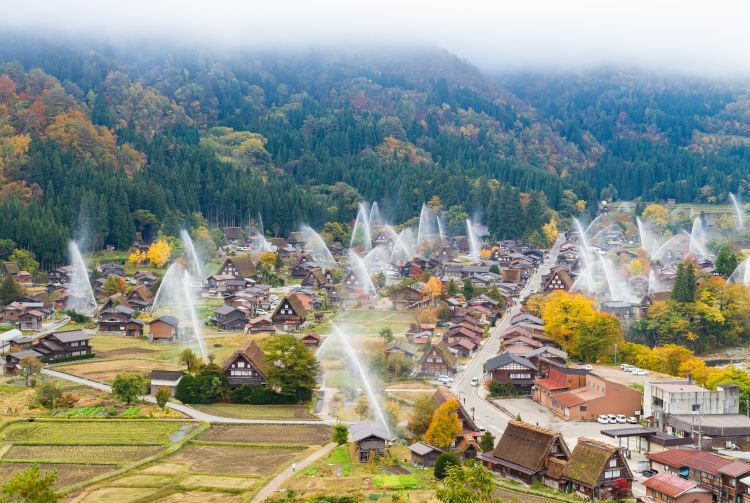
Tajima House Museum of Silk Culture
Silk farming was one of the main industries in pre-modern Shirakawa-go, and this museum explains the history and process. The Tajima House is actually dedicated to reviving the traditional silk farming industry.
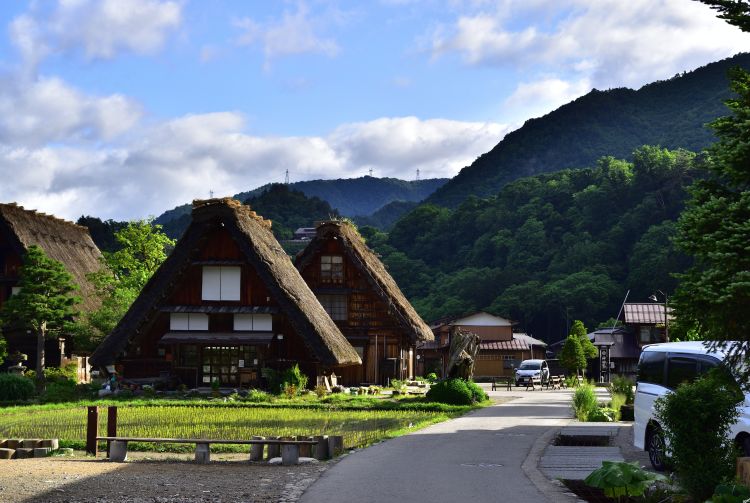
Myozenji Temple Museum
This former monk's residence next to the main temple has been turned into a museum of the temple's history since 1748. The temple itself is home to a large Buddha, and the bell tower and nearby yew tree are redolent of old Japan.
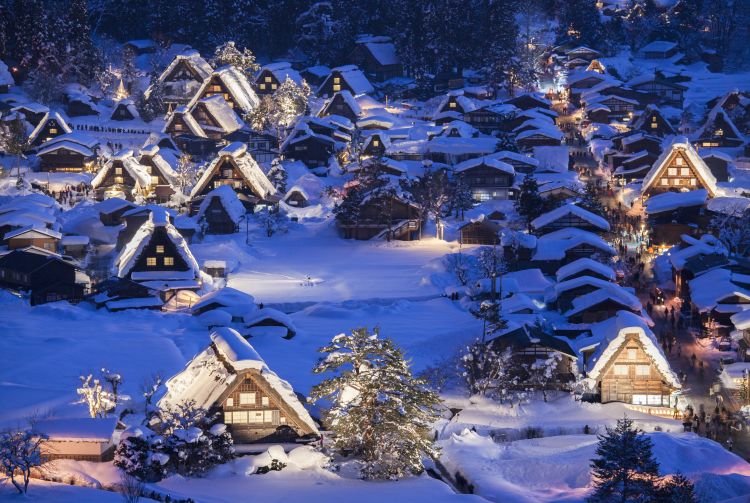
Glorious four seasons
Shirakawa-go rewards return visits, as the shifting seasons bring out different aspects of the town. From the bright cherry blossom through the verdant summer, the fiery autumn leaves and the silent, white winter, Shirakawa-go always looks splendid.
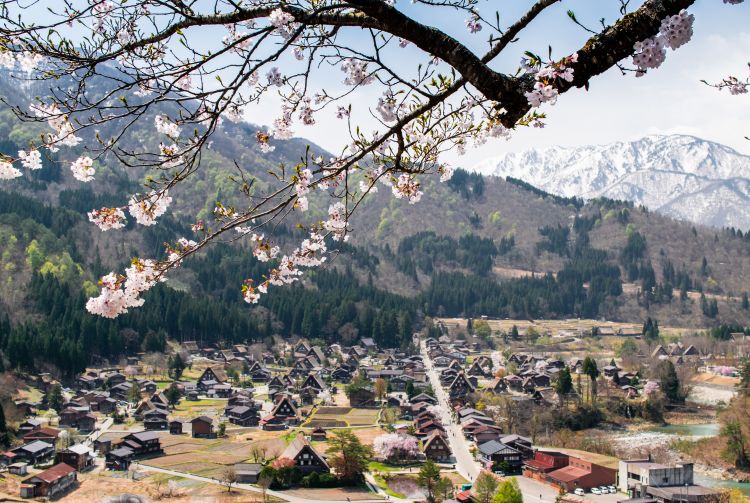
You can cover Shirakawa-go in a couple of hours, but to really soak in the atmosphere, imagine the timelessness of life in rural Japan, and lose the stress of contemporary living, you will need longer. Staying overnight in one of the lodging houses is highly recommended, but you will need to book in advance.
* The information on this page may be subject to change due to COVID-19.
- Old Townscape
Recommended for You

Please Choose Your Language
Browse the JNTO site in one of multiple languages

Shirakawa-Go Guide: Things To Do And How To Get There
- Gifu , World Heritage
Stepping into the village of Shirakawa-go is akin to stepping back in time. Nestled in the remote mountains of Gifu Prefecture, Japan, this rustic village beckons travelers with its charming landscape and unique Gassho-style architecture .
Its fairy-tale allure, untouched by the rapid modernization of the world outside, has rightfully earned it a spot as a UNESCO World Heritage site .

Shirakawa-go’s cultural richness, quaint beauty, and historical significance make it a must-visit for anyone seeking to explore Japan beyond its bustling cities. If you’re yearning for the authentic Japanese rural experience, look no further. This comprehensive guide aims to equip you with all the knowledge you need to plan a memorable trip to this timeless gem.
Why Visit Shirakawa-Go
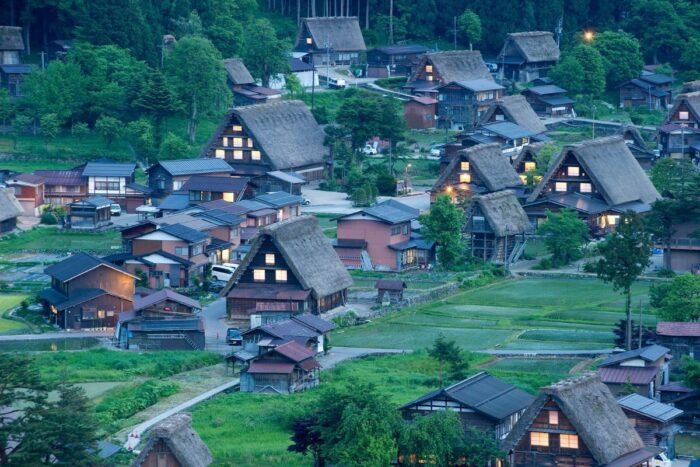
Shirakawa-go isn’t just a destination; it’s an experience. With its traditional Gassho-style houses, picturesque scenery, and warm, inviting locals, the village offers a peek into a way of life that has stood still amid the passing centuries.
The Gassho-style houses, with their steep thatched roofs resembling hands in prayer, stand as living testimonials to a unique architectural style adapted to the harsh winters of the region. These structures, some of which are over 250 years old, transport you back to Japan’s bygone eras.
A trip to Shirakawa-go offers not only a break from urban life but also a meaningful immersion into a culture and history often overlooked by typical tourist itineraries. Here, you can step away from the fast-paced life and explore Japan at a pace that respects the timeless rhythm of nature and humanity.
When to Visit Shirakawa-Go
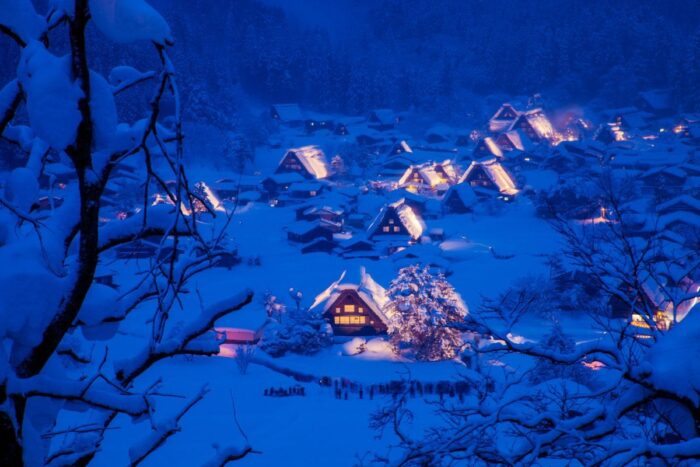
The appeal of Shirakawa-go changes with the seasons, offering a unique charm all year round. The village dazzles under the winter snow, with its thatched-roof houses appearing like intricate snow sculptures under the soft, warm glow of lights. This is the time when the village’s annual illumination event takes place, attracting photographers and travelers from around the world.
Come spring, the snow melts away to reveal a lush green landscape, with cherry blossoms adding a blush of pink. Summer brings with it a vibrant green hue as the rice fields come to life. In autumn, the village basks in the glow of fall foliage, presenting yet another mesmerizing sight.
While each season brings its charm, the quiet beauty of winter snow and the riot of colors in fall make these periods particularly appealing for a visit.
What to Do in Shirakawa-Go
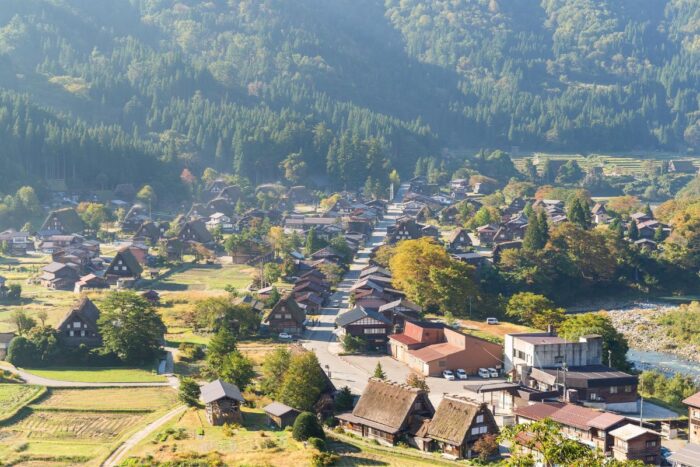
Once you’re in Shirakawa-go, the real adventure begins. Below are some must-see and do’s in the village:
Explore the Gassho-style Houses: No visit to Shirakawa-go is complete without exploring the iconic Gassho-style houses . Some of the most famous ones are the Wada House and Nagase House , offering insights into the local lifestyle and history.
Visit the Shirakawa-go Gassho-zukuri Minkaen: This open-air museum located on the outskirts of the village showcases 25 relocated and preserved Gassho-zukuri houses. It’s an ideal place to learn more about the traditional lifestyle of the region.
Discover the Shiroyama Viewpoint: For a panoramic view of the village and its beautiful surroundings, head to the Shiroyama Viewpoint. It’s a paradise for photographers, especially during the winter illumination event and the autumn color season.
Experience local cuisine: Enjoy a meal at one of the local restaurants serving regional specialties. Don’t miss the Hoba Miso, a dish where vegetables and miso paste are grilled on a magnolia leaf.
Participate in local traditions and seasonal events: If you time your visit right, you can participate in local festivals like the Doburoku Festival , where the village’s unique sake is shared among the locals and visitors. The winter light-up event is another spectacular experience, where the snow-covered village is illuminated to create a magical landscape.
Where to Stay in Shirakawa-Go
To make the most out of your Shirakawa-go experience, consider spending a night in the village. A variety of traditional Gassho-style guesthouses, known as minshuku, offer overnight stays.
Staying in a minshuku lets you experience the village’s charm after the day-trippers have left and the quiet of the night takes over. It’s an immersive experience where you can enjoy local hospitality, taste home-cooked meals, and even help out with some farm tasks, depending on the season.
The guesthouses can get booked up quickly, especially during popular times like the winter illumination event, so it’s recommended to book well in advance. It’s important to note that most guesthouses do not accept credit cards and require cash payments.
Getting to Shirakawa-Go
Shirakawa-go is well connected to some of Japan’s major cities. Here is a detailed breakdown of how to reach this beautiful village from Takayama, Kanazawa, Tokyo, and Toyama.
From Takayama
Takayama and Shirakawa-go are connected by the Nouhi Bus service. The journey takes about 50 minutes to an hour. Buses depart from Takayama Bus Terminal, which is located right next to JR Takayama Station. It’s a good idea to buy your bus ticket at least a day in advance, especially during peak tourist season.
From Kanazawa
Kanazawa is another city with direct bus connections to Shirakawa-go, provided by the Hokutetsu Bus service. The journey takes approximately 75 minutes. Buses leave from the East Gate of Kanazawa Station. Similar to Takayama, you are advised to buy your tickets a day in advance, especially during peak seasons.
To get to Shirakawa-go from Tokyo, you have a few options:
- Train to Toyama then bus to Shirakawa-go: Take the Hokuriku Shinkansen from Tokyo to Toyama, which takes about 2 to 2.5 hours. From Toyama Station, head to the bus terminal and take a bus to Shirakawa-go. This bus journey takes about 1.5 hours.
- Train to Takayama then bus to Shirakawa-go: Take the Tokaido Shinkansen from Tokyo to Nagoya, then transfer to the Hida Wide View Express for Takayama. This journey takes approximately 4.5 hours in total. From Takayama, you can take the Nouhi Bus to Shirakawa-go, which takes about an hour.
From Toyama
From Toyama, you can take a bus directly to Shirakawa-go. The bus terminal is just outside Toyama Station. Buses are operated by the Kaetsuno Bus company, and the journey takes about 1.5 hours. As with other routes, it’s recommended to purchase your tickets a day in advance during peak seasons.
Remember, whether you’re travelling from Tokyo, Toyama, Takayama, or Kanazawa, the key to a smooth journey to Shirakawa-go is planning ahead and booking your bus tickets in advance. This is especially important during popular seasons such as the winter illumination event or the autumn leaf viewing season when many travelers flock to see the beauty of this historic village.
Day Trips to and from Shirakawa-Go
While Shirakawa-go doesn’t really serve as a base (more of a day trip destination for most) There are some recommended places nearby or places to base yourself for a day trip here.
Gokayama: Just like Shirakawa-go, Gokayama is known for its traditional Gassho-style houses but is less crowded. It’s also a UNESCO World Heritage site and is only a short bus ride away.
Takayama: Known as ‘Little Kyoto’, Takayama offers beautifully preserved streets lined with old merchant houses, sake breweries, and craft shops. It also hosts the famous Takayama Festival twice a year.
Kanazawa: Famous for the beautifully landscaped Kenrokuen Garden , one of Japan’s top three gardens, Kanazawa also offers a thriving contemporary art scene, historic districts, and excellent local cuisine.
Gokayama: The Less Explored Gem near Shirakawa-Go
Gokayama, often overshadowed by its more famous neighbor, Shirakawa-go, is a picturesque historic village that offers a quieter, yet equally captivating experience. Like Shirakawa-go, Gokayama is also a UNESCO World Heritage site, known for its traditional Gassho-style houses. Here’s everything you need to know about this serene village.
Comparing Gokayama with Shirakawa-Go
While both Shirakawa-go and Gokayama share the same traditional Gassho-style architecture, their visitor experiences can be quite different.
Crowd Levels: One of the main differences between the two is the level of tourism. Shirakawa-go tends to be more crowded due to its larger size and popularity, especially during the illumination event in winter and the cherry blossom season in spring. On the other hand, Gokayama, being less known, provides a more tranquil atmosphere, allowing visitors to leisurely explore the village without the throng of crowds.
Preservation: Gokayama is said to have a higher level of preservation and authenticity compared to Shirakawa-go, mainly due to lesser commercialization.
Size & Attractions: Shirakawa-go, being larger, has more attractions such as the open-air museum, multiple observation points, and more Gassho-style houses to explore. Gokayama, though smaller, offers its own charm with its tranquil surroundings, fewer houses, and the opportunity for hands-on experiences such as washi paper making.
Getting to Gokayama
Gokayama can be accessed from both Shirakawa-go and major cities like Kanazawa and Takayama.
From Shirakawa-go: The easiest way to get to Gokayama from Shirakawa-go is by bus. The journey takes approximately 30-40 minutes. The Nouhi Bus operates services between these two villages, and the schedule can be found on their official website.
From Kanazawa: Direct buses run from Kanazawa to Gokayama and take around 1.5 hours. The buses depart from Kanazawa station’s east exit.
From Takayama: From Takayama, you will first need to take a bus to Shirakawa-go (approximately 50 minutes to 1 hour) and then another bus from Shirakawa-go to Gokayama (around 30-40 minutes).
Tips for Traveling in Shirakawa-Go
Respect the local etiquette: Remember that many of the houses in the village are private residences. Respect the locals’ privacy and do not enter any houses unless they are open to the public.
Be prepared for the weather: The village experiences heavy snowfall in winter. Bring suitable clothing and footwear to enjoy your visit comfortably.
Language tips: While some locals speak basic English, knowing a few phrases in Japanese can be handy and is always appreciated.
Bring Cash: Not all shops or accommodations accept credit cards, so it’s wise to bring enough cash for your needs.
Shirakawa-go is a true gem that offers visitors a unique chance to experience a traditional Japanese village firsthand. From the charm of its Gassho-style houses to the beauty of its changing seasons, the hospitality of its people, and the richness of its history and culture, this village is more than just a destination – it’s a step back in time, a peaceful respite, and an enriching journey all rolled into one.
Related Posts

Private Afternoon Cycling Tour In Hida-Furukawa
- November 24, 2023
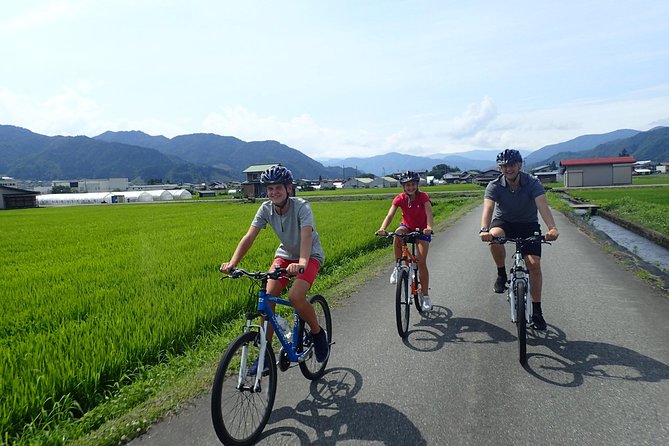
Private Afternoon Cycling Tour in Hida-Furukawa
- November 18, 2023

Ghost Stories And Nightlife Private Tour Of Takayama
- July 31, 2023
Trending now


Gifu Prefecture. Shirakawago sightseeing. Event information
- Briefly about Shirakawa-go
- Shirakawa-go weather
- Announcements&Events

Find attractions spot
- Koshirakawa
- Gassho house
- Guest house/hostel

Show 37 All result Show 1 to 12 result

Kuroyuri-so
We are proud of the open-air rock bath which is the owner's handmade. The owner is the Master fisherman for mountain stream fishing ,especially Japanese char. Let’s talk about fish or fishing until late at night We look forward to seeing you.

Yamakoshi (Local Soba maker)
You can choose from the two accomodation plans ,the 18,000 yen or the 15,000 yen . The dinner of the 15,000 yen plan is not included Hida beef dishes. It will cost an extra charge,if you have other requests such as soba dishes and soba sweets.

※ Temporary Closed ※ For better service we limited to only 1 group per day (2-6 people) `Wadaya‘ is a Gassho-zukuri inn surrounded by mountains where you can feel the beauty of four seasons. We offer local dishes such as Hida beef and magnolia miso and wild seasonal vegetables. In particular, we are proud to serve our homemade rice, which we have carefully grown. The inn's family is the third generations of the Gasso-zukuri's thatched craftsman who have protected the connection with local people through "Yui" as well as the techniques of the thatched roof. Please stay with us and feel the World Heritage Site.

Please stay with us and spend a relaxing time in the world heritage site, Shirakawago.

Let’s try the local food mainly with the wild vegetables and relax in the hot water of Hirase Onsen. Please enjoy your stay with us.

It is a private inn for only one group a day. Please enjoy the relaxing time with your family or friends in 250 years-old Gassho-zukuri house. ※ Please contact us in advance if you are a group of 6 people or more.

We serve the natural country dishes using local ingredients and wild seasonal vegetables.

We serve homemade seasonal dishes using local ingredients. We also use home-grown rice for health. Please relax and unwind from city life in the rich nature and seasonal scenery.

The inn is 3 minutes drive(20 minutes walk )from the World Heritage site, a peaceful countryside location. Relax with the beautiful nature and the fresh air. We have the warm cypress bath and serve the dishes such as the wild seasonal vegetables or the river fishes.

Shiroyamakan
Renewal OPEN on April 20, 2023! Thank you very much for your patience. We are sincerely looking forward to your visit. Shiroyamakan was built in 1884 and has been selected as a nationally important traditional building. It is the traditional inn priding itself on its cuisine where you can enjoy the pre-eminent dishes of all seasons in Shirakawa-go. We have a good reputation that is warm and courteous customer service because we have only four groups per day. We produce more rich travel time in Shirakawagou.

Hakusan-kan
The journey is all about LOCAL, MONOMENT, NOSTAGIA. Hakusankan inn, we serve meals with special ingredients that are distingued from others. We insist on using seasonal food such as high grade wagyu beef, river fish, wild vegetables with irori fireplace. Heal your body and soul in the natural hot spring at Hakusankan.

Why don't you spend the night in traditional Gassho house inn in Shirakawa-go? In the midst of the corona, we limit the number of guests and strive to be "safe and secure". We are located at the center of a World Heritage village, the gassho-zukuri house which has been protected and preserved by our different generations for 320 years. Over 40 years since we living proud with our delicious homegrown rice and local ingredients and which nature provides. We would like to continue pursuing "the living proud way of life" while preserving our gassho-zukuri house. We look forward to see you from the bottom of our heart.

Search facilities at once!
Room reservation in Shirakawago
Check-in date
Number of people per room
Number of nights
Number of rooms
Tours&Activities
- Documents request
- Download documents
- Notation based on Specified Commercial Transaction Law
- Privacy policy
- Download Shirakawago photos
- Live camera
Kyushu / Okinawa
itineraries
Transporation
- Hot Spring Hotel 24
- Popularity 12
- Tax-Free Souvenir 7
- Shopping Spree 6
Your Guide to the Historical Shirakawa-Go Village in Gifu: Must-Visit Attractions, Festivals, and Hot Springs
WAmazing Discover Editing Team

In winter, the secluded village of Shirakawa-go is transformed into a fairy-tale world with snowfall and enchanting lights, attracting numerous visitors each year. If you're planning a trip to Shirakawa-go, read on to learn more about the area's history, climate, the best places to visit, plus nearby hot spring hotels.
Get to know Shirakawa-go
Year-round weather conditions in shirakawa-go, experience the four seasons in shirakawa-go, shirakawa-go's winter illumination event in 2024, must-visit attractions in shirakawa-go, try unrefined sake at the doburoku festival at shirakawa hachiman shrine, shirakawa-go village: access information, discover shirakawa-go village.
Use this guide to plan your trip to Shirakawa-go Village.
History and geographic facts

Shirakawa-go, nestled in Gifu Prefecture, is famous for its distinctive architectural style, known as gassho-zukuri, referring to houses with a steep thatched roof.
The village, surrounded by mountains and lush forests, was acknowledged as an Important Traditional Building Preservation Area in 1976, and designated as a Unesco World Cultural Heritage site in 1995.
The wider Hida Region, which encompasses towns like Hida and Takayama, adds to the area’s charm. Renowned for its cultural and historical significance, Shirakawa-go attracts visitors year-round.
Shirakawa-go’s stunning architecture

Gassho-zukuri is a traditional architectural style, characterized by steep wooden beams and pillars, creating thatched roofs that resemble folded hands, known as gassho in Japanese.
The houses in Shirakawa-go are built in the kiritsuma gassho-zukuri style to withstand heavy snow conditions. They are strategically positioned facing north and south to minimize wind resistance and control sunlight exposure, offering warmth in winter and coolness in summer.

Nestled in a mountainous agricultural region, Shirakawa-go enjoys cool and pleasant summers, transitioning into Japan's winter wonderland with heavy snowfall.
From December to March, the landscape is blanketed in snow, piling up two to three meters, with February boasting covers exceeding 170 centimeters.

In terms of temperature, spring unfolds from mid-March to April, with temperatures slowly rising but averaging below 10 degrees Celsius. Dress warmly for the fluctuating temperatures.
Late spring to early summer, from May to June, experiences rising temperatures, reaching 20 degrees Celsius and above. However, evenings remain cool, so be sure to bring a jacket or knitwear.
The peak summer months of July and August bring average temperatures of around 23 degrees Celsius, with highs around 28 degrees Celsius. Lightweight short sleeves are your go-to for this warmer period.
As autumn sets in from September to October, average temperatures drop to below 20 degrees Celsius, plunging to 5 to 10 degrees Celsius from November onwards.

In the winter season from December to March, temperatures drop below zero, with January to February highs around 2 degrees Celsius.
While snowfall isn't guaranteed in milder winters, make sure to bundle up with coats, thermal underwear, gloves, and hats. Opt for shoes with anti-slip features to navigate wet, slippery snow-covered surfaces. Some accommodations even offer snow boot rentals for a safe stroll in this winter wonderland.
While most people visit Shirakawa-go in winter to see the enchanting winter illuminations, it’s picturesque throughout the year. You can even check real-time footage of the area on the village’s official website.
Spring: Enjoy pastel-pink cherry blossoms

Spring arrives in Shirakawa-go around March, as temperatures rise, and snow begins to melt. Cherry blossoms bloom from mid-April to early May, casting a warm spring hue over the serene village. If you want to enjoy Japan’s signature flower, this is the perfect time to visit.
Summer: Enjoy the fresh greenery and picturesque mountains

Summer in Shirakawa-go is picturesque with its lush green foliage and sunflowers basking in the sun. It’s the perfect rejuvenating and serene countryside escape from the hustle and bustle of city life.
Fall: Admire the autumn foliage

Shirakawa-go is equally beautiful in autumn. From late October to mid-November, the layered mountain range shines in red and gold. It’s the best time to appreciate the vibrant autumn leaves, with the charming traditional houses adding to the picturesque landscape.
Winter: Marvel at a snowy fairy-tale world of illuminations

In winter, despite the freezing cold and snow-covered surroundings, Shirakawa-go attracts enthusiastic visitors eager to witness the village’s renowned winter illumination event.
During the day, the village resembles a fairy-tale setting with its pristine white snow, and as night falls, the sparkling lights cast a magical ambiance reminiscent of a European Christmas town.

The 38th edition of Shirakawa-go’s winter illuminations takes place every Sunday until mid-February. The event location is in the Ogimachi area of Shirakawa-go, and the illumination period is from 5:30 p.m. to 7:30 p.m.
The next illumination event takes place on: February 4, February 12 (Monday,) and February 18.

During the event period it’s very crowded, including heavy traffic. In recent years, event organizers have limited visitor numbers to prevent overcrowding.
As a requirement, everyone must make an advanced reservation to gain access to the village during the light-up events. For more details and up-to-date information on the 2024 event, be sure to make a reservation in advance through the Shirakawa-go Tourist Association website.
2024 38th Shirakawa-go Winter Illumination Event Official website: https://shirakawa-go.gr.jp/en/

Read on to explore the must-visit tourist attractions within and around this enchanting town.
Enter the unique gassho -style houses
When in Shirakawa-go, a must-see attraction is undoubtedly the gassho -style houses.
Among the most iconic residences to explore are the Wada House, the Nagase House, and the Kanda House in the Ogimachi area.
Additionally, don't miss the Former Toyama House situated in the Hirase area. These architectural gems offer a captivating glimpse into the unique charm of Shirakawa-go's cultural heritage.

The Wada House is the village's largest gassho -style residence. Although the first and second floors are open to the public, certain sections of the living space are still private as the house continues to serve as the residence for the Wada family.
Other noteworthy gassho -style structures nearby include the historic Nagase House, home to a 500-year-old Buddhist altar, and the Kanda House, which took over ten years to build.

Only a short distance from the main village of Shirakawa-go, the Former Toyama House is accessible via a convenient half-hour bus ride from the Shirakawa-go Bus Terminal.
Built in 1827 by a carpenter from the Noto Peninsula, the museum has undergone careful renovation, showcasing a stunning lacquered black interior.
The house also runs a lunch project, offering a delightful opportunity to savor local ingredients, including Shirakawa rice, tofu, and locally grown wild vegetables.
Best observation decks for panoramic views of Shirakawa-go

To enjoy a breathtaking panoramic view of the village, make your way to the Ogimachi Castle Ruin Observation Area. From this vantage point, you can marvel at the picturesque thatched houses, surrounded by the mountains.
Ogimachi Castle Ruin Observation Area Address: 586 Ogimachi, Shirakawa-go, Ono-ku, Gifu Prefecture Access: 10-min walk from the Shirakawa-go Bus Terminal Official website: https://www.vill.shirakawa.lg.jp/1470.htm
Shiroyama Tenshukaku is a restaurant complex near the Ogimachi Castle Ruins. It features an observation deck, a cafe, a souvenir shop, and a dining area.
Shiroyama Tenshukaku Address: 2269-1 Ogimachi, Shirakawa-mura, Ono-gun, Gifu Prefecture Access: 20-min walk or 10-min bus ride from the Shirakawa-go Bus Terminal Official website: https://shiroten.jp/en/
*While both observation decks are free to enter, be sure to check the business hours online in advance as they’re located on privately-owned land and may have specific closing times.
Gassho-zukuri Minkaen Outdoor Museum: Learn about the history of gassho -style houses

The Gassho-zukuri Minkaen Outdoor Museum in Shirakawa-go features a total of 25 gassho -style buildings, including nine designated Important Cultural Properties of Gifu Prefecture.
Examples include the former Nakano Yoshimori House and the former Yamashita Haruro House. Additionally, there are shrines, temple halls, tea houses, and watermill huts that have been relocated to the museum.

Apart from the showcased buildings, the museum features dining areas and souvenir shops. Guests can savor a variety of handmade soba dishes and take home local souvenirs.
Be sure to try the museum's special ice cream, offering unique flavors such as unrefined sake, barnyard millet, mugwort, and buckwheat—the perfect treat in summer.
Open-Air Museum Gassho-zukuri Minkaen Address: 2499 Ogimachi, Shirakawa-mura, Ono-gun, Gifu Prefecture Access: 15-min walk from the Shirakawa-go Bus Terminal Official website: https://www.shirakawago-minkaen.jp/english/

From late September to mid-October, the Shirakawa Region hosts the Doburoku Festival, where different shrines take turns in producing unrefined rice sake . The sake will be offered to the deities while praying for a prosperous harvest.
The festival features a divine procession known as goshinko , featuring lion dances, and performances of traditional local songs and dances. Participants can also sample the unrefined, divine sake brewed from rice during the festivities.

The festival times vary by shrine, but one of the most popular spectacles takes place at the Shirakawa Hachiman Shrine annually on October 14 and 15.
Notably, this shrine serves as the model for the Furude Shrine seen in the famous Japanese visual novel "Higurashi When They Cry," and some of the ema (wooden plaques) displayed at the shrine feature illustrations related to the novel.
Shirakawa Hachiman Shrine Address: 559 Yama-goe, Ogimachi, Shirakawa-mura, Ono-gun, Gifu Prefecture Access: 10-min walk from the Shirakawa-go Bus Terminal Official website: http://www.gifu-jinjacho.jp/syosai.php?shrno=2118 (in Japanese only)
Doburoku Festival Official website: https://www.vill.shirakawa.lg.jp/2684.htm
Relax at the irori hearth at the Myozen-ji Temple Museum

Another gassho -style structure in Shirakawa-go is Myozen-ji Temple, affiliated with the Jodo Shinshu Buddhist sect.
The temple's former residence is now open to the public as the Myozen-ji Temple Museum, featuring various artifacts, and a traditional Japanese irori hearth.
Learn about the history of gassho -style structures, agricultural tools, and handicrafts that provide a glimpse into the village's everyday life of bygone days.
Myozen-ji Temple Museum Address: 679 Ogimachi, Shirakawa-mura, Ono-gun, Gifu Prefecture Access: 10-min walk from the Shirakawa-go Bus Terminal Official website: https://shirakawa-go.gr.jp/en/active/12/
Buy souvenirs and learn about gassho architecture at the Road Station Shirakawa-go

This highway rest area on the way to Shirakawa-go serves as a hub for relaxation, dining, and souvenir shopping, offering local products, original snacks, and wines from the Hida Region. Moreover, it is home to the Gassho Museum, a free-to-explore attraction.
The Gassho Museum features life-sized gassho -style structures that have been partially dismantled and relocated for display. Step inside and observe the construction methods and explore the tools and materials that have been used.
Through on-site video presentations, learn about its construction methods and maintenance that goes into preserving this Unesco World Heritage Site.
Road Station Shirakawa-go Address: 411 Iijima, Shirakawa-mura, Ono-gun, Gifu Prefecture Access: 8-min bus ride from the Shirakawa-go Bus Terminal Official website: https://rs-shirakawago.jp/english/
Unwind in the hot springs of Shirakawa-go

If you're seeking a relaxing soak in the hot springs during your visit to Shirakawa-go, there's a natural hot spring facility within the village, called Shirakawa-go no Yu.
Additionally, in the nearby Hida-Sasayama area, about 15-20 minutes by car from the village, there are abundant springs sourced from Mount Hakusan, such as Shiramizu-no-yu Oshirakawa Hot Spring.

If you're planning on spending the night in Shirakawa-go, there are plenty of accommodations ranging from local inns to traditional ryokan inns and even Gassho-style minshuku guesthouses.
The official website of the Shirakawa-go Tourist Association lets you browse through these places, check room availability, and make advance reservations, offering a lodging experience that's a bit out of the ordinary. Hosts often whip up delicious local dishes using ingredients from their own gardens, including mountain veggies, seasonal produce, river fish, and Hida beef.
Moreover, the nearby Hida Takayama area has several accommodations where you can soak in the hot springs. If you're keen on exploring both popular tourist spots like Shirakawa-go and Hida Takayama in a single trip, it's a good idea to look into various options and plan your travel itinerary according to your preferences.

Tokyo Station → Hokuriku Shinkansen → Toyama Station → Highway Bus → Shirakawa-go Bus Terminal (Total time: 3 hrs 35 min)
Osaka Station → JR Limited Express Thunderbird → Kanazawa Station → Highway Bus → Shirakawa-go Bus Terminal (Total time: 4 hrs)
From Nagoya
・Nagoya Station → JR Limited Express Wide View Hida → Takayama Station → Highway Bus → Shirakawa-go Bus Terminal (Total time: 3 hrs 10 min)
・Nagoya Meitetsu Bus Center → Highway Bus → Shirakawa-go Bus Terminal (Total time: 2.5 hrs)
For a cost-effective journey in central and northern Japan, purchase the Shoryudo Bus Pass. It covers 3-day itineraries for locations like Takayama, Shirakawa-go, and Kanazawa, as well as a 5-day extensive route including Matsumoto, Magome, and the Japanese Alps. It allows you to travel by highway and route buses, exploring major attractions in the Chubu and Hokuriku regions.

The enchanting village of Shirakawa-go is the perfect place to unwind, with its cozy thatched houses and breathtaking scenery throughout the seasons. Use this guide to explore the region and plan your relaxing getaway in Shirakawa-go.
Explore more of Japan by using one of the many different transportation passes.
For the best places to stay during your Japan trip, click the button below.
*The information in this article, such as prices and business hours, was accurate at the time of publication but is subject to change. Please refer to the official website(s) for the latest information.
*When staying at a hotel or ryokan , you may be charged an accommodation tax and/or a hot spring tax depending on the area. Please pay directly at the hotel.
*Consuming alcohol under the age of 20 is prohibited by Japanese law, and these regulations also apply to international visitors and foreign residents in Japan. Please enjoy alcohol responsibly and don’t drive after drinking.
Shoryudo Bus Pass (3/5 days)
・Unlimited rides on highway and local buses bound for attractions in the Chubu/Hokuriku areas. ・Includes two one-way tickets to/from Central Japan International, Komatsu, or Toyama airports.
Accommodations in Hida Takayama Area
・Unwind in nature in the Kamikochi and Shirakawa-go area. ・Indulge in scrumptious Hida wagyu beef while overlooking unique gassho-style houses.

JR Tokyo Wide Pass: Overview, Purchase Info, and Best Destinations to Explore

Your Guide to Meiji Jingu Shrine in Tokyo: Best Things to Do, Attractions, and Nearby Restaurants

Everything You Need to Know About Udon Noodles in Japan

8 Best Restaurants and Snack Souvenirs in Hiroshima
- Previous Article
- Next Article
Related Articles

Explore the Kanto Region With the JR Tokyo Wide Pass—Spring Itinerary
The JR Tokyo Wide Pass is a convenient option for international travelers exploring the Kanto Region, allowing unlimited rides on Japan Railways (JR…

Kansai-Hokuriku Area Pass: Overview, Purchase Info, and Attractions to Explore With This Cheap Travel Ticket
When sightseeing in Japan, navigating the transportation system can be quite a challenge. Japan has a well-developed public transportation system, a…

9 Best Hotels in Hida Takayama in Gifu Prefecture
Hida Takayama, a beautiful city in the heart of Gifu Prefecture, is a popular summer resort acclaimed for its cool climate. With its thriving old to…

Best Places for Cherry Blossom Viewing and Sightseeing Tours in Japan
Cherry blossoms, known as sakura in Japanese, have been cherished by the locals for centuries. Across the country, there are numerous places where y…

[Hida Takayama Onsen] 8 recommended accommodations surrounded by the nature of Hida Takayama
Hida Takayama Onsen is a hot spring resort located in a peaceful area surrounded by the mountain villages of Gifu Prefecture in the Chubu region. In…
Featured Articles

Narita Airport Transportation Guide: How to Travel to Central Tokyo, Mount Fuji, Lake Kawaguchi, Karuizawa, and More
From Narita Airport in Chiba Prefecture, you can reach central Tokyo by either train, bus, or taxi. If you want to get to Tokyo hotspots like Shinju…

Your Guide to Fuji-Q Highland: Admission, Attractions, Restaurants, and Hotels
Nestled at the foot of Mount Fuji, Fuji-Q Highland is one of Japan's most famous amusement parks. Besides exhilarating roller coaster rides and scre…

Maxell Aqua Park Shinagawa in Tokyo: Enjoy Stunning Dolphin Shows and Immersive Jellyfish Exhibits
Located conveniently near Shinagawa Station in Tokyo, Maxell Aqua Park is a cutting-edge, immersive aquarium that integrates marine life with the la…
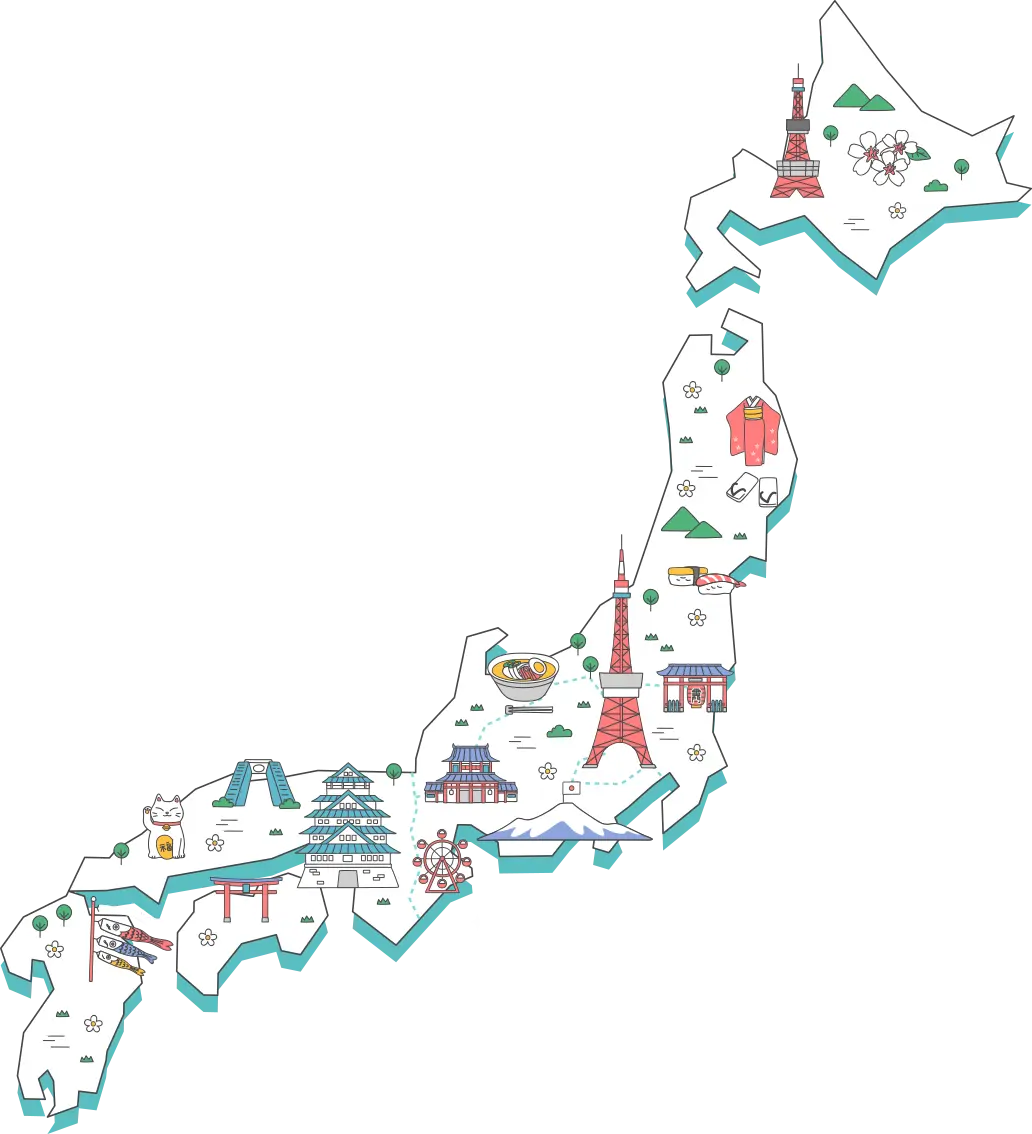
Hokkaido : 21
Tohoku : 14
Hokuriku : 7
Kansai : 39
Chugoku : 13
Shikoku : 4
Kyushu / Okinawa : 19
Basic Information and Guide to Enjoying the World Heritage Site "Shirakawa-go"

A Translation for an American Audience:
Discover the Serene Beauty of Shirakawa-go, Gifu Prefecture's Traditional Gassho-Zukuri Village. It's a Popular Tourist Destination that Preserves Japan's Pristine Landscape.
Shirakawa-go, located in Gifu Prefecture, is a charming village renowned for its traditional gassho-zukuri farmhouses. This picturesque destination attracts numerous tourists from both within Japan and around the world throughout the year.
In this article, we will introduce you to the best ways to enjoy Shirakawa-go and recommend popular sightseeing tours based on your departure location. Whether you're considering a trip to Shirakawa-go or planning your first visit, this guide is tailored for you!
*This article is translated using ChatGPT. For the latest information on each tourist spot and facility, we recommend checking the official website.
Basic Information
What is shirakawa-go, what is gassho-zukuri, best seasons for tourism and clothing, spring (march to may), summer (june to august), autumn (september to november), winter (december to february), recommended spots in shirakawa-go, scenic viewpoint of the village - ogimachi castle ruins observatory, representative house of shirakawa-go - wada house, introduction to the lifestyle and culture of shirakawa-go - gassho-zukuri minka-en (thatched gassho-zukuri house village), the only natural hot spring in shirakawa-go - shirakawago-no-yu, access information, travel by train or highway bus, travel by car, parking information, discover shirakawa-go, the quaint homeland of japan, a must-visit destination in a lifetime.
Shirakawa-go is a district located in the Ogimachi area of Shirakawa Village, Ono District, surrounded by steep mountains in the northern part of Gifu Prefecture's Hida region. This rural village preserves over 100 gassho-zukuri farmhouses, creating a picturesque landscape reminiscent of traditional Japan. Recognized for its architectural value and the beautiful rural scenery representing Japan's original landscape, it was registered as a UNESCO World Heritage Site (Cultural Heritage) along with Gokayama in Toyama Prefecture in 1995.
In the Ogimachi district, you can find gassho-zukuri houses, as well as traditional buildings such as temple main halls, monks' quarters, and storehouses. The gassho-zukuri village attracts many tourists from both within Japan and abroad, and the traditional way of life continues to thrive, preserving the historic village.
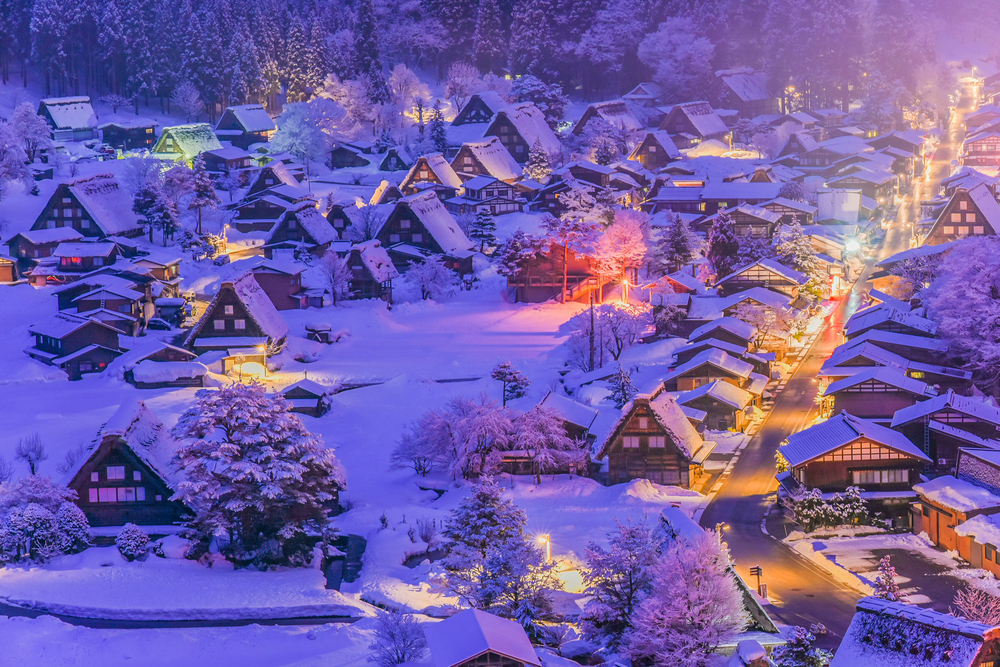
Gassho-zukuri refers to the architectural style of houses that resemble hands placed together in prayer, giving them their name. It is a unique Japanese construction style where wooden beams are combined in a triangular shape to create houses with steep thatched roofs suited for heavy snowfall in snowy regions.
The thatched roofs are about 30cm to 50cm thick and designed with a steep slope to minimize the weight of snow. In the past, sericulture was a major industry in Shirakawa Village, and the attics of gassho-zukuri houses were used as silkworm breeding areas. Additionally, on the ground floor, there were active salt production facilities as part of the direct domain business of the Kaga Domain. Some gassho-zukuri houses now offer public access to their interiors, allowing visitors to learn about the construction, sericulture, and salt production associated with gassho-zukuri architecture.
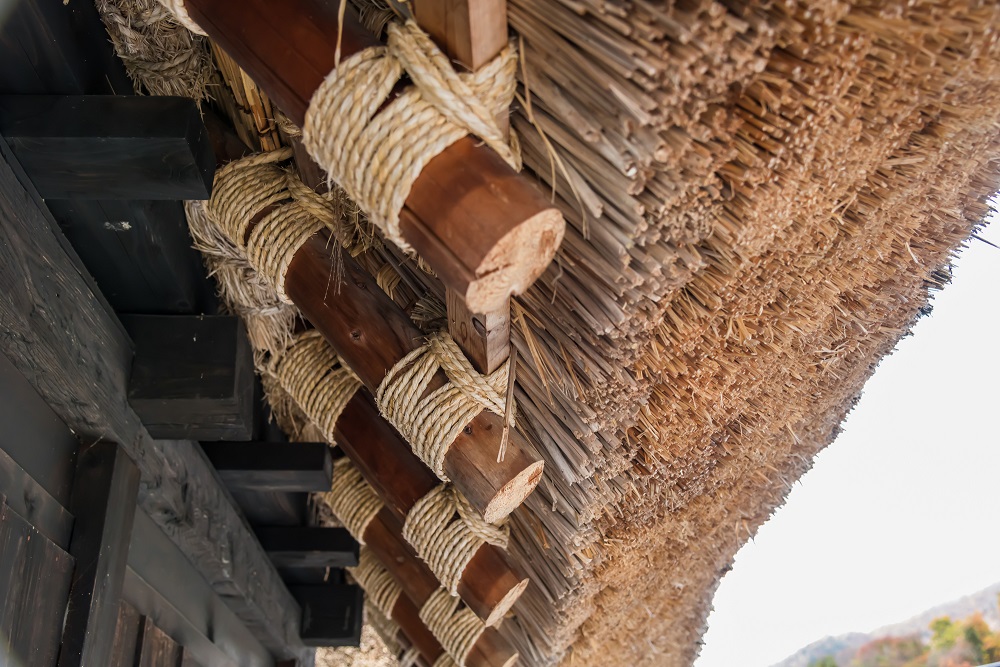
Shirakawa-go offers a variety of landscapes throughout the year, allowing visitors to enjoy the changing seasons. You can encounter scenes that evoke the essence of traditional Japan, such as fresh greenery, autumn foliage, rice fields, and snowy landscapes.
In March, temperatures gradually rise and the snow starts to melt. Cherry blossoms bloom from mid-April when the last traces of snow have disappeared, and they are in full bloom until early May. At the end of May, the "Rice Planting Festival" takes place, where women dressed in traditional attire plant rice seedlings by hand while singing traditional rice-planting songs.
Until mid-March, it can still be quite cold, so it's best to dress for the chilly weather. As April arrives, it gradually becomes warmer, but there can be temperature variations throughout the day, such as between daytime and early morning, so it's recommended to bring a jacket or cardigan for layering.
During the lush green period in June, vibrant greenery spreads across the village. In July, the rice fields surrounding the gassho-zukuri houses are filled with lush green rice plants, creating an even more vibrant landscape. Experience the powerful energy of nature in Shirakawa-go, with rice fields filled with abundant greenery and sunflowers blooming under the blue sky.
The temperatures can reach similar highs as Tokyo or Osaka, so regular summer attire is sufficient. As Shirakawa-go is located in mountainous areas, you can feel a cool breeze blowing down from the mountains.
As September arrives, temperatures start to drop, and golden rice fields signify the arrival of autumn. From mid-October to mid-November, the village is adorned with beautiful autumn foliage, creating a stunning scenery in shades of autumn colors. Additionally, to protect the gassho-zukuri village from fires, a ceremonial event called "Issaihosui" takes place at the end of October to early November, where water is sprayed onto the houses.
Autumn arrives a bit earlier in Shirakawa-go compared to urban areas, and there can be temperature differences between early morning, daytime, and evening, even in September. It's recommended to have a layering item to put on. As the cold intensifies from October to November, it's advisable to have autumn clothing such as sweaters.
During the snowy season from early December to early March, the gassho-zukuri village is covered in a breathtaking, pristine white landscape. Illumination events are held in January and February, attracting many tourists.
Shirakawa-go is one of Japan's snowiest regions, with many days experiencing below-freezing temperatures. Warm innerwear, down jackets, gloves, and knit hats are essential for staying warm. Waterproof and insulated boots are recommended for footwear instead of sneakers.
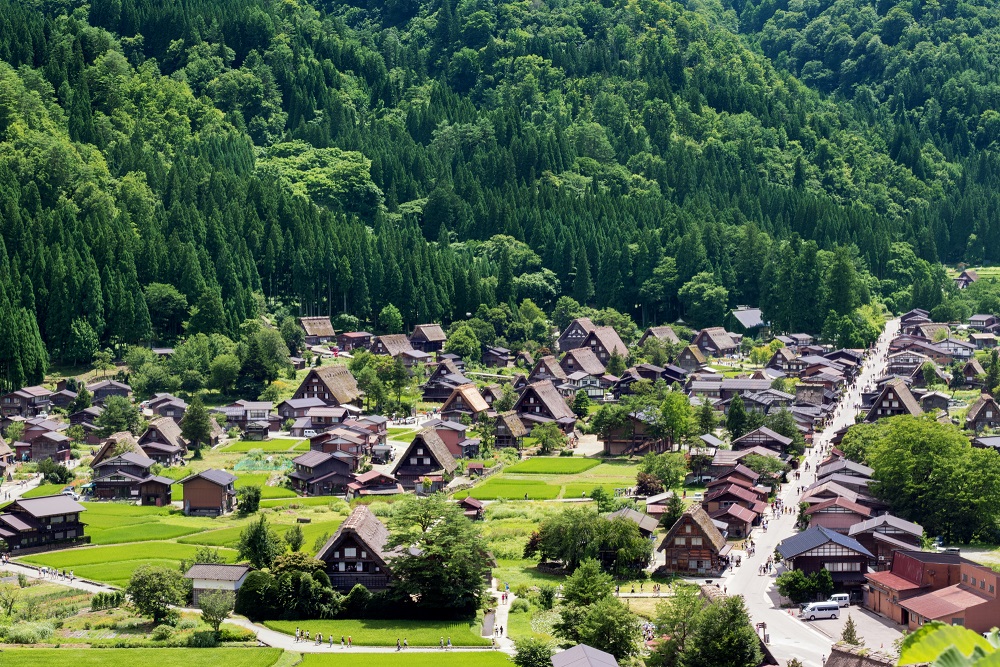
This observatory offers a panoramic view of the entire Shirakawa-go village, which is often featured in advertisements and brochures. Located in the northwest section of the Ogimachi Castle Ruins, a typical medieval mountain castle with steep cliffs, it is accessible within a 20-minute walk from the Shirakawa-go Gassho Village or a 10-minute shuttle bus ride.
Wada House is a 300-year-old thatched gassho-zukuri house, considered to be representative of Shirakawa-go, built during the mid to late Edo period. The surrounding environment, including the garden, hedges, fields, and waterways, is well-preserved, and it is registered as an Important Cultural Property by the national government. It flourished during the Edo period as the residence of village leaders and officials and played a vital role in the trade of gunpowder and raw silk, important sources of income for Shirakawa-go. While it is still used as a residence, the first and second floors are open to the public.
- Opening Hours: 9:00 AM - 5:00 PM
- Closed: Irregular closing days
- Admission Fee: Adults 300 yen / Children 150 yen
The village faithfully replicates the scenery of Shirakawa-go, with 25 gassho-zukuri houses, including 9 prefecturally designated important cultural properties, being preserved and open to the public. In addition to the main houses, there are shrines, temple main halls, and waterwheel sheds, creating an enjoyable experience similar to a theme park. Alongside the permanent exhibition hall, there are facilities such as storytelling halls, resting places, and soba workshops, allowing visitors to leisurely learn about the history and culture of Shirakawa Village.
- Opening Hours: March to November 8:40 AM - 5:00 PM / December to February 9:00 AM - 4:00 PM
- Closed: April to November - Open every day / December to March - Closed on Thursdays (Closed on the day before national holidays)
- Admission Fee: Adults 600 yen / Children 400 yen
This natural hot spring facility is located in the Shirakawa-go Gassho Village. In addition to indoor baths, it features a jet bath, dry sauna in the men's bath, mist sauna in the women's bath, and an open-air bath with a beautiful view of the Hakusan Mountain Range, gassho-zukuri village, and the Shogawa River below.
- Address: 337 Ogimachi, Shirakawa Village, Ono District, Gifu Prefecture
- Opening Hours: 7:00 AM - 9:30 PM
- Closed: Thursdays (Opening hours start at 3:00 PM on Fridays)
- Admission Fee: Adults 700 yen / Children 300 yen (Ages 4-12)
From Kanazawa: Kanazawa Station to Shirakawa-go Bus Terminal: Highway Bus, approximately 1 hour and 20 minutes
From Nagoya: Nagoya Meitetsu Bus Center to Shirakawa-go Bus Terminal: Highway Bus, approximately 2 hours and 30 minutes
From Osaka: Osaka Station to Kanazawa Station: JR Thunderbird Limited Express, approximately 2 hours and 40 minutes Kanazawa Station to Shirakawa-go Bus Terminal: Highway Bus, approximately 1 hour and 20 minutes
From Tokyo: Tokyo Station to Toyama Station: Hokuriku Shinkansen, approximately 2 hours and 15 minutes Toyama Station to Shirakawa-go Bus Terminal: Highway Bus, approximately 1 hour and 20 minutes
From Kanazawa: Kanazawa to Shirakawa-go IC: Hokuriku Expressway, approximately 1 hour and 5 minutes Shirakawa-go IC to Hida Shirakawa: National Route 156, approximately 5 minutes
From Nagoya: Nagoya to Sogo IC: Tokai Hokuriku Expressway, approximately 1 hour and 30 minutes Sogo IC to Hida Shirakawa: National Route 158 to National Route 156, approximately 45 minutes
- Use the public parking lot "Municipal Seseragi Park Parking Lot"
- Capacity: Large-sized vehicles - approximately 40 spaces / Regular-sized vehicles - approximately 200 spaces / Motorcycles allowed
- Parking Fees: Buses/Mid-sized buses - 3,000 yen / Regular-sized vehicles - 1,000 yen / Motorcycles - 200 yen
- Opening Hours: 8:00 AM - 5:00 PM
Surrounded by mountains extending from Mount Haku, the gassho-zukuri village of Shirakawa-go is scattered along the terraced banks of the Shogawa River. Why not embark on a journey to encounter the landscapes of old Japan? As there are no train stations near Shirakawa-go, it is recommended to use Kanazawa or Hida Takayama as bases and take a highway bus or join a guided tour.
While exploring the traditional houses and rural scenery, please remember to visit with respect for the local residents who continue their lives in this region.
*Thank you for reading the article! To improve YOKKA's service, we kindly request your participation in a survey below.
Likes! without Login

Here's the place to enjoy starry skies in Okinawa! Japan's first 'Dark Sky Park' is full of charm
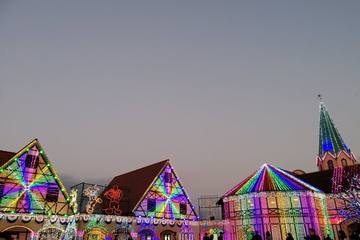
【千葉】1日遊べる東京ドイツ村!イルミネーション・動物園・アトラクションを楽しもう♪
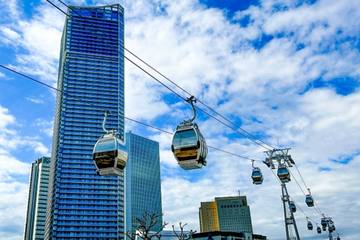
【横浜におでかけ】開業して約2年!横浜エアキャビンと周辺観光スポット
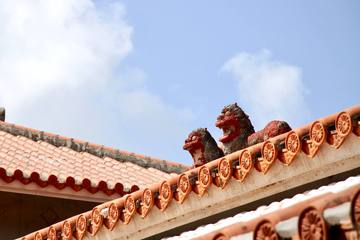
December Okinawa Travel Guide | Benefits and Recommended Activities Introduced!
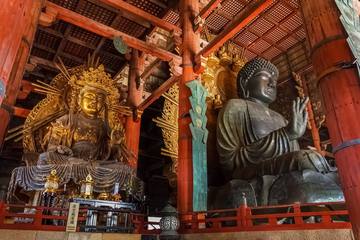
Todai-ji Temple | A Temple with the Great Buddha and Historic Buildings, Representing Nara
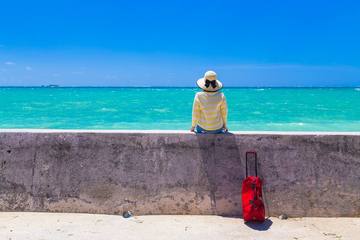
Top 23 Recommended Tourist Spots in Okinawa! We also introduce main island and remote island itineraries
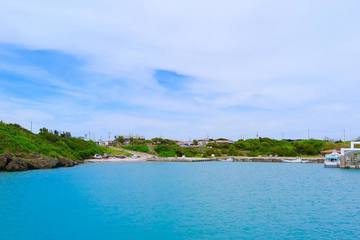
What is "Kudaka jima, the Island of Gods"? Culture and Charms Passed Down Since Ancient Mythology
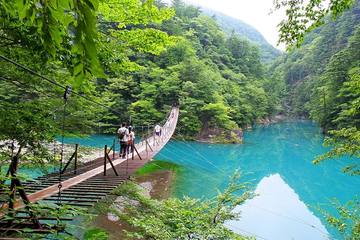
"Yume no Tsuribashi" in Shizuoka? A comprehensive guide from access methods to recommended routes

Go Out with Your Pet! Activities and Tourist Spots in the Nasu Area, Tochigi, Where You Can Enjoy with Your Dog
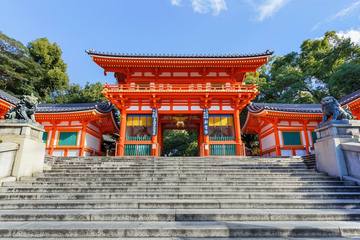
Comprehensive Guide to Yasaka Shrine! Introducing Basic Information and Photo Spots<Kyoto>
"likes" without login.
- Destinations
Shirakawago: Best Things to Do
Shirakawago and Gokayama Villages Travel Guide

This is an introduction of beautiful villages in Shirakawago and Gokayama.
Shirakawago (白川郷) is one of top popular sightseeing destinations in Central Japan as well as Takayama and Kanazawa. But you cannot see the combination of majestic nature and serene historical village anywhere else in Japan, except Shirakawago. The village consists traditional houses with thatched and steep roofs called Gassho-Zukuri.
“Shirakawago” is roughly divided into two areas: Shirakawago in Gifu prefecture and Gokayama (五箇山) in Toyama prefecture. The Gassho-zukuri villages in the two areas have been added to the UNESCO World Heritage list in 1995. The style of houses is estimated to be built in the late 17th century. Shirakawago is the most famous village in the area since it has most Gassho-zukuri houses.

You can enjoy a trip to Shirakawago all through the year since it beautifully shows different faces of four seasons: cherry blossoms in spring, bright green rice field in summer, autumn leaves in autumn and snow in winter. Also each village has nice photo spots overlooking it.
*Please note that this article contains affiliate links.
- Shirakawago
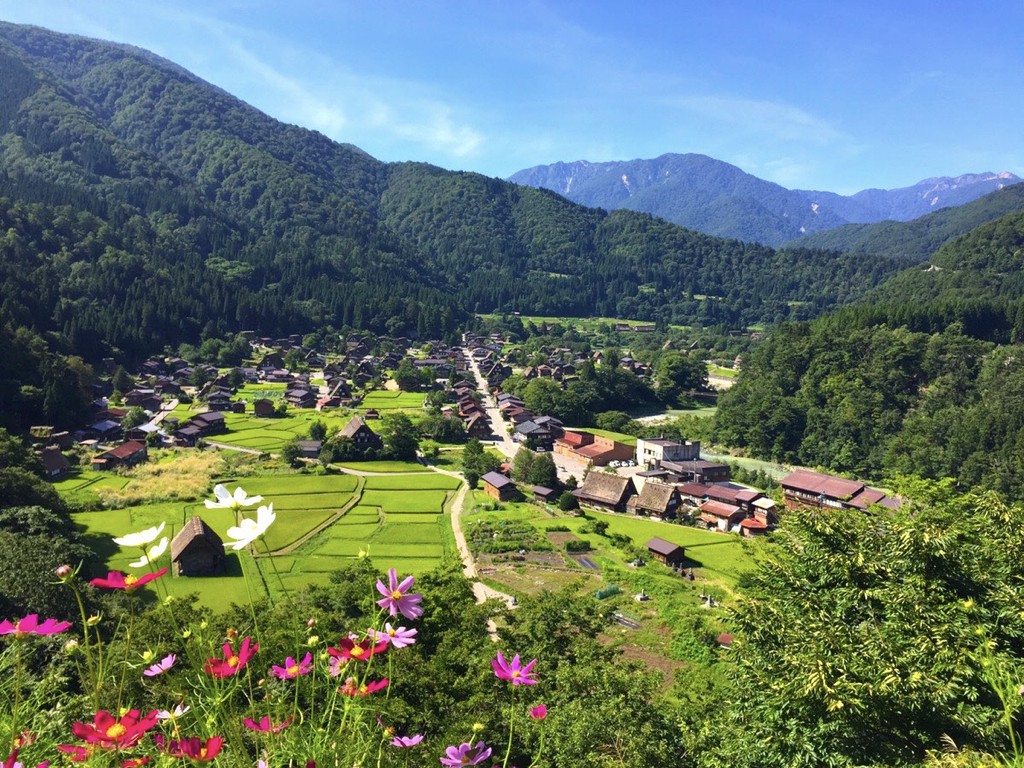
Ogimachi Village (荻町) is the most popular village which has the most Gassho-zukuri houses in Shirawakago.
Wada House (和田家) , the well-preserved Gassho-zukuri house, offers visitors a chance to look inside the traditional house. The house was built in Edo Period (1603–1868) and has been designated as Important Cultural Properties.

The main street Shirakawa Kaido Street (白川街道) runs though the village and many souvenir shops and stalls offering portable snacks such as Hidagyu Beef stand along the street. The hot spring facility Shirakawago no Yu (白川郷の湯) is located at the tip of the street. Wouldn’t be nice if you could stay at a hotels with hot spring onsen in Shirakawago?? Yes, you can!! Check it out and book it from here!!
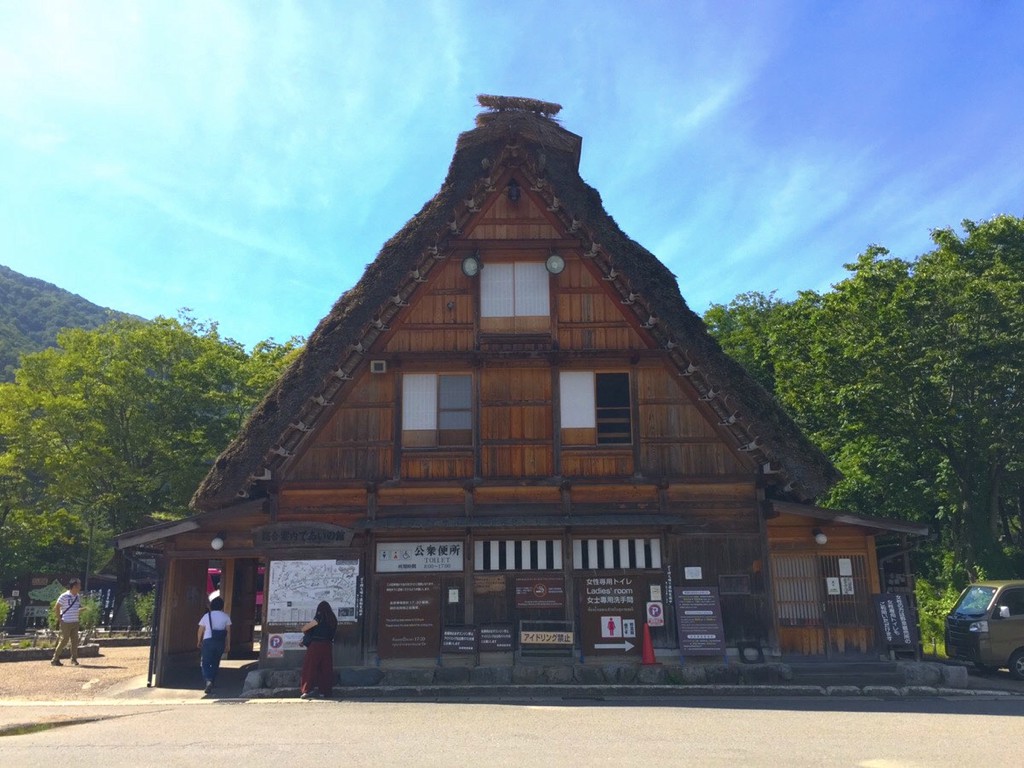
Tourist Information Center in a Gassho-zukuri house is situated beyond the river running parallel to Shirakawa Kaido Street.
To overlook the village, two observatories are accessible: Ogimachi-jo Castle Ruins Observatory (荻町城跡展望台) and Tenshukaku Observatory (天守閣展望台) . Shuttle Bus depart from the front of Wada House.
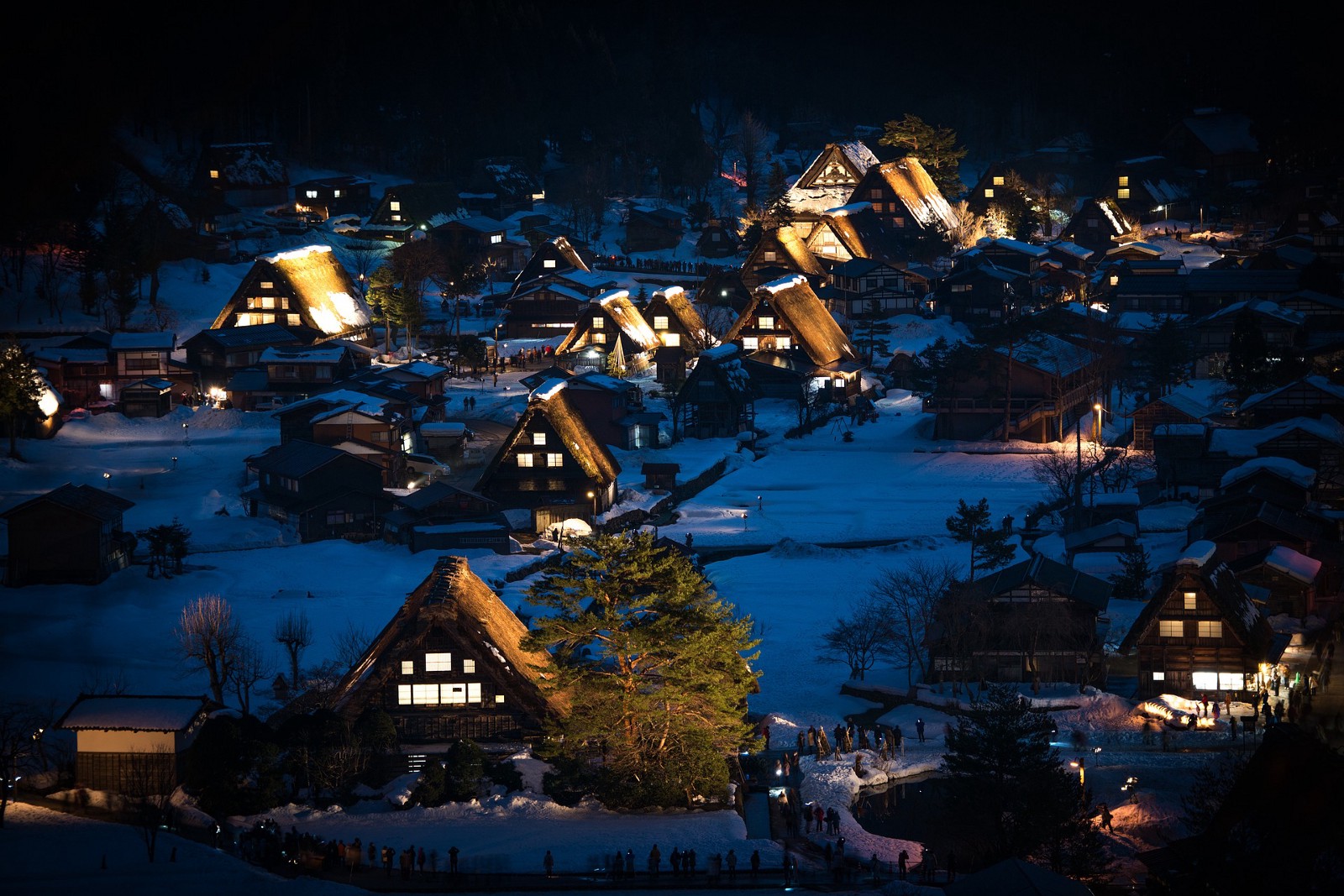
Light-up Event in Shirakawago in 2019
The Gassho-zukuri houses in the village are lit up in January and February.From 2019, it is required to make a reservation for the light-up event in Shirakawago. Check the detail and book the the light-up event right away in this link below!
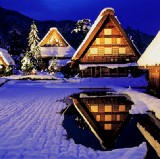
Gokayama is about 10 km north of Shirakawago. “Gokayama” means five valleys in Japanese, so the villages in Gokayama are surrounded by mountains. The area was famous for a producer of gunpowder material. The villages in Gokayama has more untouched and untouristy environment compared with that in Shirakawago. The scenery mixed with verdant rice fields and old venerable houses is beautiful enough for you to get lost for words.
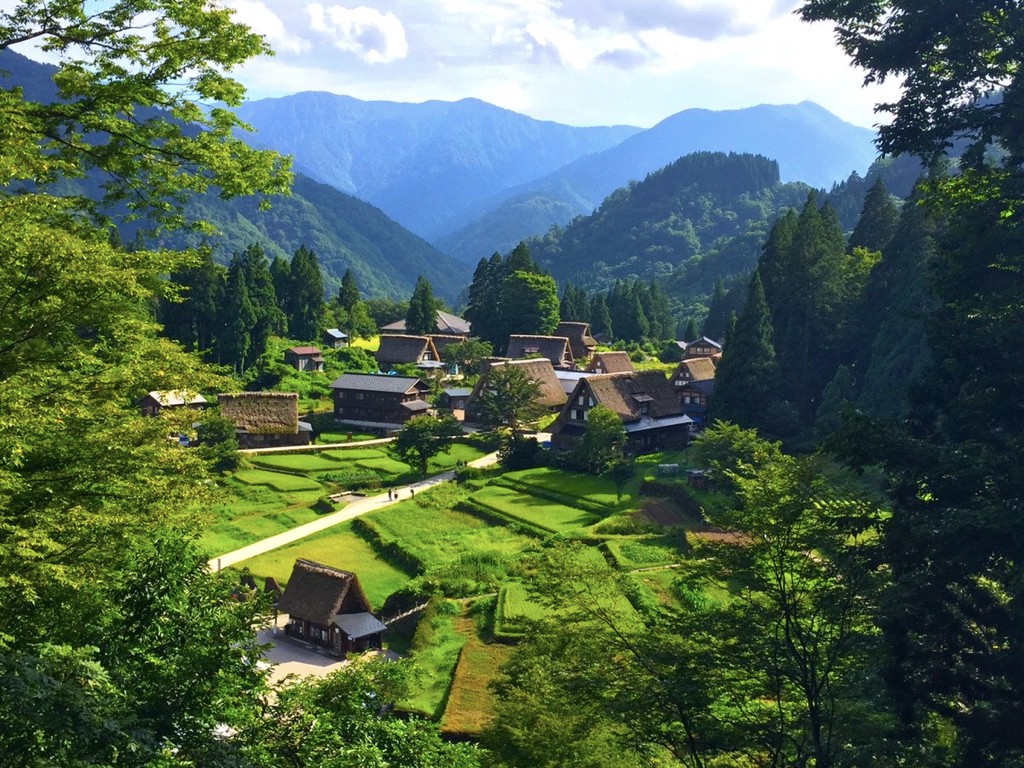
There are two Gassho-zukuri villages in Gokayama. The one Ainokura Village (相倉合掌造り集落) has 23 Gassho-zukuri houses where the 60 people still live an ordinary life. Some of the houses provide light meal and drinks as cafes and Japanese paper making experience. You can reach the best photo spot by 5 mins walking.

Another destination Suganuma Village (菅沼合掌造り集落) has 9 Gassho-zukuri houses and Shinmeisha Shrine (神明社) . The village is relatively small community, but you will get a warm and friendly welcome at the restaurants and shops there. Ensho-no-Yakata Museum (塩硝の館) introduce the production process the gunpowder material.
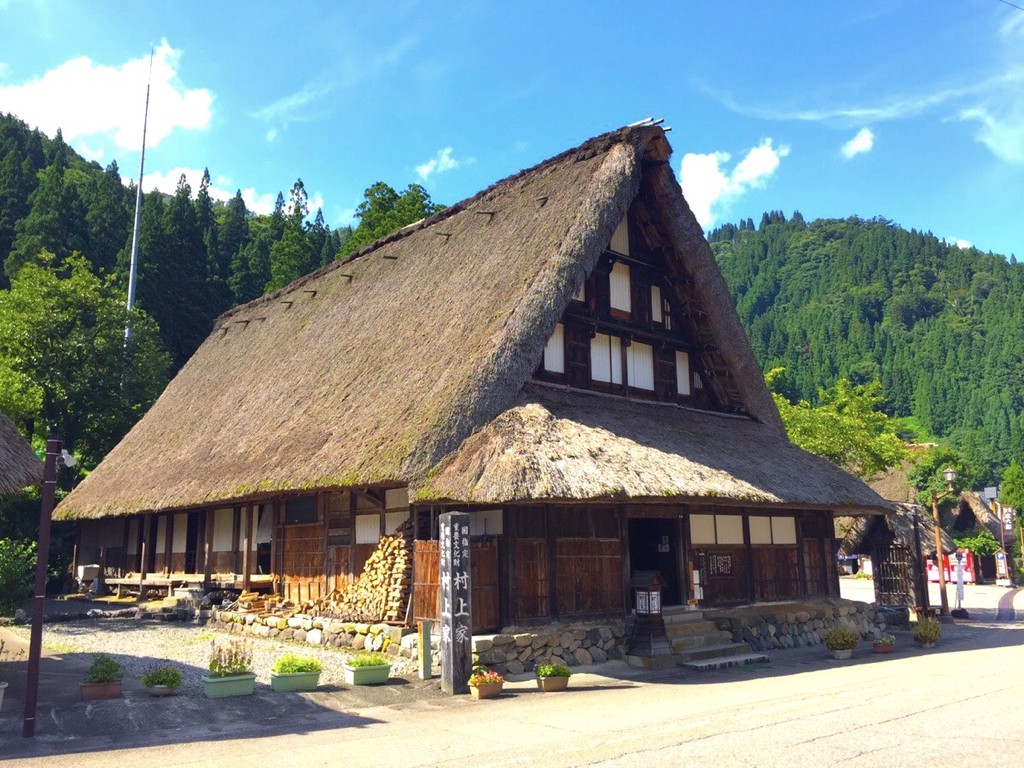
Between Ainokura Village and Suganuma Village, one of Important Cultural Properties Murakami House (村上家) is located. You can enter the largest Gassho-zukuri house and see over 1000 old tools and materials.
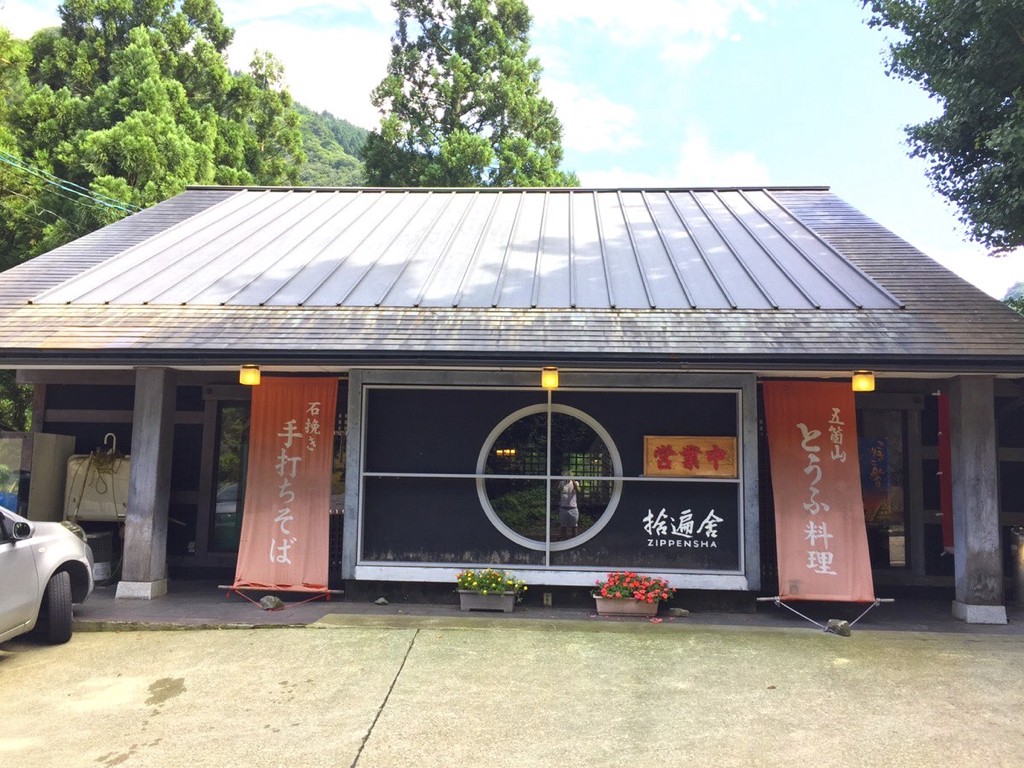
For foodies, note that Gokayama is famous for Japanese soba noodle and tofu (bean curd). You can enjoy both of the food at Jippensha (拾遍舎) just in front of Murakami House.
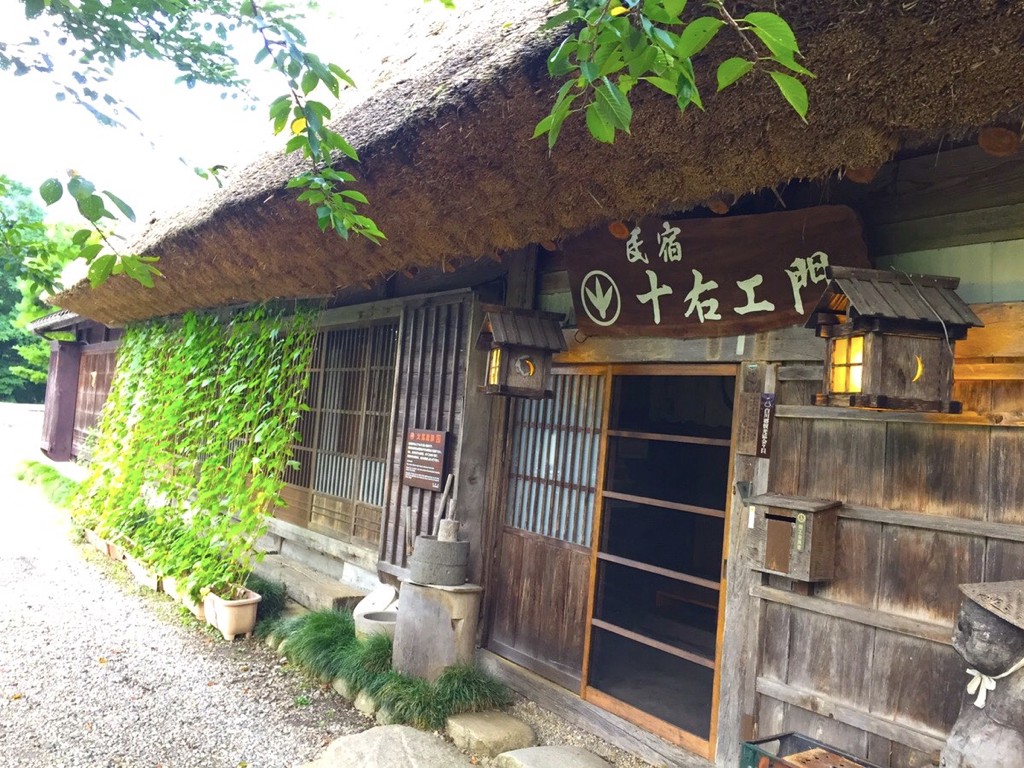
Moreover, did you know you can stay at Gassho-zukuri houses in the villages above? You will feel as if you became one of the residents there. For example, Juemon (十右ェ門) is a good choice for foreign visitors to stay. It is located in Ogimachi, Shirakawago. That experience must be your unforgettable memory.
Going to visit Shirakawago Village?? Gifu Prefecture offers many more hidden tourist attractions such as Seki City, the center of samurai sword production and Mino Ware, one of the most praiseworthy Japanese potteries. There are various day tours and activities available at several locations in Gifu Prefecture offering unique and traditional experiences!

If you prefer to get off the beaten track, Gokayama is more recommendable. Shirakawago is close to other popular destinations like Takayama and Kanazawa. If you would like to see the different side from Tokyo and Osaka, it is strongly recommended to make a plan to travel around Central Japan area. You might also like these:
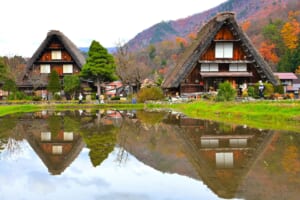
▽ Related Articles▽
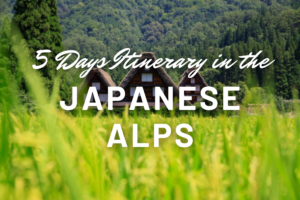
▼ Editor’s Picks▼
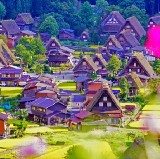
I'm writing by my motto: helping travelers spend their limited time experiencing something priceless in Japan. My articles won't let you down! Living in Tokyo and traveling many popular and hidden sites all over Japan, I deliver well-selected and latest tourist information to you from the perspective of “100% Japanese local”. My specific interests are island hopping, eating countless bowls of ramen, watching anime and reading manga. Enjoy Japan Web Magazine for recommended food spots, hidden gems Japanese Otaku (geek) culture, and everything about Japan :)
- Central Japan
- Things to Do
Ogimachi Village
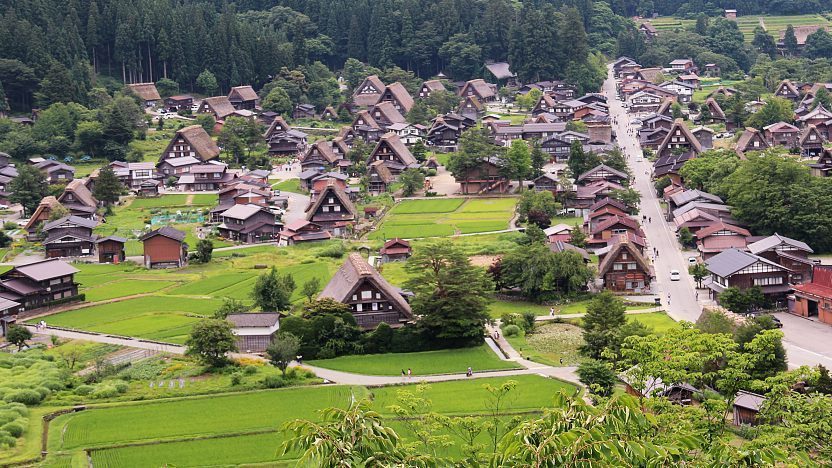
Ogimachi (����) is the largest village and main attraction of Shirakawa-go . Declared a UNESCO world heritage site in 1995, the village is home to several dozen well preserved gassho-zukuri farmhouses, some of which are more than 250 years old.
The farmhouses are quite amazing structures, designed to withstand the harsh winters while providing a place to work and live, and are best seen either covered in snow or surrounded by green fields. Many of the farmhouses are now restaurants, museums or minshuku , where you can stay overnight , the ultimate way of experiencing Shirakawago.
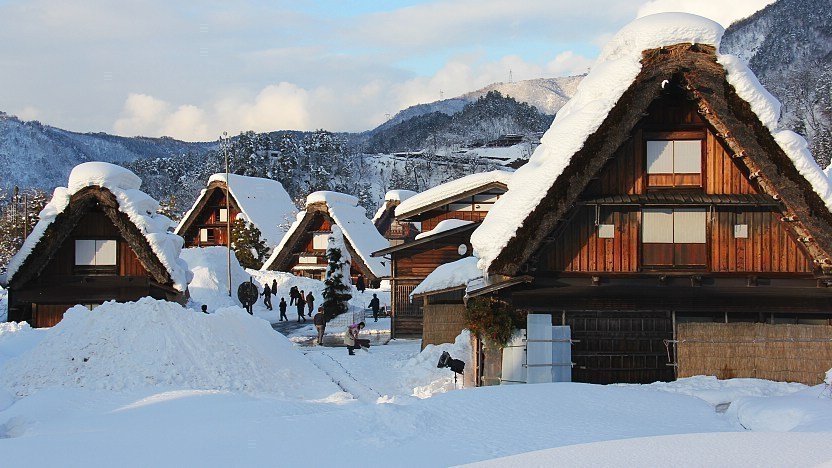
Furthermore, a number of farmhouses from the surrounding villages have been relocated to an open-air museum across the river from Ogimachi's village center in an effort to save them from destruction. This museum along with the large concentration of farmhouses and attractions in the village and the area's relatively good accessibility make Ogimachi the best place in Shirakawa-go and Gokayama to see gassho-zukuri farmhouses.
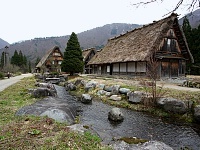
Gassho-zukuri Minkaen
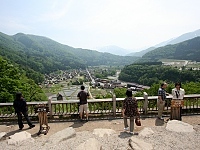
Shiroyama Viewpoint
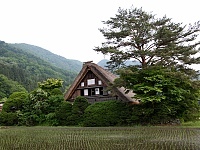
Wada-ke House
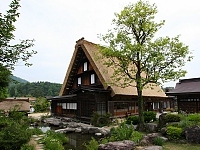
Kanda-ke House
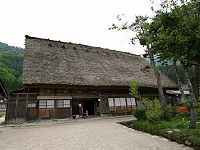

Nagase-ke House
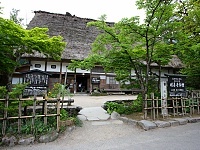
Myozenji Temple and House

Shirakawa-go no Yu
Attractions outside ogimachi.
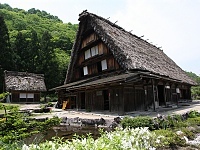
Toyama-ke House
Getting there and around.
Ogimachi is the transport hub of the Shirakawa-go region, where the bus lines from Takayama , Nagoya , Kanazawa , Toyama and Takaoka meet. The Shirakawago Bus Terminal is located at the entrance to the village center. Ogimachi is small and can be easily explored on foot.
How to get to and around Shirakawa-go and Gokayama
Questions? Ask in our forum .
Links and Resources
Shirakawa-go tourist association, shirakawa-go sightseeing guide, minkaen open-air museum, shirakawa village, hotels around shirakawago & gokayama.
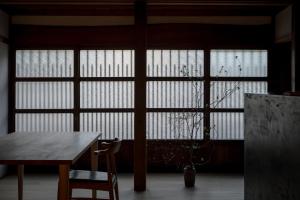
Niigata's Murakami City: Enjoy Fun Events, Sightseeing, and Local Cuisine!
We use cookies to improve our contents. Check the detail and update your settings here .
We use cookies to improve our services.
For more details, please click here .

- Change setting
- Food & Drink
- Accommodation
- Things To Do
- All the categories
Transportation
- Weather & Seasons
- Long-Term Stay
- Travel Tips
- Event Tickets
- About MATCHA
- Company Profile
- Things To Do in Gifu
- Food & Drink in Gifu
- MATCHA Special Features
Shirakawa Village: 2024 Winter Light-up, Things to Do, Access, Hotels

Shirakawa-go is a World Heritage Site in Gifu, renowned for its scenery with traditional thatched roof homes. Read on to learn the Shirakawa Village winter light-up schedule for 2024, places to visit, local dishes, and how to travel to Shirakawa from Tokyo and other major cities.
The Historic Village of Shirakawa-go

Shirakawa-go is an area known for its beautifully preserved traditional Japanese landscape. It is situated in Gifu Prefecture in central Japan. In 1995, the village was registered as a World Cultural Heritage Site along with Gokayama in neighboring Toyama Prefecture.
The Shirakawa-go Village has about 100 buildings made in gassho-zukuri style (*1), common in agricultural villages of old Japan.
*1 Gassho-zukuri: a traditional Japanese architecture style with thatched roofs with steep slopes that resemble two hands in a prayer position.
Read on to learn seven things to do in Shirakawa-go , including the nighttime light-up of the village in January-February 2024, and how to get to Shirakawa-go from major cities .
Shirakawa Village: Things to Do and Travel Tips
1. Enjoy a Panoramic View of Shirakawa-go 2. See the Shirakawa-go Winter Light-Up: 2024 Dates 3. Try Delicious Local Food 4. Tour Gassho-style Houses 5. Visit Temples and Hot Springs 6. Stay Overnight in Shirakawa-go: The Best Lodgings 7. Explore Nearby Areas: Hida-Takayama, Gero Onsen, Hida Furukawa Weather in Shirakawa-go and What to Wear How to Get to the Shirakawa Village and Discounted Passes

1. Enjoy a Panoramic View of Shirakawa-go
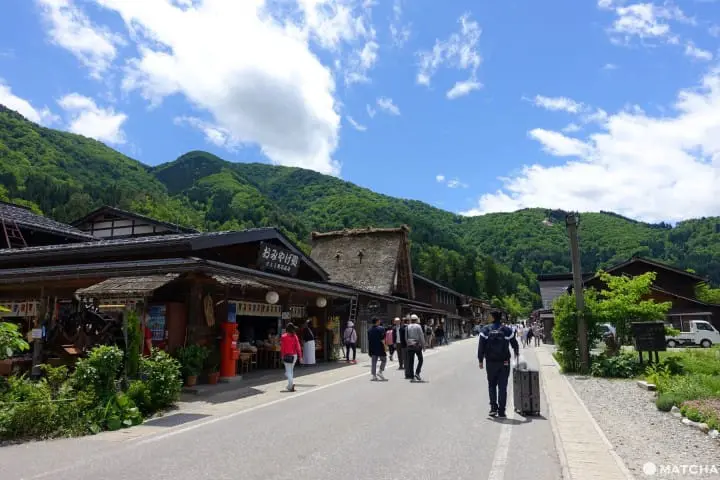
The main street of Shirakawa-go
It takes around two to three hours to walk around Shirakawa-go to see it in full. Stroll around the village to see gassho-style houses, souvenir shops, restaurants, and cafes. At the center of the village is the main street with many shops and other facilities.
After walking for a bit, head to a spot where you can survey the entire village.

This is the observation deck where you can take in a full view of the historic village! It’s also great for taking group photos.
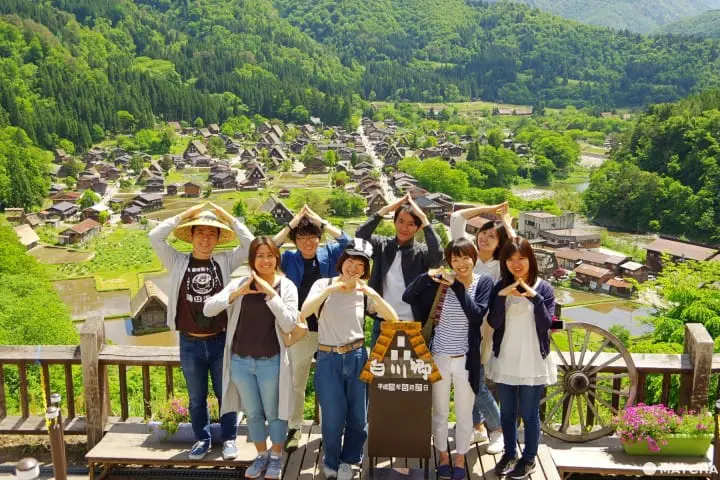
The observation deck is about a 20-minute walk along the promenade from the bus terminal. In the winter, the promenade is closed, but you can ride a shuttle bus to get from the village to the observation deck.
Shuttle buses depart every 20 minutes between 9:00 – 15:40 and cost 200 yen one-way. Buses are operated throughout the year. Shuttle Bus Terminal Map

Shirakawago Observatory
2. Shirakawa Village Winter Light-Up 2024

Shirakawa-go is known for its beautiful appearance during winter, when the area receives considerable snowfall. You can see the historic village in its famous snow-covered state from December to February.
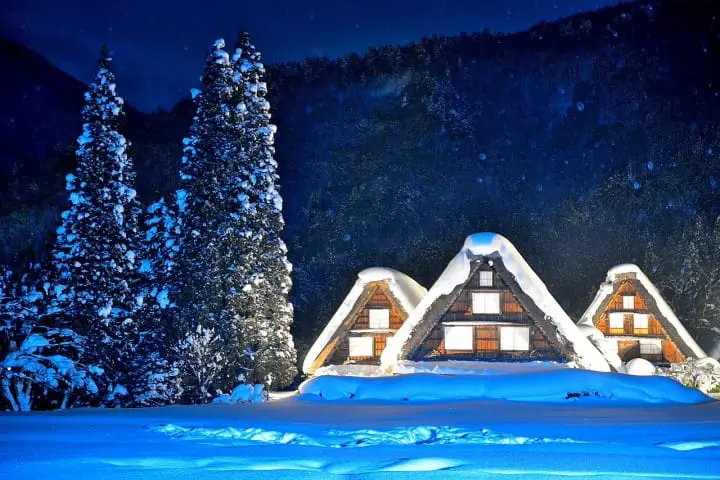
Every year in January and February, the Shirakawa-go Village is lit up at night for six days. Under the pitch-black winter sky, the sight of the gassho-style houses floating along with the white snow is truly enchanting.
Please note that the Shirakawa Village Light-up event can only be enjoyed with a prior reservation.
In 2024, the nighttime light-up at Shirakawa-go will be held on the following dates from 17:30 to 19:30 : - January 14 (Sunday) - January 21 (Sunday) - January 28 (Sunday) - February 4 (Sunday) - February 12 (Monday) - February 18 (Sunday)

Due to the reservation-only policy, there will be restrictions on entering the village during the illumination event. If you make prior reservations for staying at a ryokan (traditional Japanese inn), parking permits, bus tickets, or bus tours, you will be able to participate.
Please refer to the details on the Shirakawa-go Tourism Association's website to learn how to book a stay for 2024.
You can also book a tour that includes the 2024 light-up from the activity booking site Klook.
↑ Return to the top of article.
3. Enjoy Local Cuisine in Shirakawa-go
Shirakawa-go has many restaurants and food stands where you can satisfy your appetite. Below are recommended places for having a sit-down meal and snacking on during a stroll.
Hida Beef – Local Gifu Wagyu Beef

Hida-Takayama Hida Beef Skewer
Hida beef is a variety of wagyu beef from Gifu. Meat considered to be Hida beef has passed strict inspections, a smooth texture, and an exquisite taste. The cattle are raised freely in nature.
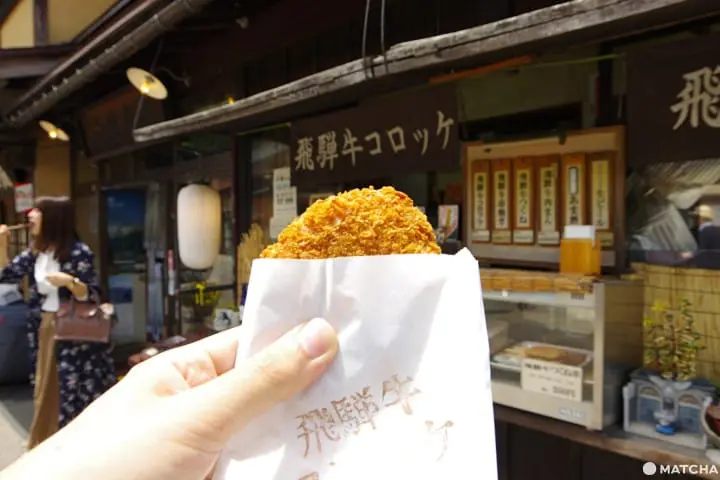
A croquette made with Hida beef
In Shirakawa, visitors will find many shops that sell grilled Hida beef skewers or croquettes for takeout. You can also eat Hida beef at restaurants.
Restaurants and places throughout Gifu Prefecture serve Hida beef in various forms, including steak, shabu-shabu (hot pot), and grilled skewers. Be sure to give it a try.
Gohei Mochi Cakes: Great for a Walk!
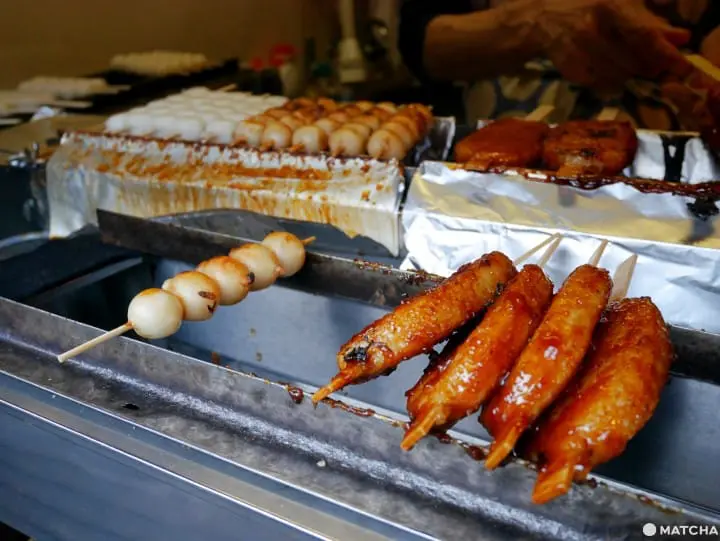
Mitarashi dango (mochi with a sweet soy glaze; left); gohei mochi (right)
Gohei mochi is a regional cuisine found in mountainous regions like Gifu and Toyama prefectures. To make gohei mochi, rice is mashed and formed into a flat shape before being put on skewers. It is then flavored with a salty-sweet sauce and grilled.
The sauce usually contains miso, soy sauce, and walnuts, but the ingredients vary slightly depending on the region. It can eaten right off the skewer, making it the perfect snack for a stroll.
Soba Made with Pure Water
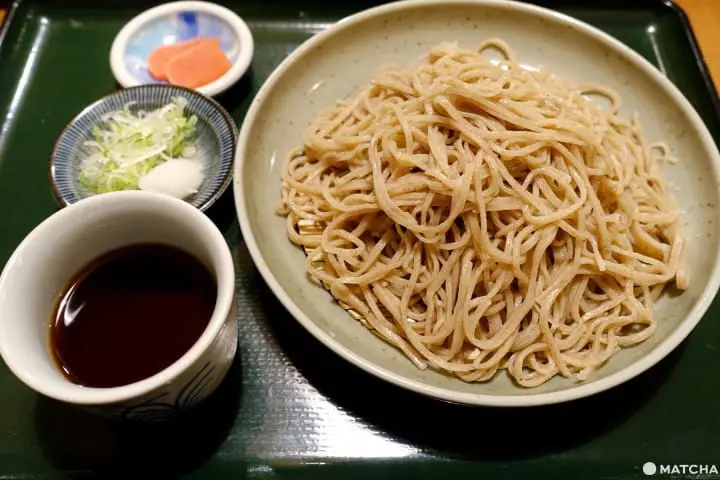
The Hida-Takayama area in Gifu, where Shirakawa-go is located, is known for its buckwheat cultivation. We recommend having zarusoba, chilled soba noodles with a delicious buckwheat aroma, or kakesoba, which comes in a warm broth with vegetable tempura.
Wakimoto in Shirakawa-go is a restaurant recommended for diners who want to enjoy Hida beef and soba noodles.
Their generously-portioned set menus, such as the Mini Grated Yam Bowl and Soba Set (*2) or the Mini Hida Beef Steak Bowl and Grated Yam Soba Set are especially popular. You can also order the dishes separately, like the Grated Yam Bowl or the Hida Beef Steak Bowl.

Soba Wakimoto
*2 Jinenjo: a type of Japanese yam that is not cultivated, but grown wild in the mountains. It grows straight up in the soil and has a long, narrow shape. It is commonly grated.
Traditional Cafes and Sweets

Yoze, a shop serving gelato
Shirakawa-go also has places where you can enjoy desserts and cafes in old gassho-style Japanese homes. Take a quick break when you’re tired of walking.
Popular gassho-style cafes include Ochiudo , known for delicious zenzai (a sweet red bean soup), and Kyoshu , where you can enjoy coffee in a quiet environment.
4. Tour Gassho-style Houses
Some of the houses in the village are open to the public for tours, which will allow you an up-close look at the lives of people in Japan in the past.
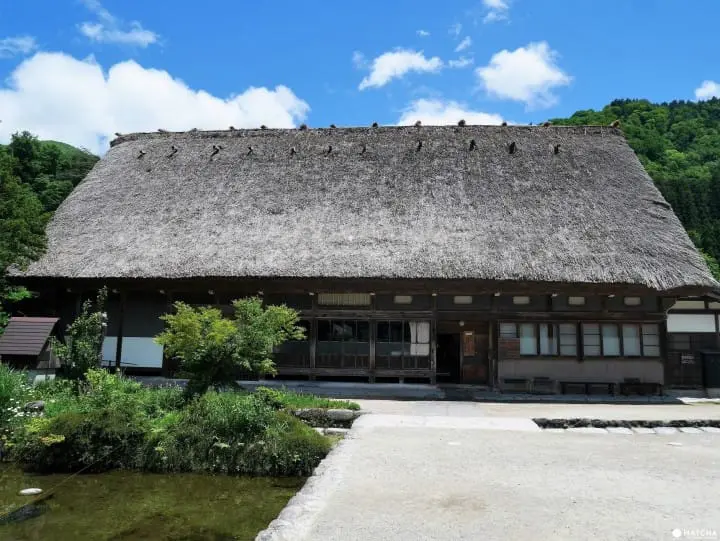
The Wada House is a gassho-style home. It is the largest in the village and is designated as an Important Cultural Property of Japan.
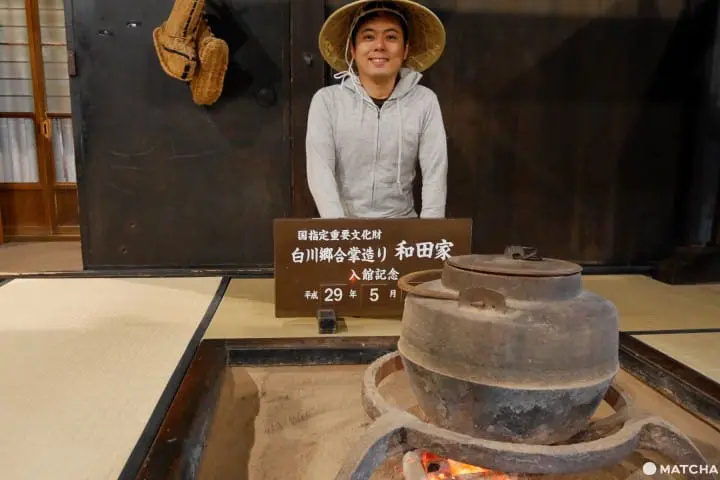
Be sure to take a picture in front of the sunken hearth!
The house is still used as a residence, but the first and second floors are open for tours. The sunken hearth on the first floor is lit all year round, making the surroundings feel very cozy. Admission costs 300 yen for adults and 150 yen for children.

Wada family

Kanda House
The first through fourth floors of Kanda House are open for public viewing. Its magnificent beams and pillars are incredible and a must-see.
Wild grass tea that is served for free is another fun part of the house. The tea is made with water heated in an iron kettle on the hearth. Admission is 300 yen for adults and 150 yen for children.
Kanda family
5. Visit Temples and Hot Springs

Myozenji Temple
Myozenji Temple , designated as an Important Cultural Property by Gifu Prefecture, also offers tours of its buildings and a chance to see its old tools. The temple boasts the largest thatched roof in the village, leaving a lasting impression on all visitors.

Meizenji Temple
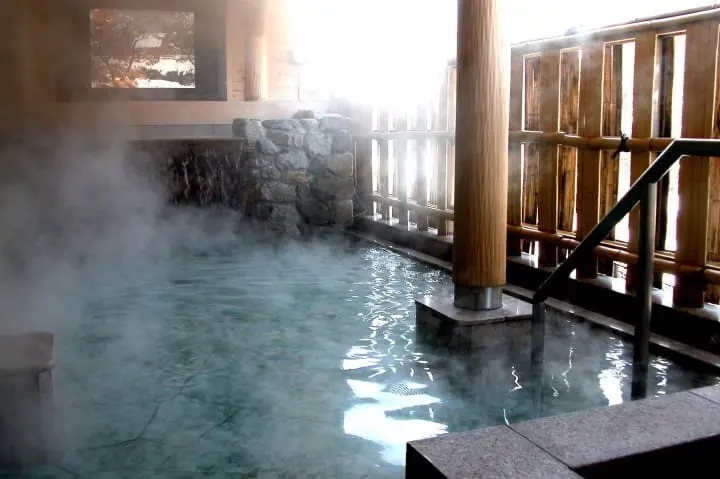
Picture courtesy of Shirakawa-go no Yu
We also recommend Shirakawa-go no Yu as a perfect way to end the day. Here, you can unwind and relax in a natural hot spring. From the open-air baths, you can enjoy the breathtaking view of the river flowing below. Admission fees are 700 yen for adults and 300 yen for children aged six to twelve (junior high school students).
Natural hot spring Shirakawago no Yu
6. Stay at a Gassho Home! Lodgings in Shirakawa-go
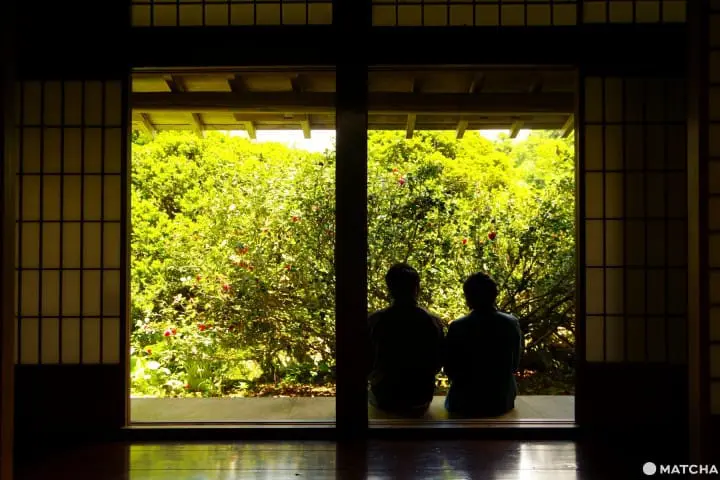
Shirakawa-go can be enjoyed in one day, but it’s also a good option to stay at a private home in the village. There are also traditional homes you can stay at that will create a uniquely Shirakawa-go experience.
Refer to the following website for a list of lodgings : https://shirakawa-go.gr.jp/en/stay/
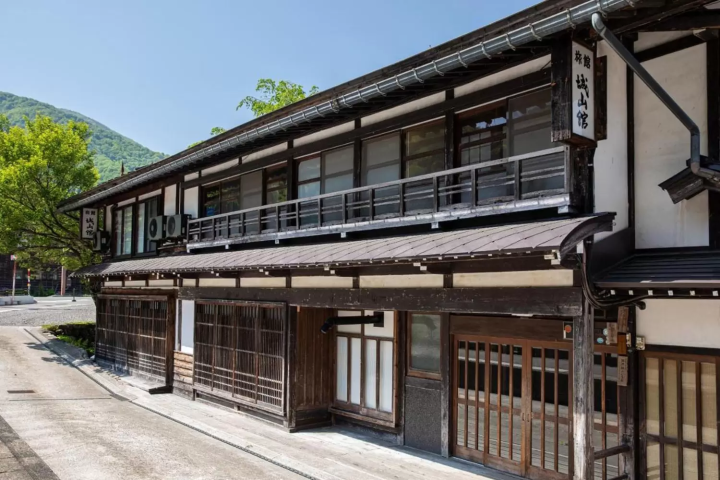
Picture courtesy of Booking.com
If you wish to enjoy the hospitality of a ryokan (Japanese inn), we recommend staying at Shiroyamakan .
This inn has garnered a reputation for the delicious food served here and is managed by a family who has lived here for many generations. The building itself has a long history and was designated as an Important Traditional Building.
Check room availability at Shiroyamakan
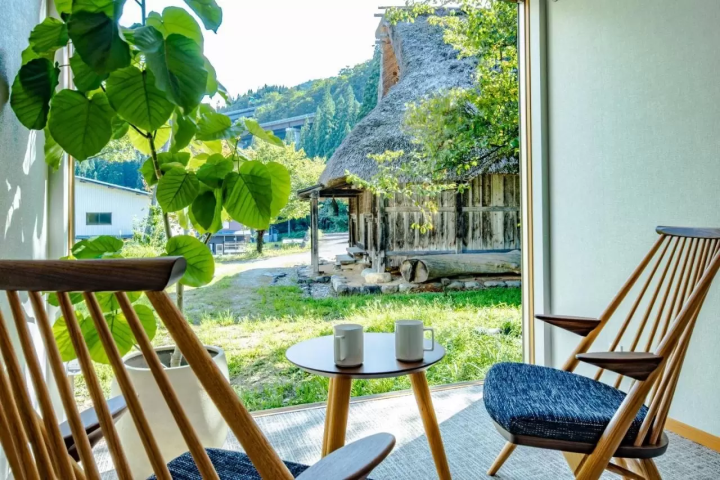
If you prefer comfort and modern amenities, we recommend CURIO Shirakawa-go , a hotel that opened in 2022 in the Shirakawa Village.
Guest rooms are bright and clean, featuring a modern atmosphere. It takes about 20 minutes on foot to reach the heart of Shirakawa-go from the hotel. This hotel is ideal for those who wish to enjoy a leisurely stay in peaceful surroundings.
Check room availability at CURIO Shirakawa-go
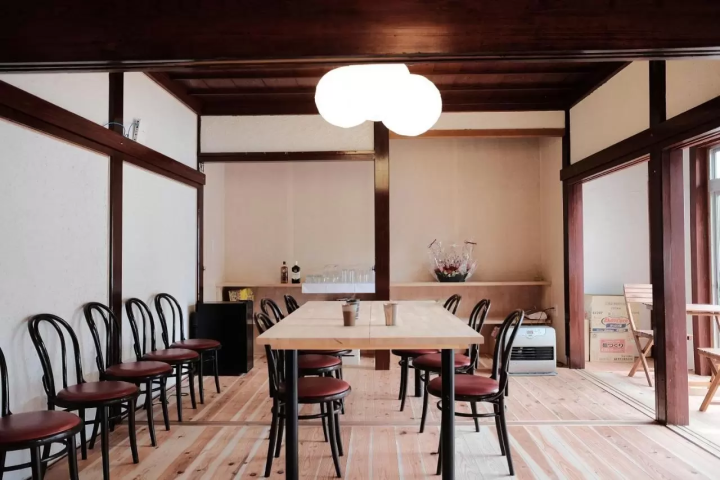
If you're looking for budget-friendly accommodation, we highly recommend Shirakawa-go Guesthouse KEI . A one-night stay for one person starts at just 3,000 yen per night.
This guesthouse is located only 20 minutes on foot from the center of Shirakawa-go. Guests receive a full range of facilities and services, including a shared kitchen, free parking, and free towel rentals. It also has English-speaking staff, so guests can have a worry-free stay.
Check room availability at Shirakawa-go Guesthouse KEI
For other lodging recommendations, please refer to the article linked below.

7. Explore Nearby Areas: Hida-Takayama, Gero Onsen, Hida Furukawa
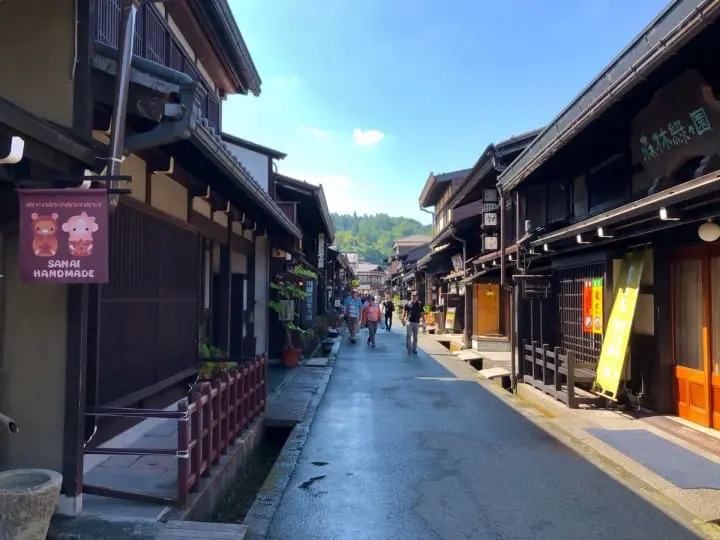
The streetscape of Hida-Takayama
There are several major tourist destinations near Shirakawa-go.
Hida-Takayama is an area nicknamed “Little Kyoto of Hida” for its charming traditional townscape. Hida Takayama is where you can visit a morning market with a history starting from the Edo period.
If you wish to visit the Shirakawa Village and Takayama on a day trip, consider booking the bus tour linked below.
Gero Onsen , a hot spring resort considered one of the three highest-quality hot springs in Japan, is another famous location in the area.

Keta Wakamiya Shrine in Hida Furukawa, a shrine featured in “Your Name.”
There are also several other places to see like Okuhida Onsenkyo , a hot spring area scattered with five hot springs in the mountains, and Hida Furukawa , a town that was the model for the popular animated film “Your Name.” The area is easily accessed from Kanazawa in Ishikawa Prefecture, another popular sightseeing area.
If you’ll be traveling around Shirakawa-go, Hida-Takayama, Kanazawa, or the Toyama area, then use the JR Takayama-Hokuriku Area Tourist Pass (5 days, 19,800 yen) to save on transportation costs.

Weather in Shirakawa-go and What to Wear

As the Shirakawa-go area is in the mountains, it has a cooler climate throughout the year in comparison to Tokyo and Osaka.
Shirakawa-go receives substantial snow from December to February, with a low of zero degrees Celsius on most days. It is best to visit while protecting yourself against the cold. Even during the summertime (around July to September), the temperature will reach a maximum of 30℃ or 20℃ at the lowest, so it is suggested to bring a long-sleeved outer garment with you.
9. How to Get to Shirakawa-go

Hokuriku Shinkansen
Read on to learn how to get to Shirakawa-go from major cities . If you are traveling from Tokyo or Osaka, please note that you will need to make a transfer.
From Kanazawa
Shirakawa-go is directly accessible from Kanazawa via bus. Board the Nohi Bus on the Takayama-Shirakawa-go/Kanazawa Route from Kanazawa Station. Get off at the Shirakawa-go stop (about one hour and 20 minutes; 2,600 yen).
From Nagoya
Nonstop buses for Shirakawa-go also depart from Nagoya. Take the Gifu Bus on the Express Shirakawa-go Route from the Meitetsu Bus Stop in front of Nagoya Station. Alight at the stop for Shirakawa-go (about two hours and 40 minutes; around 3,000 yen).
There are no direct trains or buses from Tokyo, so you will need to make at least one transfer.
Ride the Hokuriku Shinkansen from Tokyo Station and get off at either Toyama or Kanazawa Station (about two hours and a half to three hours; 12,760 – 14,180 yen). Transfer to the Nohi Bus on the Takayama-Shirakawa-go/Kanazawa Route, then exit at Shirakawa-go (about one hour and 20 minutes for 2,400 – 2,600 yen).
Ride the Limited Express Thunderbird from JR Osaka Station, then exit at Kanazawa Station (about two hours and 40 minutes; 7,590 yen). Transfer to the Nohi Bus on the Takayama-Shirakawa-go/Kanazawa Route, then exit at Shirakawa-go (about one hour and 20 minutes; 2,600 yen).
Use the Convenient JR Hokuriku Arch Pass
The JR Hokuriku Arch Pass is a rail pass jointly operated by JR East and JR West, which allows you to travel around the Hokuriku region, including Kanazawa and Toyama, from Tokyo and Osaka. You can travel from Tokyo to Kansai via the Hokuriku region or vice versa.
Within the designated area, you can have unlimited rides on the Hokuriku Shinkansen (Tokyo to Kanazawa), and on regular designated and unreserved seats on JR East and JR West limited express, express, and local trains (including New Rapid and Rapid services) for 7 days.
In addition, you can also use it on Tokyo Monorail and Noto Railway (between Nanao and Wakura Onsen). You can purchase it online or at domestic ticket counters in Japan, but if you purchase it from a designated JR sales agent overseas, you can get a discount of 1,000 yen.
If you travel from Tokyo to Osaka and want to visit Shirakawa-go and Takayama on the way, use the JR Hokuriku Arch Pass (7 days, 24,500 yen) to save on transportation.
Visit Shirakawa-go
Visitors can spend an entire day experiencing traditional culture in Shirakawa-go. Go and take in the relaxed pace of the agricultural village together with the centuries-old architecture.

Main image by Pixta
Born in Yamagata Prefecture. I have experience working in community development at the foot of Mt. Fuji and PR for local products across the country, and am currently working in Tokyo to disseminate information about Yamanashi Prefecture. A mother of one who loves local gourmet food and alcohol.
Related topics
Top articles.

Takayama Travel Guide – 15 Things To Do, Access, Festivals, And More

Related Article

Top 45 Cherry Blossom Spots in Japan - 2024 Guide

Kenrokuen and Other Historic Attractions - A Guide To Kanazawa

Gifu Complete Travel Guide: Attractions, Festivals, And Local Food

From Centrair Airport - A Convenient Trip To Hida Takayama And Shirakawa-go

Okuhida Onsen Village In Gifu: Access, One-Day Hot Springs, And Inns

Hida Takayama Travel Guide - Shirakawa-go, Beautiful Views, Onsen, And More!
Start planning your trip
Special Features

Popular Searches
Latest news.

Showa Kinen Park Flower Festival 2024: Enjoy Nemophila, Tulips, and More!

A Must for Nature Lovers! Win a Free Stay at Unzen Amakusa National Park

A World of Light and Color! Van Gogh Alive in Japan 2024

Cherry Blossom Light-up in Tokyo! Yomiuri Land's Jewellumination

Cherry Blossoms and Sky Lanterns! Aichi Hanami Lights 2024

Japan's Public Holidays and Long Weekends in 2024

Tokyo's Fall Foliage: Top 10 Gardens and Parks in 2023

How to Travel to Kyoto From Osaka: The Fastest and Cheapest Ways

How to Travel to Osaka from Tokyo in 2024: Price Comparison

Shinkansen: How to Buy Bullet Train Tickets
New articles.

Photo spots you'll want to visit with your camera when sightseeing in Yokohama

Japanese Cultural Experiences in Tokyo: 12 Unique Workshops

[Tours departing May - September 2024, meeting in Nagoya] Introducing the tour "Ride three Kintetsu Limited Express trains: Shimakaze, Aoniyoshi, and Hinotori! 2-day trip to Ise, Kyoto, and Nara"!

[Shizuoka/Izu] May 12th (Sun) Sutra copying event at Shuzenji Temple (reservations required)

Best Flower Spots in Fuji Kawaguchiko: Sakura, Hydrangea, Lavender and More!

- Destinations
- Travel Resources
Select Page
Shirakawa-go and Takayama
Asia , Destinations , Japan
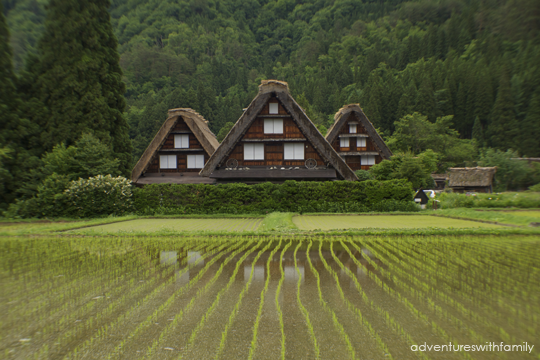
Shirakawa-go is one of the most scenic villages in the world. Located at the foot of a mountain in Gifu, Chubu, Japan, this UNESCO World Heritage site is famed for its traditional farmhouses with thatched-roof, called Gassho-Zukuri.
Shirakawa-go can be reached by taking a Shinkansen (bullet train) from Kyoto to Nagoya, then a wide-view Hida train to Takayama, and finally a Nohi bus. While waiting for the next bus to Shirakawa-go, we took a walk along Takayama’s beautifully preserved old town.
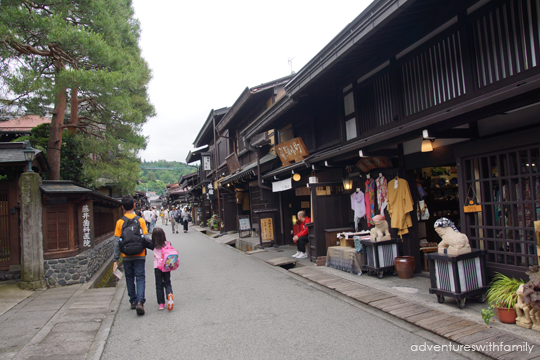
Takayama’s Old Town is lined with an art gallery, a museum, eateries and shops selling traditional Japanese arts and crafts and clothes. Visitors also had the opportunity to be pulled on traditional rickshaws.
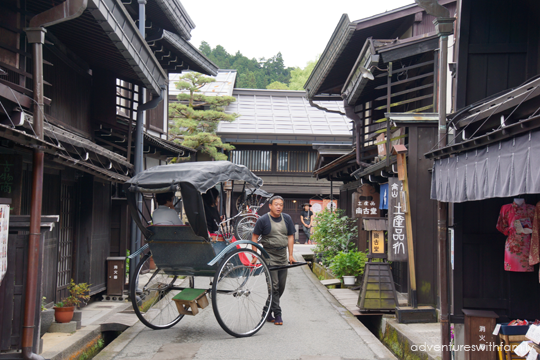
Shirakawa-go
The hour-long bus ride from Takayama to Shirakawa-go took us through the mountainous region in Gifu.
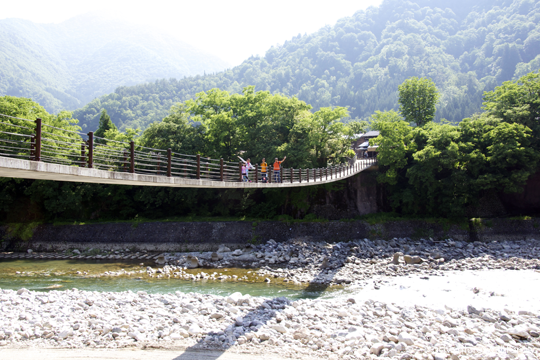
Upon arrival, visitors must first cross a long suspension bridge above, and pass through the gate below to enter the village.
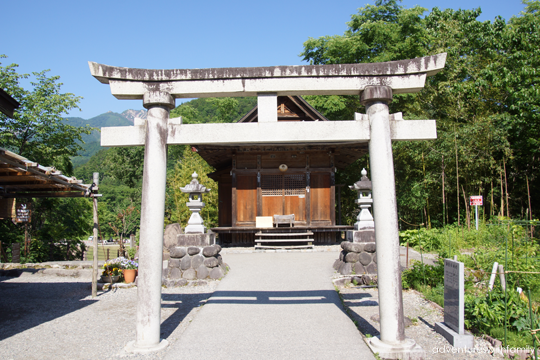
The beautiful Gassho-zukuri farmhouses was built in the Edo period more than 200 years ago.
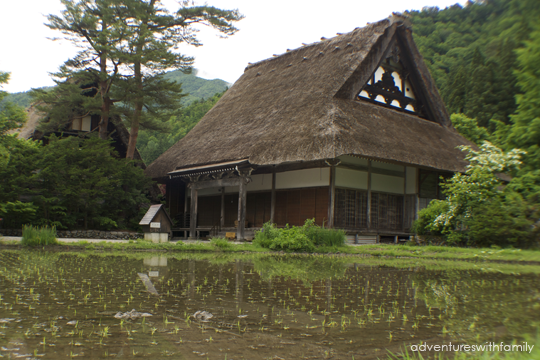
The architectural style is unique to the area and the roofs were designed to withstand heavy snowfall in winter. The village subsisted on the cultivation of silkworms.
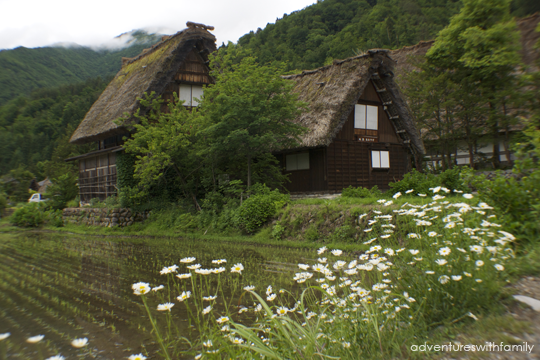
It was a great thing that we planned to stay overnight, because by 5pm, most of the day-trippers had left the village, giving us the opportunity to enjoy the peace and tranquility of the village without the crowds.
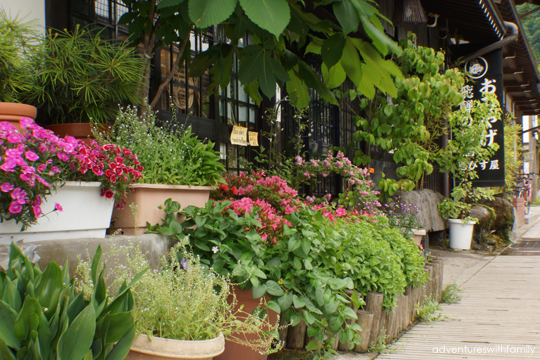
Take a look at the picture on the right below. Have you ever seen a drain so clean that fishes could survive?
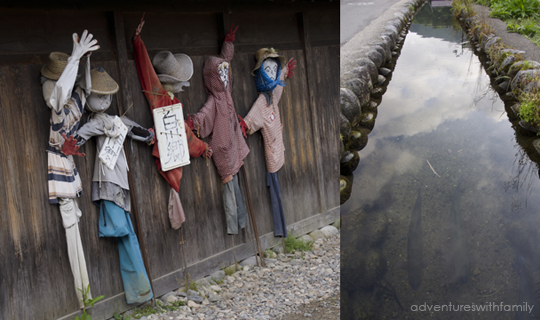
Surrounded by mountains (pictured below), the area is cool even near Summer.
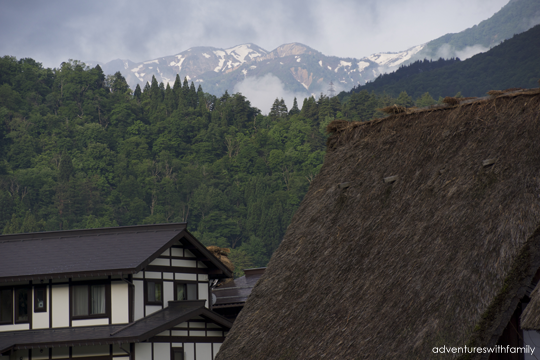
Farmhouse stay
While most people made a day trip to Shirakawa-go, we decided to fully immerse ourselves in the Japanese culture and rural living by staying overnight at one of the farmhouses. There were a number of family-run farmhouses that offered an overnight stay. The farmhouse where we stayed was called Hisamatsu as pictured below.
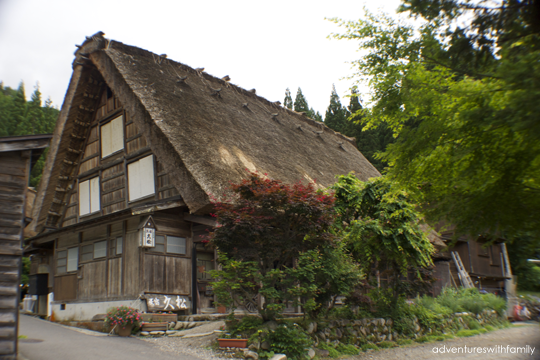
Hisamatsu had 4 Japanese-style guest rooms with a shared modern bathroom and several toilets complete with electric toilet seats. Guests can choose to have homemade Japanese-style cuisine with rice grown in the village. Japanese meal options like vegetarian, vegetarian plus fish, and no pork were also offered.
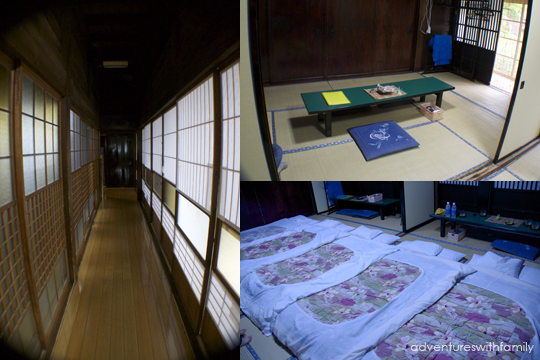
Shirakawa-go was really a great place to relax and enjoy the peaceful countryside and the fresh crisp air. It was a huge contrast to crowded big Japanese cities like Tokyo.
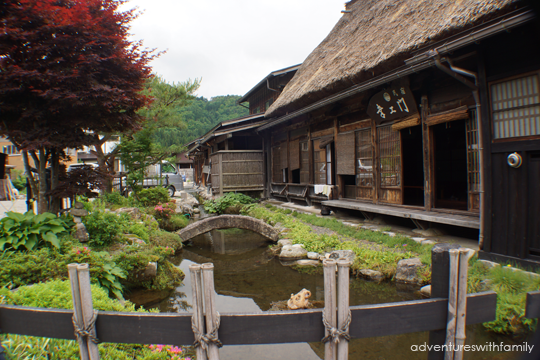
The next morning, our host served us breakfast before we headed to the Tateyama Kurobe Alpine Route to see the amazing Snow Wall .
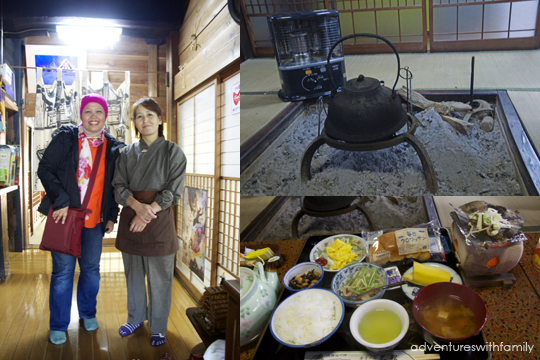
This trip was part of our Japan vacation covering Kyoto , Tokyo and the Disney parks . Read more about our 11-day Japan itinerary .
- Apart from coming to Shirakawa-go from Kyoto, you could also reach Shirakawa-go from Tokyo via bullet train to Kanazawa and then take the Nohi bus . Alternatively, you could take trains from Tokyo via Nagoya and Takayama and then take the Nohi bus . You can check train schedules at hyperdia.com .
- To book a stay at one of the farmhouses, contact the Shirakawa-go Tourist Association via email at [email protected] . The staff are fast to respond and communicate well in English.
- There is an observatory deck where you can get a panoramic view of the entire village. A shuttle bus is available to bring you to the observatory deck but the last bus departs at 3pm.
- If you visit Shirakawa-go in winter, then try to catch it on specific days when they illuminate the whole village. From the pictures I’ve seen, the village looked absolutely magical during the light-up.
You might also like:
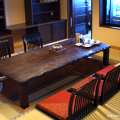
About The Author
Rosie is a mummy to 3 kids. She enjoys going on travel adventures with her family. Her trips are free-and-easy, family-oriented and mostly budget-friendly.
Related Posts

Krabi Town Night Market
December 31, 2015
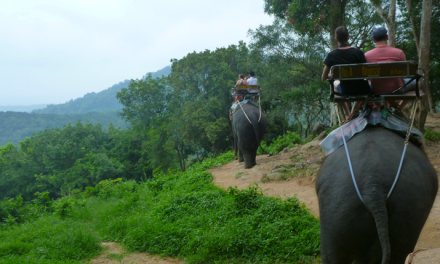
Siam Safari and Elephant Trekking in Phuket
September 12, 2016
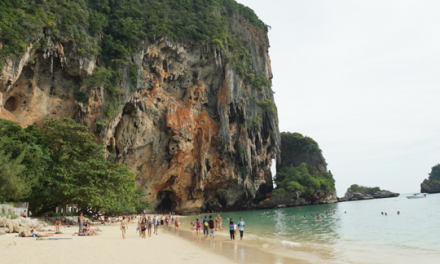
Railay Beach in Krabi
January 16, 2016

Tanah Lot Sunset
August 24, 2013
12 Comments
Hello. What time did you leave Kyoto? What time did you arrive in Shirakawa-go? Thanks! By the way, I love your posts since I have 3 children as well. Thank you so much!
Hi Lyn, We left Kyoto station at 9.45am, took the Shinkansen Hikari 462 to Nagoya, and changed to the Ltd Exp (Wide View) Hida 7 train to Takayama. We arrived in Takayama at 13:11. Another option was to take the direct Hida 5 train from Kyoto at 8:31 and arrive in Takayama at 12:15.
Hi, Am planning to visit Shirakawa-go and Tatemaya Kurobe Alpine route with the cablecar and all from Tokyo. Could you advise me how I should plan my route? Will I have time if travel from Tokyo to Shirakawa-go , stay a night and do the Tatemaya Kurobe Alpine route on the next day head back Tokyo thereafter ? What mode of transportation should I go with for my whole journey? Àm travelling last week of June 2016. Would appreciate your kind advises. Lucy
Hi Lucy, you can travel from Tokyo early at around 8am, and reach Takayama by 1+. Then take the bus to Shirakawa-go by around 3pm. On the next day, take the first bus to Kanazawa, and then take the train to Tateyama. You can return to Tokyo after you have visited the Alpine route.
how much it cost to stay overnight per pax ? do we have to pay in advance etc ?
thanks for your information
Hi Wulandari, The cost for an overnight stay with dinner and breakfast was 9,400 Yen per adult, and 7,800 Yen per child. The cost for an overnight stay without meals is 6,800 Yen per adult and 5,500 Yen per child. The payment is collected directly by the owner in cash.
hi, from takayama to shirakawgo, do you need to reserve the nohi bus or can you buy on the day of travel at the bus station in takayama?
Hi, I did book it in advance.
Hi Rosie, will 3D2N be sufficient to cover Takayama, Shirakawa-Go and part of the Tateyama Kurobe Alpine Route? I’m travelling with my family of 6 (2elders, 2adults & 2kids) and would like to find out what is the most efficient way of transport and accomodation.
Hi, Yes 3D2N should be sufficient.
your trip seems amazing! We are going to Japan in November and want to sleep over shirakawa-go. What is the most direct and fastest way to Shirakawa-go -via Tokyo or Kyoto? I also here people rent a car. Would you suggest that?
Hi, getting to Shirakawa-go from both Tokyo and Kyoto takes about the same time. I am not sure whether it is a good idea to rent a car to get there. The snow can be quite thick in the colder months.
Leave a reply Cancel reply
Your email address will not be published. Required fields are marked *
Save my name, email, and website in this browser for the next time I comment.
This site uses Akismet to reduce spam. Learn how your comment data is processed .
Adventures with Family

Travel Deals
Recent Posts
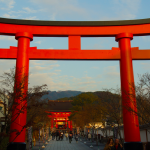
Australia & NZ
- New Zealand North Island
- New Zealand South Island
Europe & USA
- Italy, Germany, Amsterdam
- Switzerland, Paris
Getting ready to travel
- Area Guides
- Unusual Things to Do in Tokyo
- Attractions
- Day Trips from Tokyo
- Cherry Blossoms
- Fall Foliage
- Aquariums and Marine Parks
- Winter Scenery
- Parks & Gardens
- Romantic Spots
- Shrines & Temples
- Unusual Places
- Train Travel
- What to Eat in Japan
- Hiking in Japan
- Health & Beauty
- Study in Japan
- Book Review
- Japanese (Language)
- Travel Stories

Shirakawago Travel Guide: See Timeless Beauty in Central Japan
Shirakawago (also spelled “Shirakawa-go”) is a historic village in Japan known for its thatched-roof farmhouses. The village is located in the mountainous region of Gifu Prefecture and has been designated a UNESCO World Heritage Site.
Why You Need to Visit Shirakawago
Fascinating architecture.

Shirakawago is one of the few places in Japan where you can see traditional farmhouses. They are built in the style of gassho-zukuri, which means “constructed like hands in prayer.” This refers to the triangular shape of the roofs that are designed to shed snow. The way the houses are built in Shirakawago is essential to the people’s survival, as the area experiences harsh winters with heavy snowfall.
Stunning Scenery

Nestled in the Japanese Alps, the farmhouses of Shirakawago create a breathtaking landscape that captivates those who visit. The village looks like a scene out of a fairy tale, with the surrounding mountains and lush forests providing an awe-inspiring backdrop for photos. Fall paints the village in warm hues of red and orange, while winter makes it look like the inside of a snow globe.
Strong Sense of Community

Because of its remote location and the heavy snow that piles up in winter, in the past, Shirakawago was cut off from the rest of Japan for months at a time. There was no way in and out of the village because of the blocked roads and this meant that the villagers only had themselves to rely on for survival. It was out of this intense need that the villagers developed a spirit of helping each other out that they call yui.
The concept of yui is essential to understanding the culture and community of Shirakawago. Yui is the idea of mutual assistance, and it drives members of the local community to collectively work together on activities that benefit everyone in need. One such activity that reflects this is the act of thatching a roof, which usually takes days and around 200 people to finish. Locals take part in these activities not out of obligation, but out of a desire to help one another.
The spirit of yui is still strong in Shirakawago, and it has played an important role in preserving the village’s culture and traditions for centuries. The community spirit that yui embodies allows locals to build a tight-knit bond that helps everyone work together for the common good, no matter how difficult the task may be.
Living History

While some farmhouses in Shirakawago have been transformed into museums for public education, most still function as residential houses. The residents have all agreed not to rent, sell, or destroy their houses, in order to preserve the village’s culture and traditions.
Must-See Attractions
Ogimachi observation area.

The site where Ogimachi Castle once stood, the observation area overlooks the village of Shirakawago. It’s a popular photography spot and there’s also an area where you can get your picture taken and printed on photo paper for a small fee. The observation area is accessible on foot, although many people take the shuttle bus on the way up and then walk on the way down.

The Wada House is one of the thatched-roof farmhouses in Shirakawago that has been transformed into a museum. Built late in the Edo period, it is the largest farmhouse in Shirakawago and reflects centuries-old family legacy and influence. Members of the Wada family were often appointed village headmen and were responsible for ensuring that government regulations were followed as people and goods traveled in or out of Shirakawago. They gained their wealth by producing saltpeter, a key ingredient used to make gunpowder, as well as silk a little later on. It’s said that the level of comfort and upkeep of this traditional gassho-style house reflects the success of the Wada family during their tenure. Visitors today that come to Shirakawa-go are able to see centuries of history gathered within its walls – a majestically preserved reminder of not only typical village life but also a tangible piece of Japanese history.
Minkaen Museum

This beautiful open-air museum showcases preserved gassho-zukuri houses, along with a watermill, a shrine, and a temple’s main hall. You can freely explore the homes’ interior, some of which include an irori , a traditional sunken hearth. If you’re not staying at a gassho-zukuri guesthouse, the houses at Minkaen provide the closest experience.
Staying at a Gassho-Zukuri Farmhouse

If you want to stay in Shirakawa longer and gain a deeper understanding of the local culture, you can opt to stay at a gassho-zukuri farmhouse within the village. There are more than 40 options available, although you can only stay a maximum of one night per house. If you want to stay longer, you’ll have to book a different farmhouse for each night.
Many of these lodgings offer a meal plan along with the stay. You’ll be served two meals—dinner and breakfast. Some of the farmhouses also offer traditional irori -style dining where the meal is cooked in a sunken hearth on the floor.
Rooms may vary, but expect to stay in a tatami room where a futon will be laid at night. As is the case in many traditional lodgings, the bathroom and toilet may be communal. Some of these houses are over 200 years old but rest assured that they’ve been furnished to suit modern life.
An overnight stay at a gassho-zukuri farmhouse in Shirakawago can cost from ¥9,000 to ¥25,000 per person. You can search for rooms in English at Shirakawa-go Tourist Association or Japanese Guest Houses .
Shirakawago and Gokayama
Shirakawago and Gokayama are both villages located in mountainous regions of central Japan. The two share many similarities, as they are both known for their gassho-zukuri style farmhouses constructed with a steep thatched roof. Both settlements were added to the UNESCO World Heritage Sites list in 1995.
The major difference between Shirakawago and Gokayama lies in their geographical location. Shirakawago is located in Gifu prefecture while Gokayama belongs to Toyama prefecture. They are both located along the Shogawa River, with around 10 km of distance between them. Both villages are surrounded by lush green forests and offer breathtaking views of Japan’s remote countryside, but Gokayama is often less crowded than Shirakawago and has more of a laid-back atmosphere to it.
Shirakawago is home to several farmhouses, some of which serve as museums and guest houses. On the other hand, Gokayama has a smaller selection of gassho-zukuri houses, but some of its homes are over 300 years old and still in use today.
Both Shirakawago and Gokayama are great destinations to see unique gassho-zukuri architecture and experience the culture of Japan’s remote countryside. Whether you visit one or both, make sure not to miss out on some of the unforgettable experiences these two villages have to offer.
Best Time to Visit

Shirakawago is beautiful all year round, but many tourist sites and associations market it as a winter destination. The combination of rustic farmhouses and the deep snow that blankets them is a unique sight that can only be witnessed in the winter months, from late December to late March.
If you prefer milder weather, it’s best to visit either in spring (March to May) or fall (October and November). You can catch cherry blossoms for a short period during springtime. Fall colors are easier to catch as they tend to last longer.
The summer months of July and August paint the village a brilliant green and while it is a stunning sight to behold, the heat and humidity may prove to be a challenge for some.
June is usually rainy, so planning a visit would be difficult if you prefer seeing the sun.
Shirakawago in Summer Time (Video)
While Shirakawago is a population wintertime destination, it looks just as stunning in summer. Below is a video of my visit to Shirakawago during the summer of 2022.
Frequently Asked Questions
Absolutely. The gassho-zukuri farmhouses are unique to central Japan. As a living piece of history, Shirakawago also offers a distinctive insight into the traditional Japanese way of life.
Yes, Shirakawago has a permanent population of about 1,600. Many villagers work in agriculture and tourism.
No, entry to the village itself is free. However, some attractions like the Wada House and the Minkaen Museum have small admission fees that help with their upkeep.
The village is beautiful all year round. If you want to see the village blanketed in snow, time your visit sometime between late December and early March. If you want to see cherry blossoms, it’s best to visit from mid-April to mid-May. If you want to see the farmhouses among lush green fields, go around July or August. And if you want to see fall colors, you can catch them between late September to October.
Yes. There are several farmhouses in Shirakawago that allow guests to stay for a maximum of one night per person. These overnight stays usually offer traditional cultural experiences like eating meals cooked using a sunken hearth called irori .
You’ll need at least half a day to explore the major attractions within the village. If you want to immerse yourself in local life, an overnight stay at one of the farmhouses is recommended.
How to Get There
The four easiest access points to Shirakawago are Shin-Takaoka Station in Toyama, Kanazawa Station in Ishikawa Prefecture, Takayama Station in Takayama Prefecture, and Nagoya Station in Nagoya. This is because there are direct buses to Shirakawago from these locations. Depending on where you are before your visit, you’ll need to get to these locations first before you can get to Shirakawago.
To buy tickets, you can book directly from the bus companies via their websites or book from the English aggregate website for highway buses, Japan Bus Online .
If you are traveling from Takayama, you can buy the Gassho Zukuri Minkaen Set from Nohi Bus Center near the station. For ¥4,600, you get to have round-trip bus tickets to Shirakawago, free entrance to the Wada House and the Minkaen Museum, plus a meal from one of the three participating restaurants.
Share this:
- gassho-zukuri
- Shirakawago
Related Posts
Hida furukawa koi canals, shinjuku gyoen cherry blossoms, discovering fukushima city’s culinary gem: enban gyoza at terui, leave a reply cancel reply, stay connected, recent stories, meguro river cherry blossoms promenade, rokai bune: ride a boat through the majestic torii gate of itsukushima shrine.

Never miss a story.
Sign up for the newsletter to get the latest updates, offers, and special announcements
Tokyo Past 3 is a Japan travel and lifestyle blog that features curious travel destinations and cultural stories. © Mizhelle Agcaoili 2021
- Privacy Policy
Popular Categories
- Travel by Area 63
- Unusual Places 40
- Travel Vids 33
- Shrines & Temples 26
- Cherry Blossoms 24
Stay in Touch
To be updated with all the latest news, offers and special announcements.
Discover more from Tokyo Past 3
Subscribe now to keep reading and get access to the full archive.
Type your email…
Continue reading
Winter in Japan: Best Winter Destinations & Top Things to Do...

Travel Guide: Discover the Historic Villages of Shirakawago and Gokayama in Japan
by Aileen Adalid Japan , Natural Sights 19 comments
- Best Hotels in Seoul, South Korea: Cheap & Luxury Accommodations (Per District)
Maximizing Your Miles: Unlock Budget-Friendly Travel Hacks & Tips
- Spanish Food: Top 20 Must-Eat Authentic Local Dishes in Spain (+ Drinks)
- How to Stay Fit While Traveling: 5 Tips That Keep Me in Shape
- 20 of The Coolest Things to Do in Antarctica: The “White Continent”
- Why You Should Avoid Loboc Tarsier Conservation Area in Bohol, Philippines
- Top 10 Reasons to Explore India in The Maharajas Express Luxury Train
- Best Hotels in Boracay, Philippines: From Cheap to Luxury Accommodations and Places to Stay
- Ultimate New Zealand Road Trip Itinerary for 1st-Time Visitors (North & South Island with Wild Kiwi)
- Up Close & Personal with Kimicho, an American Geisha in Tokyo, Japan (Interview)
There is no shortage of picturesque traditional villages in Japan and some of the best from them all would be the UNESCO World Heritage Sites of Shirakawa-gō (白川郷, “White River Old-District”) and Gokayama (五箇山, “Five Mountains”) . (Shirakawago)
Shirakawago is located in Shirakawa in Gifu Prefecture, whilst Gokayama is in Nanto in Toyama Prefecture — however, both are neighboring one another as they lie in the remote Shogawa River Valley. According to UNESCO , what makes these villages special is that they are “outstanding examples of the traditional way of life perfectly adapted to the environment and people’s social and economic circumstances.”
In fact, Shirakawa and Gokayama are famous for their well-preserved and one-of-a-kind clusters of historic farmhouses with steep thatched roofs that are built in the architecture style called as gassho-zukuri (合掌造り). It is said that some of them are even more than 250 years old!
NOTE: Gassho-zukuri roughly means “hands in prayer” and it is derived from how the roof’s shape resembles two hands in prayer. This design has been developed for years to help withstand heavy snow, especially with how the region typically experiences such during winter. Inside these high roofs would be some sort of large attic space wherein people typically use it for sericulture — or the cultivation of silkworms for producing silk.
If you’re more into videos, come and take a peek into the vlog I made below which showcases my visit to Shirakawago! (Starts at time slot 03:42).
» READ: – Japan Itinerary – Chubu Itinerary
Table of Contents
About Shirakawa and Gokayama
To be more specific, the UNESCO World Heritage Sites in Shirakawa and Ogimachi are the 3 historic mountain villages of Ogimachi, Ainokura, and Suganuma which in total make up about 68 hectares (0.68 km 2 ) . They are all strictly protected in order to continue preserving its historic and natural environment.
From these 3, the largest and most popular landmark would be Ogimachi in Shirakawa ; hence, it’s very easy to access from nearby bigger cities. Ainokura and Suganuma in Gokayama are a bit more difficult to access though, but they are surely less crowded.
Wanna tour to Shirakawago?
You can join the following trips below: Day trip from Nagoya 2-Day tour to Shirakawa-Go from Osaka
1. Ogimachi (荻町)

Today, a number of the gassho-zukuri farmhouses have been moved to an open-air museum in Ogimachi in an effort to save them from destruction. This move along with the large concentration of farmhouses, easy access, and other beautiful attractions has made Ogimachi the most well-known village to visit in both Shirakawa and Gokayama.
Here, you can find the following highlights…
- Gassho-zukuri Minkaen : the open air museum area where the relocated farmhouses have been transferred to. ~ Admission: ¥600, open from 8:40AM to 5:00PM .
- Shiroyama Viewpoint: located north of the village, this is the best place for acquiring a great panoramic view over Ogimachi . You can reach this by going through a walking trail from the village center (for about 15-20 minutes), or by a shuttle bus that is found near Wada-ke House. ~ Admission: FREE, closed during heavy snow .
- Wada-ke House: the Wada family is one of the wealthiest families in town, so this former home of theirs is the largest gassho-zukuri farmhouse in town. It now serves as a public museum where you can go in and witness the interior design and the special attic. ( Another house you can check out is Kanda-ke.) ~ Admission: ¥300, open from 9:00AM to 5:00PM .
- Myozenji Temple & House: unlike most temples in Japan, Myozenji is built in gassho-zukuri style. If you come visit, you could also drop by its adjacent house where the priest of the temple lives. ~ Admission: ¥300 entrance to both temple and house, open from 8:30AM to 5:00PM .
- Shirakawago no Yu : this is a place where you can experience onsen (hot spring). It’s also a minshuku (Japanese-style of bed and breakfast) where you can stay overnight. ~ Admission: ¥700 for onsen, open from 7:00AM to 9:30PM .
2. Ainokura (相倉)
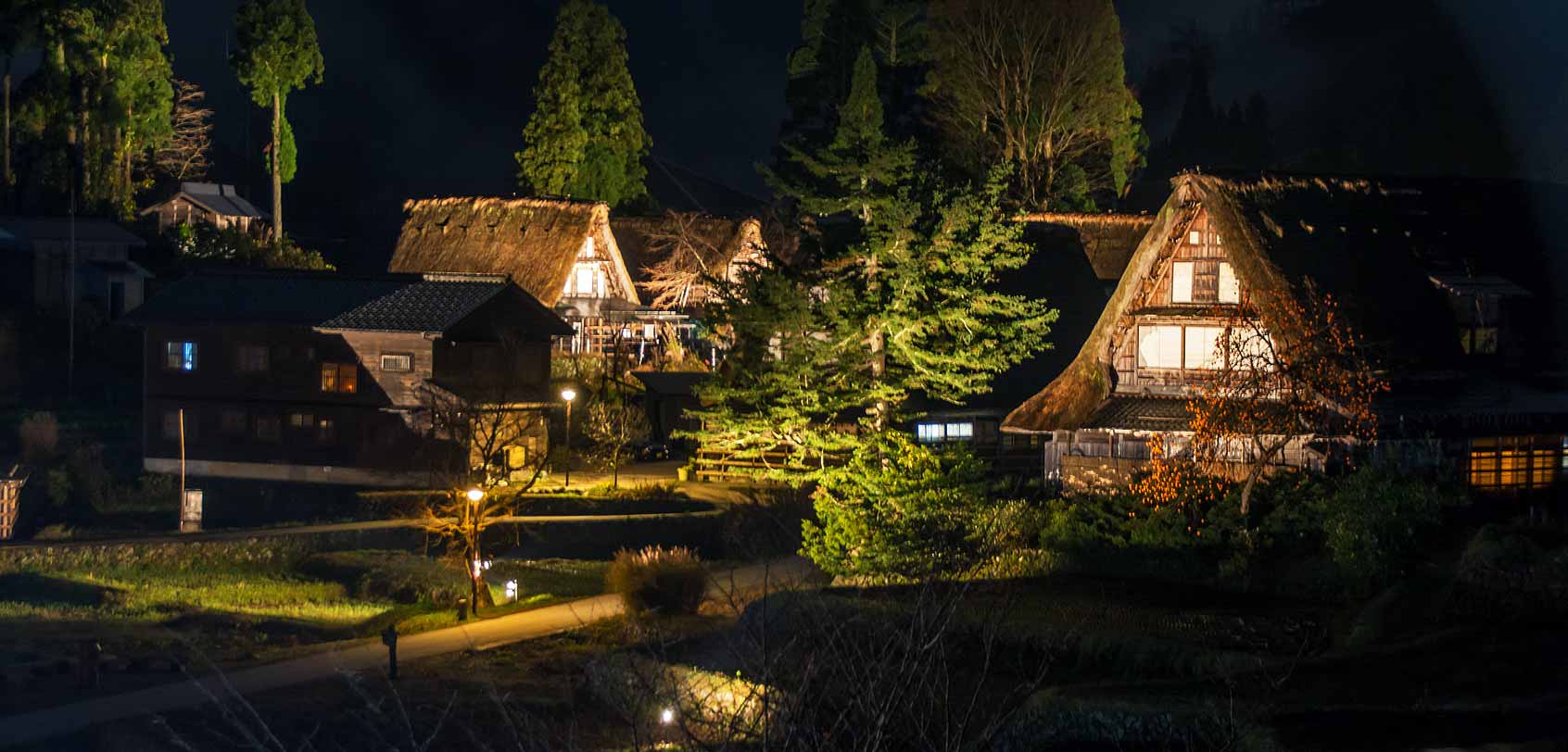
Photo by: Harald Johnsen / CC
This is, by far, the most remote village in the region of Gokayama with nearly 20 gassho-zukuri farmhouses. Being so distant from everything else has its advantages though because in here, they have maintained a lot of their traditional culture.
Some of the interesting things that they are known for here are the sasara and washi paper . Sasara is basically a percussion instrument wherein a hundred of wooden plates are strung together; whereas washi is a style of paper unique to Japan. There are some places in Ainokura where you can watch them make this (or you can also try and make them too!).
As for notable places to see…
- Ainokura Viewpoint: it’s a mere 5 to 10-minute walk up to the mountain wherein the trail starts behind the information office at the parking lot. ~ Admission: FREE .
- Gokayama Washi: this is the place where you can watch how washi paper is made and where you can try making it for your self as well ~ Fee: ¥600 per sheet .
- Ainokura Folk Museum 1 and 2: these are 2 gassho-zukuri farmhouses that have been turned into museums in order to display daily life back in the Edo Period (museum 1) as well as to display the industries in the area (museum 2). ~ Admission: ¥300 for both museums, or ¥200 per building; open from 8:30AM to 5:00PM .
- Murakami-ke House: also a farmhouse that has been turned into a museum; at the end of the tour done by the owner, they will display folk song performances. ~ Admission: ¥300, 8:30AM to 5:00PM .
3. Suganuma
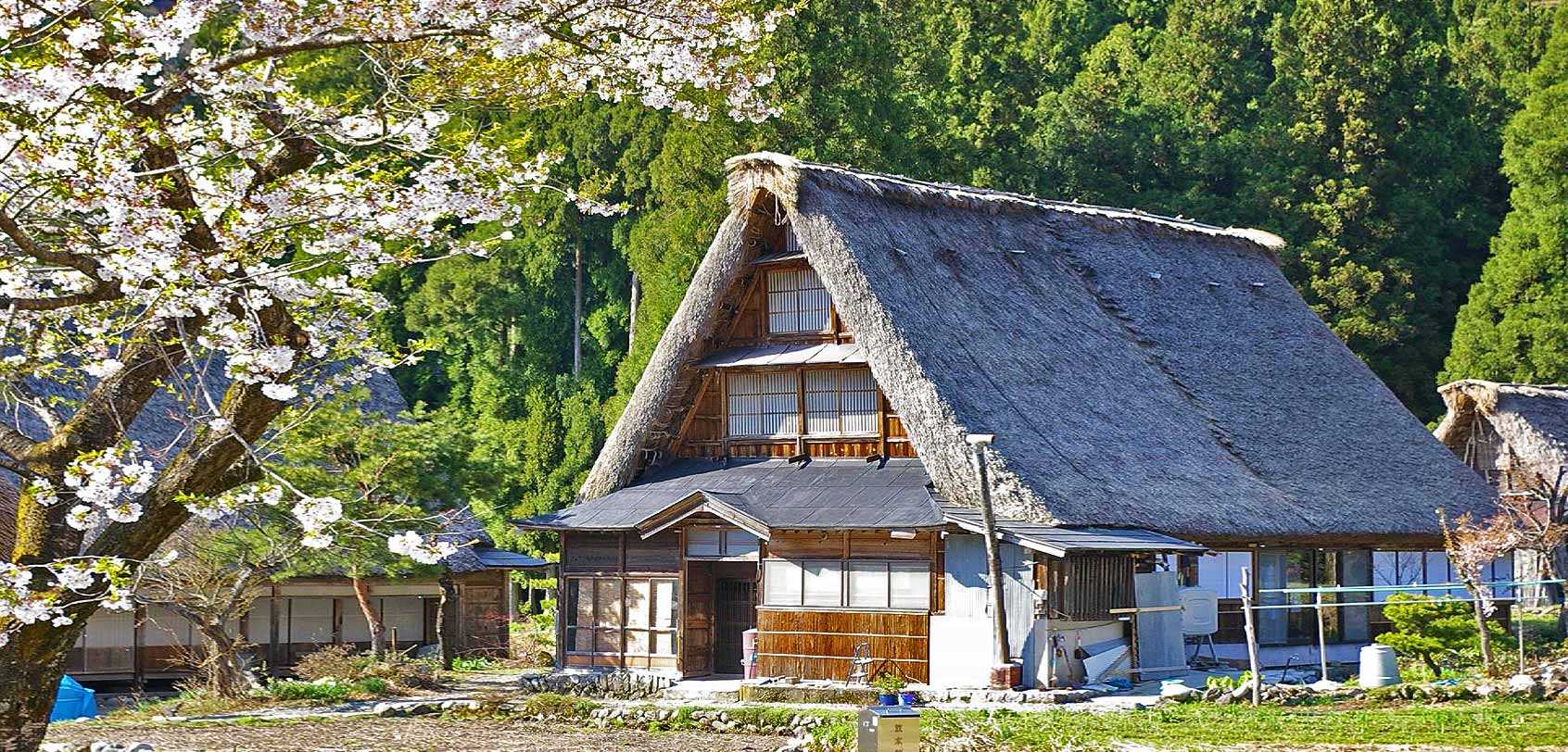
Photo by: tsuda/CC
This village has 9 gassho-zukuri farmhouses and it is made up of 2 areas: Suganuma Village and Gokayama Gassho no Sato that are connected by a tunnel. The latter is where farmhouses were relocated, so no one lives in these houses and are rather used by local school groups who want to experience staying overnight in a gassho-zukuri farmhouse.
- Iwase-ke House: this is the biggest gassho-zukuri farmhouse in Gokayama, in which the 1st floor rooms were used to entertain visiting feudal lords. ~ Admission: ¥300, 8:00AM to 5:00PM .
- Saltpeter Museum: saltpeter is an ingredient used for making gunpowder and this used to be a booming industry in Gokayama during the Edo Period. ~ Admission: ¥300, 9:00AM to 4:00PM .
- Folk Museum: displays tools and household items that are typically used in the region. ~ Admission: ¥300, 9:00AM to 4:00PM
Other Top Must-Dos
1. stay overnight in a gassho-zukuri farmhouse.
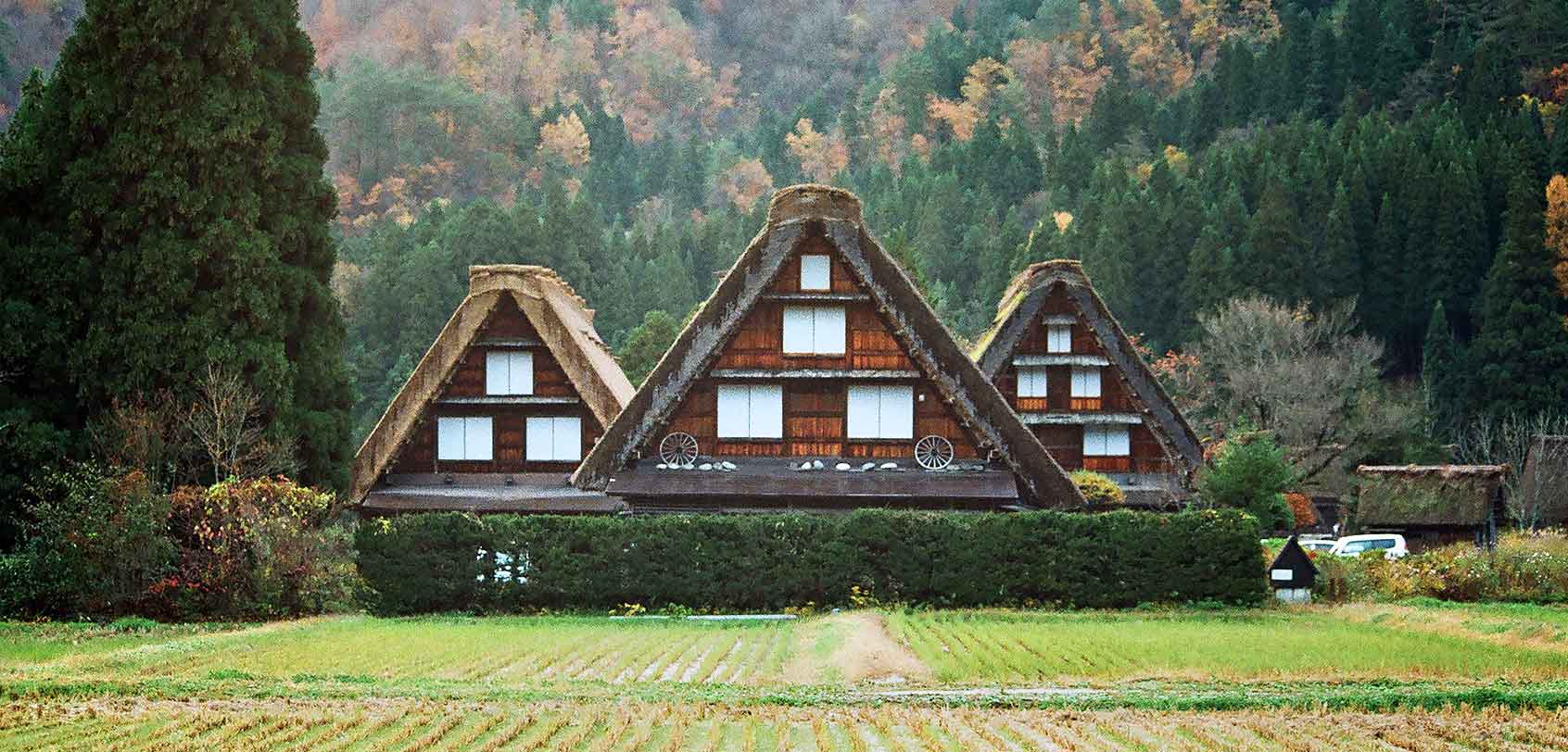
Photo by: Bryan / CC
There are a lot of gassho-zukuri farmhouses — mostly in Ogimachi village — that have been converted into minshuku or family-run bed-and-breakfasts, and if you were to ask around, for sure they would recommend that you experience staying over in a minshuku so that you can get to have a closer look into a traditional Japanese home’s simple way of living.
Most of the time, the guest rooms come with tatami mat floors in which a futon (mattress laid on the floor) will be where you would sleep for the night. Typically, one night would cost about ¥8,000 to ¥9,000 per person and that already includes breakfast and dinner.
However, due to the popularity of this experience, it can be hard to make reservations. Either way, you can try to do so via the local tourist association or via this website.
2. Visit during every season!
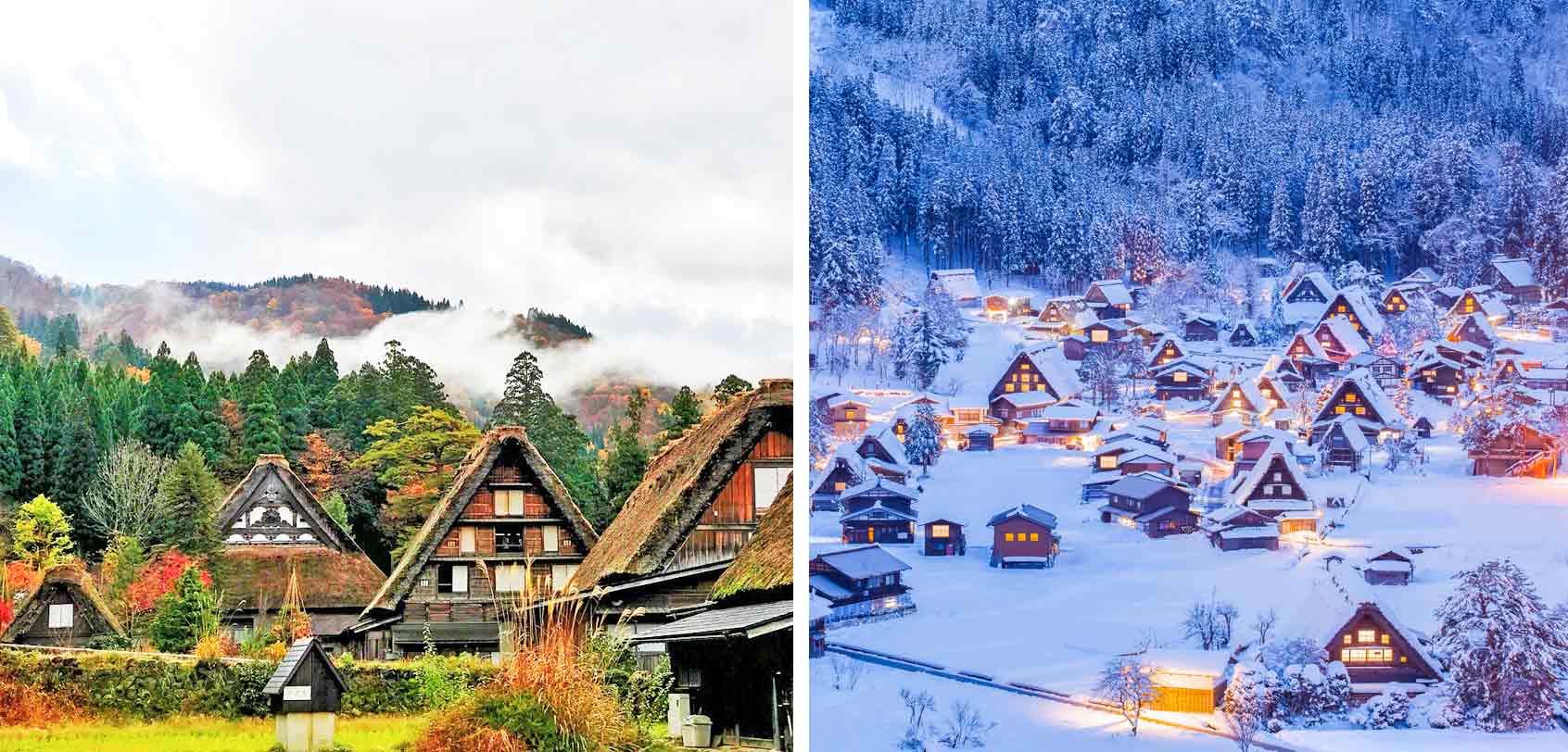
Shirakawago and Gokayama ‘s beauty radiates in EVERY season — may it be spring ( sakura or cherry blossom season ), summer, autumn or winter.
Though if you would only have to choose one, I would highly suggest visiting in winter during the famous Shirakawa-go Winter Light-Up! As I’ve mentioned before, snowfall in this region can get pretty intense and Ogimachi village in particular usually gets covered in 1 to 2 meters of snow; with this, it has made the town into its own unique winter wonderland.
In select Sunday and Monday evenings in January and February, the village organizes such a special illumination event for visitors in which many of the gassho-zukuri farmhouses are given light from 5:30 to 7:30. (For the schedule, see here ).
To best view this spectacle, the Shiroyama Viewpoint is the best spot — but take note that it can get very crowded. With the walking trail closed during this affair, the only way to access the viewpoint will be via a shuttle bus near Wada-ke House. It leaves before 5:30PM and you can purchase tickets on a first-come-first-serve basis from 4:30PM at the nearby JA parking lot for ¥500.
TIP: If you can manage to book an overnight stay in the village during the event, tickets will first be offered to you before everyone else. It also helps to note that if you’re traveling here… . ~ By private car : winter tires are important; and unfortunately, the parking lot will be closed during the event. You can park in Terao Temporary Parking Lot in which a shuttle bus will connect you to the village. Still and the same, it might be hard to get space in the bus. ~ By regular bus : if you’re not coming with a tour bus, the regular buses that travel here stop running before 7:30PM. On a Monday, there are 2 trips on 7:40PM and 8:30 that will take you back to Takayama. Reservations beforehand are absolutely required!
Travel Guide
» how to get to shirakawago.
Ogimachi village is the center of all transport to Shirakawa and Gokayama and buses are the main transportation.
To get to the other 2 villages in Gokayama, you just need to ride the bus that travels from Shirakawago to Shin-Takaoka Station. For Ainokura, the bus stop is called Ainokura-guchi (¥1,300 from Shirakawago) and for Suganuma, it’s Suganuma-guchi (¥860 from Shirakawa-go). For timetable, see here .
To get to Ogimachi village…
From Tokyo. Ride the Hokuriku Shinkansen to Toyama (¥12,500 one way) and transfer to the bus that goes to Shirakawago (¥1,700 one way).
From Nagoya. Ride the JR Hida limited express train to Takayama (¥6,000 one way), and then…
From Takayama. Ride the hourly buses going to Shirakawago. It will take about an hour for ¥2,470 one way (¥4,420 roundtrip) and it’s best to reserve beforehand (though not all buses require reservations).
If you need further help, just use the directions feature in Google Maps — I find this as a very helpful tool if I want to reach a certain place from a particular location. (However, Google Maps doesn’t work offline if you want routes or transportation schedules, so I recommend that you get a pocket WiFi or a SIM Card to stay connected online).
» Where to Stay (Accommodations) in Shirakawago
To stay in one of the gassho-zukuri farmhouses, you can book via the local tourist association or via this website.
For accommodations in Takayama… Budget : J-Hoppers Hida Takayama Guest House / Mid-Range : Best Western Hotel Takayama or AirBnB / Luxury : Honjin Hiranoya Kachoan
» Helpful Japanese Phrases
Hello: Konnichiwa ( Kohn-nee-chee-wah ) Thank you (normal): Arigatō. ( Ah-REE-gah-tohh ) Thank you (less formal): Arigatō gozaimas (Ah-REE-gah-tohh goh-zahy-mahs) Thank you (informal): Dōmo (DOHH-moh) Yes: Hai (Hai) No: Iie (E-eh) Goodbye (long term): Sayōnara (Sah-yohh-nah-rah) Goodbye (informal): Ja ne (Jahh neh)
Excuse me: Sumimasen (Soo-mee-mah-SEN) I’m sorry: Gomen nasai (Goh-men-nah-sahy) Is there someone here who speaks English?: Dareka eigo ga hanasemasu ka? (Dah-reh-kah ey-goh gah hah-nah-seh-mahs kah?) Help!: Tasukete! (Tahs-keh-teh!) Cheers!: Kanpai! ( Kan-pie!)

Dropping by these historic villages of Shirakawago and Gokayama is sure to be an amazing experience that will give you a closer look into another side of Japan’s traditional communities.
Not to mention, this is yet another outstanding UNESCO site that you can check off from your list!
Have you seen my latest vlog?

Hey there! I am Aileen Adalid. At 21, I quit my corporate job in the Philippines to pursue my dreams. Today, I am a successful digital nomad (online entrepreneur, travel writer, & vlogger) living a sustainable travel lifestyle.
My mission? To show you how it is absolutely possible to create a life of travel no matter the odds — and I will help you achieve that through my detailed travel hacks, guides, resources, tips, and MORE!
Follow Along
CURRENTLY BASED IN: The Philippines
- 100k Followers
- 51k Followers
- 80k Followers
- 10k Followers
- 23.1k Followers
Join over 1 million readers worldwide and get my FREE packing checklist, gain exclusive access to travel giveaways and more!
Success! Next, please check your email to confirm your subscription.
GET FREE PRINTABLE NOW!
Trending Now
Top 10 things to do on a trip to south america.
South America is one of the most diverse continents — full of natural wonders and fascinating cultures. Join us as we explore the top 10 things to do.
Top 10 Things to Do for Your First Tibet Travel
Make the most of your Tibet travel with these top 10 must-do activities, from exploring ancient monasteries to trekking mountains!
Geisha of Japan: Understanding the Facts, History & Myths
Japan’s geisha are cloaked in mystery & secrecy resulting in a number of false ideas about them — so let’s get the facts straight!
Start traveling smart! Take note of these travel hacks that will help you in maximizing your miles or do points hacking.
EU261 Compensation: Your Essential Guide on European Flight Delays or Cancellations
Learn to claim EU261 compensation for flight disruptions like delays, cancellations, downgrades, or denied boarding!
Latest Posts
Learn Today
How to start a successful blog, 19 comments.
Great insight into these villages! Looks like a wonderful place to visit and relax no matter what time of year it is. Thank you for sharing and continue to live unstoppable! Cheers, Rhonda
Hope you get the chance to visit :D
I felt very refreshed after reading your article. Thanks for sharing. I will soon make my plan to visit Japan.
Hai Aileen,
i’m planning for my trip this Nov. can you suggest between Shirakawago and Gokayama which one is the best experince. If Shirakawago, i will booking my hotel in Takayama, and if Gokayama, my hotel will be in Toyama. After visiting either Shirakawago or Gokayama, i will continue my journey to Kanazawa. I will be using Takayama-Hokuriku Pass for this journey.
It will depends on what you’re looking for: do you want something more compact and less from the crowd? Then Gokayama’s 2 UNESCO villages will be suited for you. But it helps to note that there’s not a lot to see there, compared to Shirakawa-go’s Ogimachi village — which is larger and has more gassho-zukuri houses.
I suggest that if you have a day free, you can actually visit both places. But if you want to concentrate on just one, I personally would pick Shirakawa-go’s Ogimachi. Plus, you get to stay in Takayama — a place that I loved because it reminded me a lot of Kyoto! (See my post here: https://iamaileen.com/things-to-do-in-takayama-travel-guide-hida-chubu-japan/ )
the villages are really beautiful
Yeah, I really loved this place!
Those villages in Japan look absolutely beautiful. And you are right. It’s not just how amazing they are during one time of the year. They seem to be amazing on all different types of the year. I really like Omigachi. Just so lovely.
You’ll really love it, David!
Submit a Comment Cancel reply
Your email address will not be published. Required fields are marked *
Be notified of follow-up comments by email
Be notified of new posts by email
Submit Comment
Pin It on Pinterest

IMAGES
VIDEO
COMMENTS
WHAT'S' NEW News from tourist association. Shirakawago Gassho-zukuri Village, which is registered as a The World Heritage Site, has over 100 large and small-size of Gassho-zukuri building, and it is known as a village where people are live their lives and continuing existence the traditional way of life.
Shirakawa-go, meaning White River Old District is a popular village set in the Gifu prefecture of Central Japan. It features traditional thatched houses called the Gassho-Zukuri that are believed to have been built in the late 17th century. Inspired by the build of the steep roofs, Gassho-Zukuri means "constructed like hands in prayer" as ...
白川郷観光協会 Shirakawa-go Tourist Association. 1,784 likes · 292 talking about this · 28 were here. (一社)白川郷観光協会公式アカウントです。 白川郷と言えば世界遺産の合掌集落ですが、おすすめスポットは他にもたくさんあります。白川村全域の魅力や周辺観光情報をお伝えしていきます。
"Shirakawa-go(village)" is well known as a World Heritage Site. The living culture of the village with the symbol of Gassho-house has been recognized as a UNESCO World Heritage. Behind the creation of this unique living culture is the rich and harsh natural environment of Shirakawago.
Start at Ogimachi. Shirakawa-go Ogimachi is the largest hamlet of gassho-zukuri style houses in Japan. The name gassho-zukuri literally means "like praying hands." Each house is a masterpiece of carpentry. They are built without nails—every beam slots neatly into the next. The structure is so sound that these houses have stood since the 1800s ...
The Shirakawa-go (白川郷, Shirakawagō) and neighboring Gokayama (五箇山) regions line the Shogawa River Valley in the remote mountains that span from Gifu to Toyama Prefectures.Declared a UNESCO world heritage site in 1995, they are famous for their traditional gassho-zukuri farmhouses, some of which are more than 250 years old.. Gassho-zukuri means "constructed like hands in prayer ...
To get to Shirakawa-go from Tokyo, you have a few options: Train to Toyama then bus to Shirakawa-go: Take the Hokuriku Shinkansen from Tokyo to Toyama, which takes about 2 to 2.5 hours. From Toyama Station, head to the bus terminal and take a bus to Shirakawa-go. This bus journey takes about 1.5 hours.
The Shirakawago Tourist Association provides information in regard of stay the night in Shirakawago. Gifu Prefecture. Shirakawago sightseeing. Event information ... Shirakawa-goTourist Association. Briefly about Shirakawa-go; Access; FAQ; Contact; Shirakawa-go weather; Announcements&Events; LANGUAGES.
As a requirement, everyone must make an advanced reservation to gain access to the village during the light-up events. For more details and up-to-date information on the 2024 event, be sure to make a reservation in advance through the Shirakawa-go Tourist Association website. 2024 38th Shirakawa-go Winter Illumination Event
This observatory offers a panoramic view of the entire Shirakawa-go village, which is often featured in advertisements and brochures. Located in the northwest section of the Ogimachi Castle Ruins, a typical medieval mountain castle with steep cliffs, it is accessible within a 20-minute walk from the Shirakawa-go Gassho Village or a 10-minute shuttle bus ride.
The village consists traditional houses with thatched and steep roofs called Gassho-Zukuri. "Shirakawago" is roughly divided into two areas: Shirakawago in Gifu prefecture and Gokayama (五箇山) in Toyama prefecture. The Gassho-zukuri villages in the two areas have been added to the UNESCO World Heritage list in 1995.
Ogimachi (荻町) is the largest village and main attraction of Shirakawa-go.Declared a UNESCO world heritage site in 1995, the village is home to several dozen well preserved gassho-zukuri farmhouses, some of which are more than 250 years old.. The farmhouses are quite amazing structures, designed to withstand the harsh winters while providing a place to work and live, and are best seen ...
Shirakawa-go is a World Heritage Site located in Japan's Gifu Prefecture. The traditional homes feature distinct thatched roofs that are steeply pitched (gassho-zukkuri), creating a beautiful rural landscape. According to Shirakawa-go Tourist Association's website, this area has 40 accommodation facilities divided into the following four ...
Shirakawa-go is a World Heritage Site in Gifu, renowned for its scenery with traditional thatched roof homes. ... Please refer to the details on the Shirakawa-go Tourism Association's website to learn how to book a stay for 2024. You can also book a tour that includes the 2024 light-up from the activity booking site Klook.
Shirakawa-go. The hour-long bus ride from Takayama to Shirakawa-go took us through the mountainous region in Gifu. Upon arrival, visitors must first cross a long suspension bridge above, and pass through the gate below to enter the village. The beautiful Gassho-zukuri farmhouses was built in the Edo period more than 200 years ago.
You can search for rooms in English at Shirakawa-go Tourist Association or Japanese Guest Houses. Shirakawago and Gokayama. Shirakawago and Gokayama are both villages located in mountainous regions of central Japan. The two share many similarities, as they are both known for their gassho-zukuri style farmhouses constructed with a steep thatched ...
To get to the other 2 villages in Gokayama, you just need to ride the bus that travels from Shirakawago to Shin-Takaoka Station. For Ainokura, the bus stop is called Ainokura-guchi (¥1,300 from Shirakawago) and for Suganuma, it's Suganuma-guchi (¥860 from Shirakawa-go). For timetable, see here. To get to Ogimachi village….